Superyacht Market Entry – Workshop 1 (Introduction to the Superyacht Industry)

The Appleton Greene Corporate Training Program (CTP) for Superyacht Market Entry is provided by Ms. Uoti-Vaisanen Certified Learning Provider (CLP). Program Specifications: Monthly cost USD$2,500.00; Monthly Workshops 6 hours; Monthly Support 4 hours; Program Duration 12 months; Program orders subject to ongoing availability.
If you would like to view the Client Information Hub (CIH) for this program, please Click Here
Learning Provider Profile

Following a successful career working onboard some of the world’s largest superyachts, Ms. Uoti-Vaisanen undertook an MBA in Business Management and started TUVYC consulting 10 years ago. Combining Ms. Uoti-Vaisanen’s first-hand experience of working within this extremely affluent, niche sector, with her passion for business strategy and mentoring, Ms. Uoti-Vaisanen built a business around market entry to the superyacht industry.
Supporting companies of all sizes, Ms. Uoti-Vaisanen has now helped to bring a hugely diverse range of products and services into the superyacht industry. Ms. Uoti-Vaisanen will support you to plan, prepare and strategically enter the sector with robust research and analysis that is comparable and relevant to your own business. We engage each company’s work force and help them to produce future proof action plans and set up detailed reporting structures whilst assisting with top level business decisions.
MOST Analysis
Mission Statement
Discover the inner workings of the superyacht industry. Its past, present, and future.
Gain expert knowledge and statistics on key industry stakeholders including the yacht builders and the ultra-high-net-worth-individuals that own them.
Get realistic insight into this affluent market’s growth potential and business drivers and be ahead of the curve in understanding where it is going.
Objectives
01. Find Your Superyacht Opportunity: departmental SWOT analysis; strategy research & development. Time Allocated: 1 Month
02. SYC History of the Superyacht Industry: departmental SWOT analysis; strategy research & development. Time Allocated: 1 Month
03. SYC Present Superyacht Market Situation
: departmental SWOT analysis; strategy research & development. Time Allocated: 1 Month
04. SYC Superyacht Market Outlook: departmental SWOT analysis; strategy research & development. Time Allocated: 1 Month
05. SYC Superyacht Industry Stakeholders
: departmental SWOT analysis; strategy research & development. Time Allocated: 1 Month
06. SYC UHNWI Clientele: departmental SWOT analysis; strategy research & development. Time Allocated: 1 Month
07. SYC Driving Forces of the Superyacht Industry: departmental SWOT analysis; strategy research & development. 1 Month
08. SYC Superyacht Etiquette: departmental SWOT analysis; strategy research & development. Time Allocated: 1 Month
09. SYC Superyacht Industry Hubs: departmental SWOT analysis; strategy research & development. Time Allocated: 1 Month
10. SYC Driving Forces of the Superyacht Industry: departmental SWOT analysis; strategy research & development. Time Allocated: 1 Month
Strategies
01. Find Your Superyacht Opportunity: Each individual department head to undertake departmental SWOT analysis; strategy research & development.
02. SYC History of the Superyacht Industry: Each individual department head to undertake departmental SWOT analysis; strategy research & development.
03. SYC Present Superyacht Market Situation
: Each individual department head to undertake departmental SWOT analysis; strategy research & development.
04. SYC Superyacht Market Outlook: Each individual department head to undertake departmental SWOT analysis; strategy research & development.
05. SYC Superyacht Industry Stakeholders
: Each individual department head to undertake departmental SWOT analysis; strategy research & development.
06. SYC UHNWI Clientele: Each individual department head to undertake departmental SWOT analysis; strategy research & development.
07. SYC Driving Forces of the Superyacht Industry: Each individual department head to undertake departmental SWOT analysis; strategy research & development.
08. SYC Superyacht Etiquette: Each individual department head to undertake departmental SWOT analysis; strategy research & development.
09. SYC Superyacht Industry Hubs: Each individual department head to undertake departmental SWOT analysis; strategy research & development.
10. SYC Driving Forces of the Superyacht Industry: Each individual department head to undertake departmental SWOT analysis; strategy research & development.
Tasks
01. Create a task on your calendar, to be completed within the next month, to analyze Find Your Superyacht Opportunity.
02. Create a task on your calendar, to be completed within the next month, to analyze SYC History of the Superyacht Industry.
03. Create a task on your calendar, to be completed within the next month, to analyze SYC Present Superyacht Market Situation
.
04. Create a task on your calendar, to be completed within the next month, to analyze SYC Superyacht Market Outlook.
05. Create a task on your calendar, to be completed within the next month, to analyze SYC Superyacht Industry Stakeholders
.
06. Create a task on your calendar, to be completed within the next month, to analyze SYC UHNWI Clientele.
07. Create a task on your calendar, to be completed within the next month, to analyze SYC Driving Forces of the Superyacht Industry.
08. Create a task on your calendar, to be completed within the next month, to analyze SYC Superyacht Etiquette.
09. Create a task on your calendar, to be completed within the next month, to analyze SYC Superyacht Industry Hubs.
10. Create a task on your calendar, to be completed within the next month, to analyze SYC Driving Forces of the Superyacht Industry.
Introduction
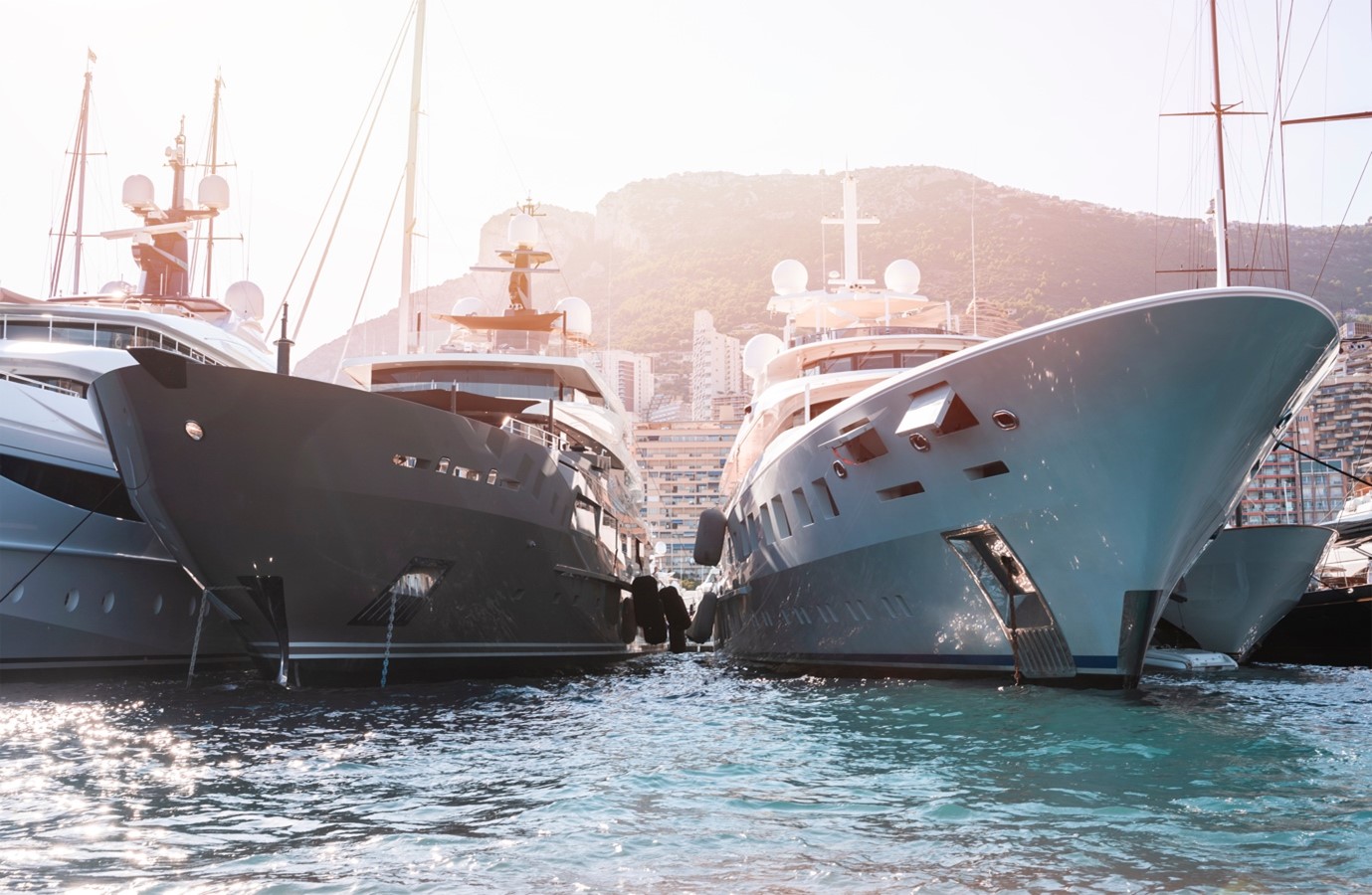
During our initial workshop, we will delve into the intricacies of the superyacht industry, exploring its historical development, current state, and likely future.
You will have the opportunity to acquire specialized information and data regarding significant industry players such as yacht manufacturers and their extremely wealthy owners.
By gaining practical knowledge about the growth potential and driving forces of this prosperous market, you will be able to stay ahead of the game and better comprehend its trajectory.
The superyacht industry presents a unique opportunity for those looking to make their mark in the world of luxury travel and leisure.
To seize this opportunity, it is crucial to understand what sets superyachts apart from other vessels and how to navigate this exclusive market.
In this workshop, you will gain an in-depth understanding of the specifications, designers, shipyards, and typical uses that define a superyacht.
You will also learn that not all superyachts are created equal, and how to differentiate between them based on various factors such as design, amenities, and performance.
Acquiring the correct descriptive terminology is key to positioning yourself as an expert in this field and being able to hold professional discussions with the key players in the industry, including owners, captains, crew, and decision makers.
With this knowledge, you will be able to identify your opportunity in the superyacht industry and take the necessary steps to achieve success in this dynamic and exciting field.
Throughout the course, you will participate in targeted exercises aimed at identifying your ideal opportunities within the superyacht industry.
These exercises will challenge you to consider various opportunities and determine which ones are most suitable for your business.
You will prioritize these opportunities based on how well they align with your business objectives, with the most promising opportunities ranked highest.
You will explore any necessary modifications to your proposition that would appeal to your target sectors. This will allow you to tailor your offerings to better meet the needs and preferences of potential clients in the superyacht industry.
You will evaluate the size of the commercial opportunity presented by each identified idea. This will help you determine which opportunities are worth pursuing and which may not be as lucrative.
These exercises will provide you with a comprehensive understanding of the superyacht industry and help you identify and prioritize the most promising opportunities for your business.
HISTORY
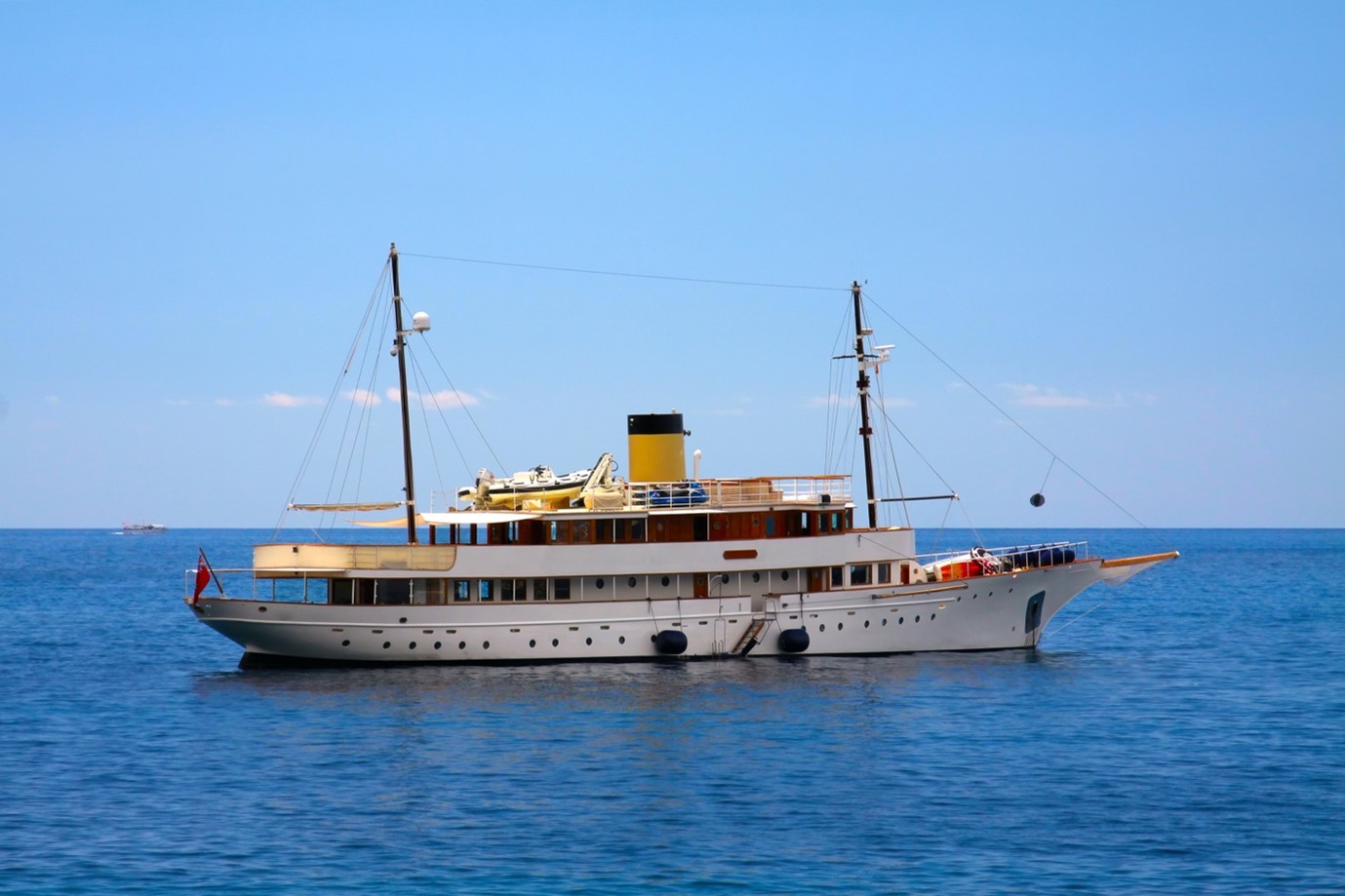
The superyacht industry has a rich history, and understanding its evolution is crucial to establishing a successful presence within it.
This workshop aims to provide you with understanding of the industry’s history and equip you with the skills to craft your own compelling backstory.
You will delve into the birth and development of the superyacht industry, exploring its evolution from humble beginnings to its status as a global phenomenon.
Along the way, you will learn about the pioneers who were instrumental in the industry’s growth, including the engineers, buyers, and enthusiasts who helped shape it into what it is today.
Furthermore, you will explore the onshore support businesses that emerged to support the superyacht industry, including the key players who have contributed to its success.
By understanding the roots of this industry, you will be better positioned to navigate its current landscape and identify opportunities for growth and development.
With this knowledge, you will be able to articulate why your proposition is uniquely suited to help clients write the next chapter in their superyacht story.
As you explore opportunities within the superyacht industry, you will engage in targeted exercises aimed at helping you consider several key factors.
You will consider the people who have been instrumental in the industry’s growth and development. You will assess whether you have any common ground with the early innovators or pioneers in the industry and identify ways to build on this shared history.
You will examine your business’s experience with the various technologies that are essential to the superyacht industry. You will evaluate whether your business has new solutions to old problems and how you can leverage this expertise to meet the industry’s evolving needs.
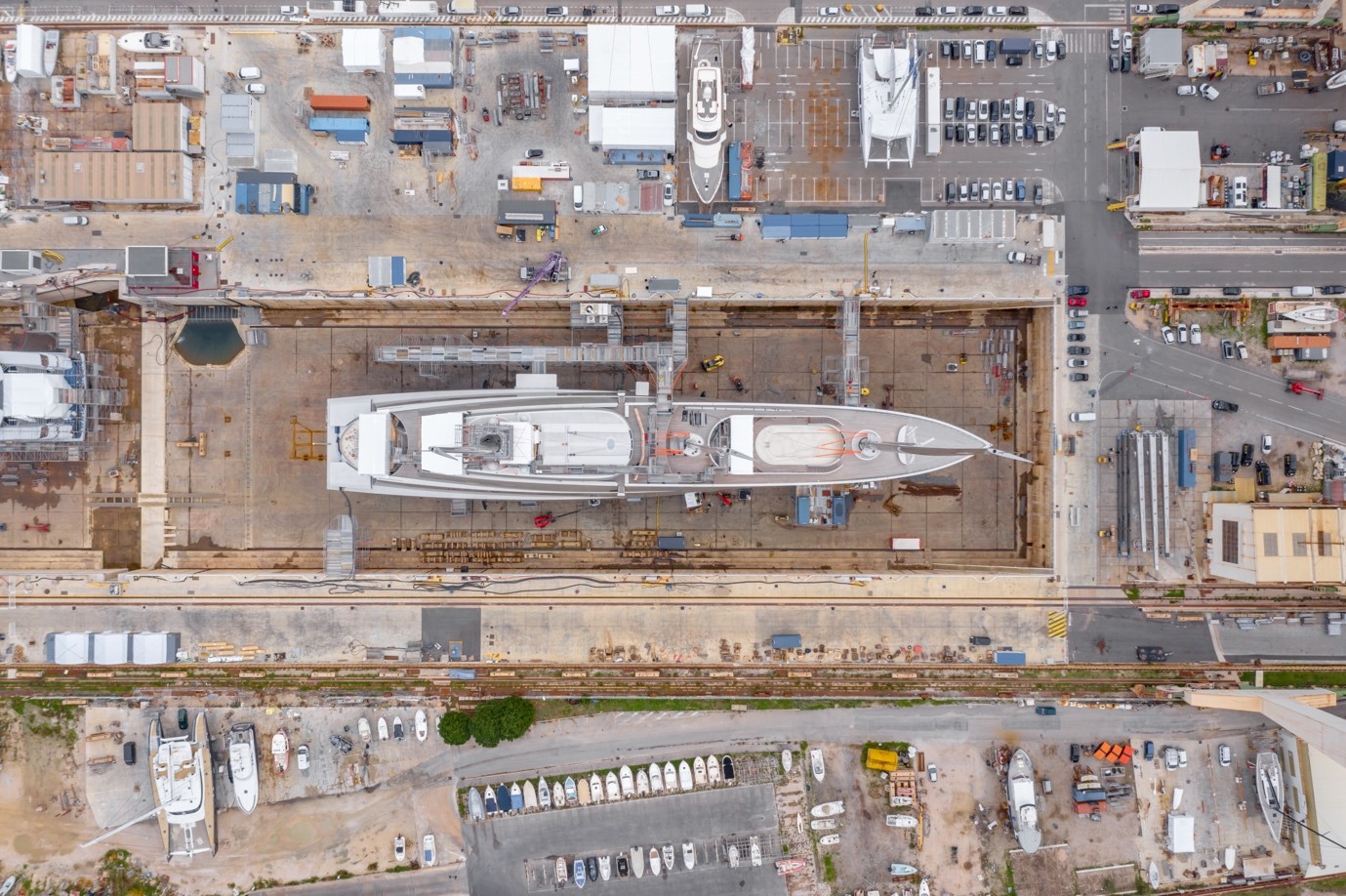
You will also consider the main locations where the superyacht industry operates and assess whether you have experience working in or with these locations. This will help you identify opportunities to build on your existing network and establish a foothold in new markets.
You will explore the motivations behind your business’s activities and assess whether there is a shared backstory with the superyacht world. By understanding your business’s values and objectives, you will be better positioned to create a compelling proposition that resonates with potential clients in the industry.
These exercises will help you consider the key factors that are essential to success within the superyacht industry, allowing you to identify and pursue the most promising opportunities for your business.
CURRENT SITUATION
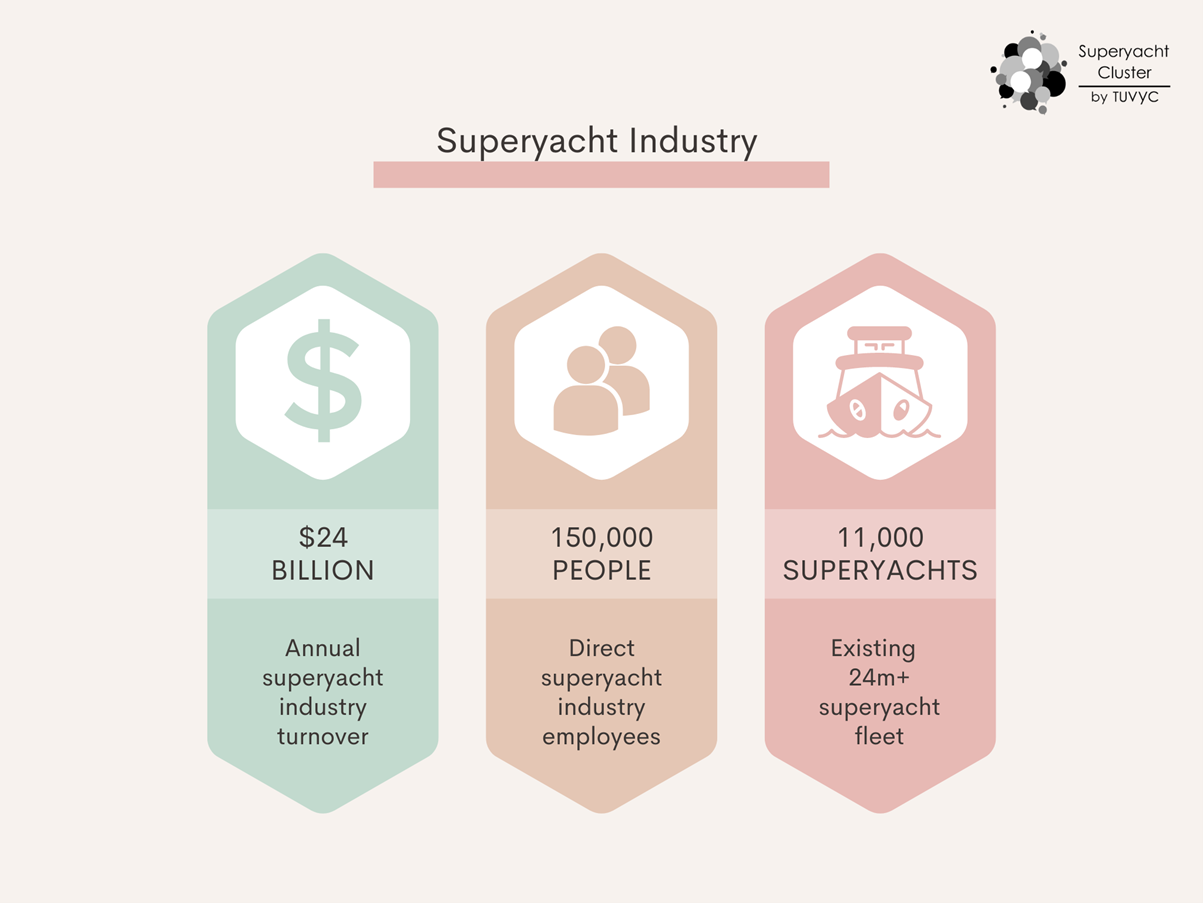
As you explore the superyacht industry, it is important to understand the present market situation and identify the sectors that offer the greatest opportunities for your business.
In this workshop, you will examine the latest facts and figures on the global order books for superyachts and learn how to access this information for yourself.
You will also explore the split between private and charter superyachts, and how this affects the market.
You will delve into the new build and refit sectors of the industry, and gain insight into the buying power of each and how they differ. This will help you understand the dynamics of the industry and the key players involved.
You will gain access to impartial data on how the superyacht industry has continued to grow even throughout the recent pandemic. You will learn about the reasons why the superyacht industry is considered one of the most stable luxury markets and how this presents opportunities for your business.
By understanding the present market situation of the superyacht industry, you will be better equipped to identify the most promising sectors and opportunities for your business to pursue.
To effectively appeal to the different sectors within the superyacht industry, it is important to understand the unique characteristics and needs of each group.
When it comes to new build versus retrofit, you may want to focus on the benefits of each option. For new builds, you could emphasize the opportunity for customization and the latest technology and design trends. For retrofits, you could highlight the potential cost savings and the opportunity to breathe new life into an existing vessel.
Similarly, when targeting the charter versus private sectors, you may want to tailor your approach accordingly.
For private owners, you could emphasize the benefits of ownership and the opportunity for personalization.
For the charter market, you could focus on the potential for generating revenue and the unique experiences that can be offered to charter guests.
If your business has synergies with individual shipbuilders, you could leverage these connections to build relationships and potentially secure partnerships. By highlighting your shared values and goals, you may be able to create mutually beneficial opportunities for collaboration.
It is also important to consider the established operations in the shipbuilding nations and how you could leverage these resources to your advantage. By tapping into local knowledge and expertise, you may be able to streamline your operations and access resources that are unique to each region.
OUTLOOK
To achieve growth in the superyacht industry, it is important to understand the market outlook and identify emerging opportunities.
In this workshop, we will provide you with insight into predicted growth areas and where the industry is heading. By understanding existing subsectors that continue to see growth and stability, as well as new sectors making waves, you can carve an innovative path and focus your energy on growth areas.
Additionally, we will help you stay ahead of new trends and understand how to adapt your products and services to synergize with where the market is heading.
With this knowledge, you can position your business to capitalize on emerging opportunities and stay competitive in a constantly evolving industry.
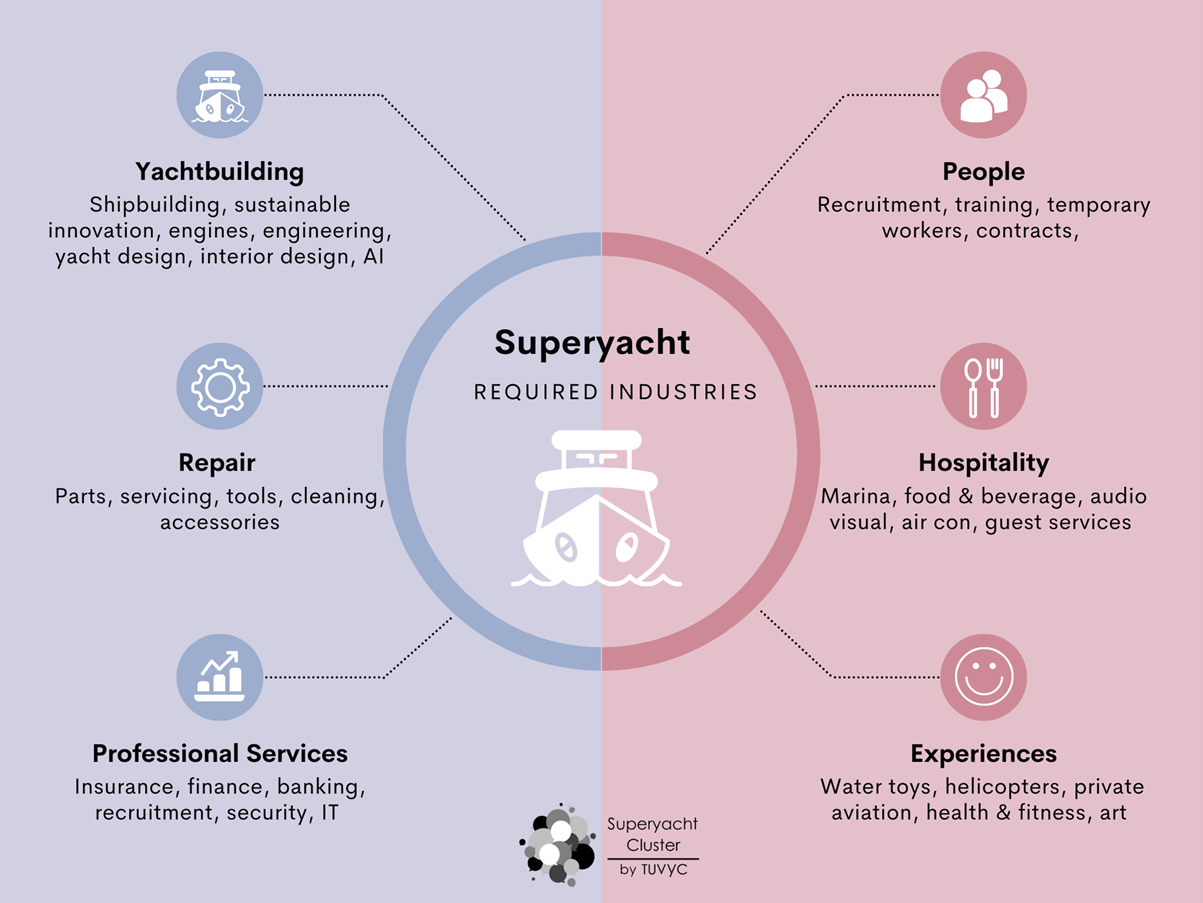
To compete with established players in the superyacht industry, it is important to identify areas where you can differentiate yourself and offer unique value propositions.
To achieve this, you may need to adopt new technologies or develop innovative solutions that set you apart from the competition. By leveraging emerging technologies and solutions, you can streamline your operations, improve efficiency, and deliver superior customer experiences.
Identifying areas of opportunity and developing new solutions that align with market trends and customer demands can help you gain a competitive advantage and establish yourself as a leader in the superyacht industry.
It is essential to remain agile and open to new ideas and innovations to stay ahead of the competition and meet the evolving needs of the market.
STAKEHOLDERS
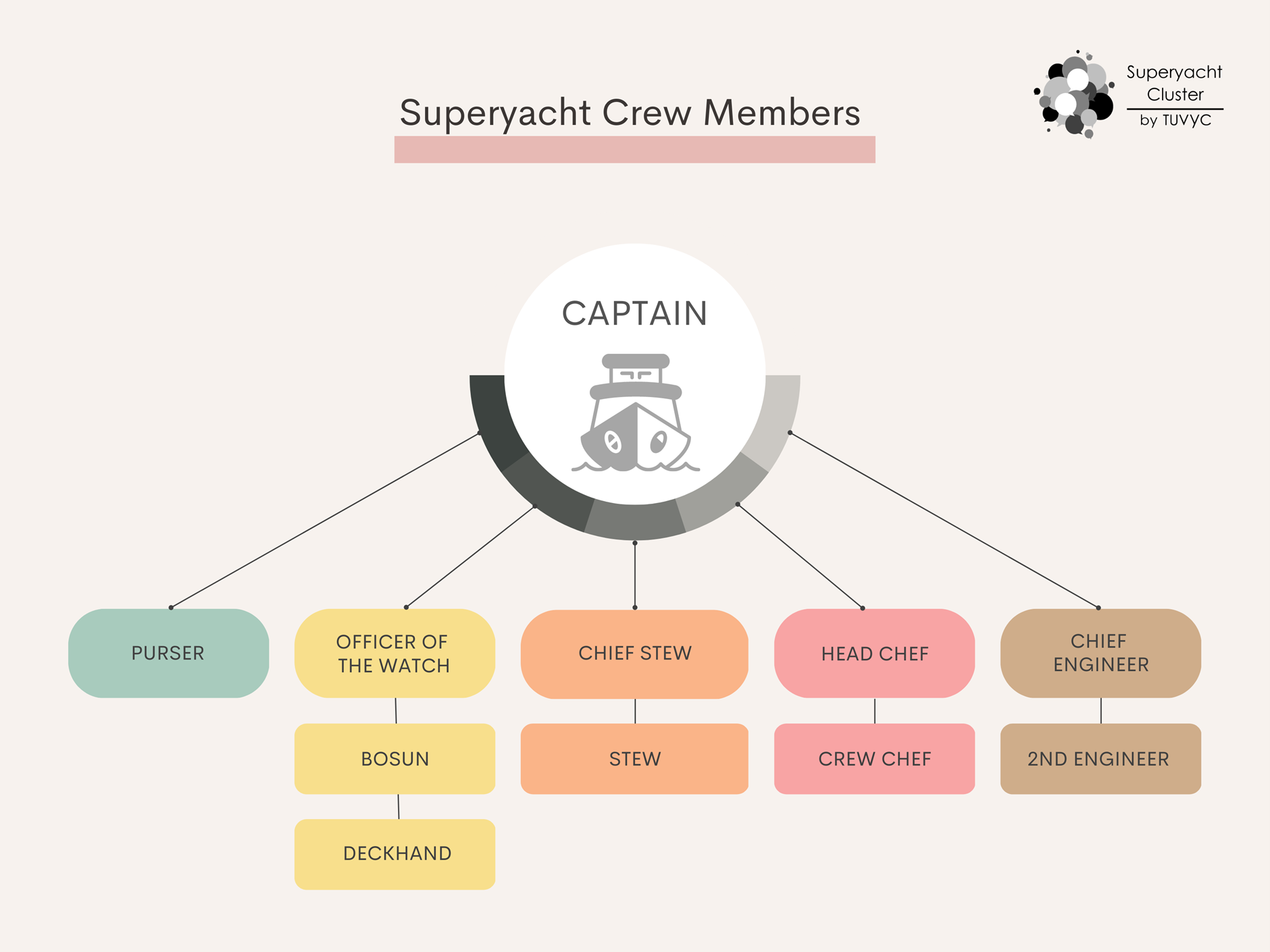
To succeed in the superyacht industry, it is crucial to understand the various stakeholders and their priorities.
By doing so, you can build relationships, gain influence, and earn recommendations from those who hold power and sway within the industry.
We will explore the diverse network of stakeholders in the superyacht industry and their respective roles and influences.
By understanding the hierarchy and the different players involved, you can navigate the industry more effectively and achieve your goals.
From yacht builders and designers to brokers, suppliers, and crew members, each stakeholder plays a vital role in shaping the industry. By understanding their priorities and motivations, you can build strong relationships and gain a better understanding of the industry landscape.
To successfully engage with superyacht owners, it is important to understand who they are, where they come from, and what motivates them.
These individuals often have extremely high net worth and lead lifestyles that are either very public or very private.
Gain insight into the characteristics of superyacht owners, including their demographics, geographic locations, and reasons for owning superyachts.
Additionally, understand the support networks that surround these owners, including yacht management companies, crew, and other stakeholders who play a critical role in ensuring the successful operation of these vessels.
With this knowledge, you can tailor your communications and services to meet the specific needs and preferences of this unique clientele.
We will also gain insights into the factors that influence the superyacht industry, including design trends and the impact of superyacht designers on purchasing decisions at all levels.
Explore how wealth changes the motivations behind buying, and how the culture of secrecy within the industry shapes the relationships between the affluent community and their chosen partners.
Develop strategies to appeal to a design-savvy and image-conscious audience.
Consider the necessary changes your product or service needs to be competitive for superyacht owners in 10 years.
Identify the new technologies that you will need to adopt or develop to stay relevant in the superyacht industry.
Think about emerging trends and innovations that could disrupt the market and anticipate the needs of the future clientele.
Determine the new skill sets required to implement these changes, such as hiring specialists in artificial intelligence, virtual reality, and sustainability.
Additionally, consider new collaborations with superyacht designers, naval architects, and other industry professionals who can provide valuable insights and expertise. Be willing to adapt and pivot your strategy as the industry evolves.
Given the demanding nature of clients and the high level of affluence within the sector, it’s essential to convey that you are already a part of the industry and have a comprehensive understanding of its customs.
This workshop is designed to provide you with the knowledge and skills necessary to achieve this level of understanding and integration.
Executive Summary
Chapter 1: Find Your Superyacht Opportunity
Discover what makes a yacht a superyacht. From minimum size requirements to the designers, shipyards and daily uses that defines what a superyacht is. Find out what a superyacht is verses a megayacht and how not all superyachts are equal. Learn the correct descriptive terminology to enable you to position yourself as an expert in this field and hold professional discussions with the owners, captains, crew and key decision makers. Know your aft deck from your bridge, what each area is used for, and truly understand the private and charter vessels that this affluent sector revolves around.

Chapter 2: SYC History of the Superyacht Industry
The birth and development of a global industry and how it got to where it is today. Arming you with details of the pioneers who dreamt up, engineered, bought, and enjoyed the greatest superyachts through the ages. Discover how the onshore support industry came to be, who were the first and most prominent key players and who is still around today.

Chapter 3: SYC Present Superyacht Market Situation
The facts and figures on what is on the superyacht global order books and how to find out this information for yourselves. What is the split between private and charter superyachts and how that effects the market. Discover the new build sector and the refit sector, the buying power of each and how they differ. Gain impartial data on how the superyacht industry has continued to grow throughout the recent pandemic and the reasons why it is one of the most stable luxury markets.

Chapter 4: SYC Superyacht Market Outlook
Gain insight into predicted growth and where the superyacht industry is going. Find out what existing sub sectors continue to see growth and stability and what new sectors are making a splash in the superyacht industry. Get ahead of new trends and understand how to adapt your products and services to synergise with where the market is heading.

Chapter 5: SYC Superyacht Industry Stakeholders
The superyacht industry has a diverse network of industry stakeholders who all play an important role in shaping the sector. Understand the individual stakeholders and why they hold their positions of power. Learn the hierarchy, the roles they play, and the influences they have.

Chapter 6: SYC UHNWI Clientele
Superyacht owners are ultra-high-net-worth-individuals who often lead contrastingly very public or very private lives. Learn about the superyacht owner, who they are, where they live, why they own superyachts, what they use them for and the support network that surrounds them.

Chapter 7: SYC Driving Forces of the Superyacht Industry
There are many driving forces you may not expect that shape the superyacht industry. Understand how design trends and superyacht designers can affect purchasing on all levels of a superyacht, how wealth changes the motivations behind buying, and how the intense secrecy that is intrinsically wound throughout the superyacht experience supports who this transient, affluent community work with.

Chapter 8: SYC Superyacht Etiquette
The superyacht industry has its own unique terminology and etiquette. To succeed in business, you need to generate trust in you, your business, and your product. Due to extremely high service standards, demanding clients and the affluence surrounding the entire sector you need to demonstrate that you are already part of the industry and completely understand their unique culture. This course gives you the knowledge to do this.

Chapter 9: SYC Superyacht Industry Hubs
There are key superyacht hubs around the world where the onboard community, the yachts and the onshore support converge. Here we share the hot spots, the latest trendy destinations, and the business centres of the superyacht industry and why they are so important.

Chapter 10: SYC Driving Forces of the Superyacht Industry
It’s not all dollar signs and sunshine, the superyacht industry can and does come up against some very public criticism including its effect on the climate and lack of sustainability. Understand what the sector can fall foul of, and how others have sailed through sticky situations and come out smelling of roses.
Curriculum
Superyacht Market Entry – Workshop 1 – Introduction to the Superyacht Industry
- Find Your Superyacht Opportunity
- SYC History of the Superyacht Industry
- SYC Present Superyacht Market Situation
- SYC Superyacht Market Outlook
- SYC Superyacht Industry Stakeholders
- SYC UHNWI Clientele
- SYC Driving Forces of the Superyacht Industry
- SYC Superyacht Etiquette
- SYC Superyacht Industry Hubs
- SYC Driving Forces of the Superyacht Industry
Distance Learning
Introduction
Welcome to Appleton Greene and thank you for enrolling on the Superyacht Market Entry corporate training program. You will be learning through our unique facilitation via distance-learning method, which will enable you to practically implement everything that you learn academically. The methods and materials used in your program have been designed and developed to ensure that you derive the maximum benefits and enjoyment possible. We hope that you find the program challenging and fun to do. However, if you have never been a distance-learner before, you may be experiencing some trepidation at the task before you. So we will get you started by giving you some basic information and guidance on how you can make the best use of the modules, how you should manage the materials and what you should be doing as you work through them. This guide is designed to point you in the right direction and help you to become an effective distance-learner. Take a few hours or so to study this guide and your guide to tutorial support for students, while making notes, before you start to study in earnest.
Study environment
You will need to locate a quiet and private place to study, preferably a room where you can easily be isolated from external disturbances or distractions. Make sure the room is well-lit and incorporates a relaxed, pleasant feel. If you can spoil yourself within your study environment, you will have much more of a chance to ensure that you are always in the right frame of mind when you do devote time to study. For example, a nice fire, the ability to play soft soothing background music, soft but effective lighting, perhaps a nice view if possible and a good size desk with a comfortable chair. Make sure that your family know when you are studying and understand your study rules. Your study environment is very important. The ideal situation, if at all possible, is to have a separate study, which can be devoted to you. If this is not possible then you will need to pay a lot more attention to developing and managing your study schedule, because it will affect other people as well as yourself. The better your study environment, the more productive you will be.
Study tools & rules
Try and make sure that your study tools are sufficient and in good working order. You will need to have access to a computer, scanner and printer, with access to the internet. You will need a very comfortable chair, which supports your lower back, and you will need a good filing system. It can be very frustrating if you are spending valuable study time trying to fix study tools that are unreliable, or unsuitable for the task. Make sure that your study tools are up to date. You will also need to consider some study rules. Some of these rules will apply to you and will be intended to help you to be more disciplined about when and how you study. This distance-learning guide will help you and after you have read it you can put some thought into what your study rules should be. You will also need to negotiate some study rules for your family, friends or anyone who lives with you. They too will need to be disciplined in order to ensure that they can support you while you study. It is important to ensure that your family and friends are an integral part of your study team. Having their support and encouragement can prove to be a crucial contribution to your successful completion of the program. Involve them in as much as you can.
Successful distance-learning
Distance-learners are freed from the necessity of attending regular classes or workshops, since they can study in their own way, at their own pace and for their own purposes. But unlike traditional internal training courses, it is the student’s responsibility, with a distance-learning program, to ensure that they manage their own study contribution. This requires strong self-discipline and self-motivation skills and there must be a clear will to succeed. Those students who are used to managing themselves, are good at managing others and who enjoy working in isolation, are more likely to be good distance-learners. It is also important to be aware of the main reasons why you are studying and of the main objectives that you are hoping to achieve as a result. You will need to remind yourself of these objectives at times when you need to motivate yourself. Never lose sight of your long-term goals and your short-term objectives. There is nobody available here to pamper you, or to look after you, or to spoon-feed you with information, so you will need to find ways to encourage and appreciate yourself while you are studying. Make sure that you chart your study progress, so that you can be sure of your achievements and re-evaluate your goals and objectives regularly.
Self-assessment
Appleton Greene training programs are in all cases post-graduate programs. Consequently, you should already have obtained a business-related degree and be an experienced learner. You should therefore already be aware of your study strengths and weaknesses. For example, which time of the day are you at your most productive? Are you a lark or an owl? What study methods do you respond to the most? Are you a consistent learner? How do you discipline yourself? How do you ensure that you enjoy yourself while studying? It is important to understand yourself as a learner and so some self-assessment early on will be necessary if you are to apply yourself correctly. Perform a SWOT analysis on yourself as a student. List your internal strengths and weaknesses as a student and your external opportunities and threats. This will help you later on when you are creating a study plan. You can then incorporate features within your study plan that can ensure that you are playing to your strengths, while compensating for your weaknesses. You can also ensure that you make the most of your opportunities, while avoiding the potential threats to your success.
Accepting responsibility as a student
Training programs invariably require a significant investment, both in terms of what they cost and in the time that you need to contribute to study and the responsibility for successful completion of training programs rests entirely with the student. This is never more apparent than when a student is learning via distance-learning. Accepting responsibility as a student is an important step towards ensuring that you can successfully complete your training program. It is easy to instantly blame other people or factors when things go wrong. But the fact of the matter is that if a failure is your failure, then you have the power to do something about it, it is entirely in your own hands. If it is always someone else’s failure, then you are powerless to do anything about it. All students study in entirely different ways, this is because we are all individuals and what is right for one student, is not necessarily right for another. In order to succeed, you will have to accept personal responsibility for finding a way to plan, implement and manage a personal study plan that works for you. If you do not succeed, you only have yourself to blame.
Planning
By far the most critical contribution to stress, is the feeling of not being in control. In the absence of planning we tend to be reactive and can stumble from pillar to post in the hope that things will turn out fine in the end. Invariably they don’t! In order to be in control, we need to have firm ideas about how and when we want to do things. We also need to consider as many possible eventualities as we can, so that we are prepared for them when they happen. Prescriptive Change, is far easier to manage and control, than Emergent Change. The same is true with distance-learning. It is much easier and much more enjoyable, if you feel that you are in control and that things are going to plan. Even when things do go wrong, you are prepared for them and can act accordingly without any unnecessary stress. It is important therefore that you do take time to plan your studies properly.
Management
Once you have developed a clear study plan, it is of equal importance to ensure that you manage the implementation of it. Most of us usually enjoy planning, but it is usually during implementation when things go wrong. Targets are not met and we do not understand why. Sometimes we do not even know if targets are being met. It is not enough for us to conclude that the study plan just failed. If it is failing, you will need to understand what you can do about it. Similarly if your study plan is succeeding, it is still important to understand why, so that you can improve upon your success. You therefore need to have guidelines for self-assessment so that you can be consistent with performance improvement throughout the program. If you manage things correctly, then your performance should constantly improve throughout the program.
Study objectives & tasks
The first place to start is developing your program objectives. These should feature your reasons for undertaking the training program in order of priority. Keep them succinct and to the point in order to avoid confusion. Do not just write the first things that come into your head because they are likely to be too similar to each other. Make a list of possible departmental headings, such as: Customer Service; E-business; Finance; Globalization; Human Resources; Technology; Legal; Management; Marketing and Production. Then brainstorm for ideas by listing as many things that you want to achieve under each heading and later re-arrange these things in order of priority. Finally, select the top item from each department heading and choose these as your program objectives. Try and restrict yourself to five because it will enable you to focus clearly. It is likely that the other things that you listed will be achieved if each of the top objectives are achieved. If this does not prove to be the case, then simply work through the process again.
Study forecast
As a guide, the Appleton Greene Superyacht Market Entry corporate training program should take 12-18 months to complete, depending upon your availability and current commitments. The reason why there is such a variance in time estimates is because every student is an individual, with differing productivity levels and different commitments. These differentiations are then exaggerated by the fact that this is a distance-learning program, which incorporates the practical integration of academic theory as an as a part of the training program. Consequently all of the project studies are real, which means that important decisions and compromises need to be made. You will want to get things right and will need to be patient with your expectations in order to ensure that they are. We would always recommend that you are prudent with your own task and time forecasts, but you still need to develop them and have a clear indication of what are realistic expectations in your case. With reference to your time planning: consider the time that you can realistically dedicate towards study with the program every week; calculate how long it should take you to complete the program, using the guidelines featured here; then break the program down into logical modules and allocate a suitable proportion of time to each of them, these will be your milestones; you can create a time plan by using a spreadsheet on your computer, or a personal organizer such as MS Outlook, you could also use a financial forecasting software; break your time forecasts down into manageable chunks of time, the more specific you can be, the more productive and accurate your time management will be; finally, use formulas where possible to do your time calculations for you, because this will help later on when your forecasts need to change in line with actual performance. With reference to your task planning: refer to your list of tasks that need to be undertaken in order to achieve your program objectives; with reference to your time plan, calculate when each task should be implemented; remember that you are not estimating when your objectives will be achieved, but when you will need to focus upon implementing the corresponding tasks; you also need to ensure that each task is implemented in conjunction with the associated training modules which are relevant; then break each single task down into a list of specific to do’s, say approximately ten to do’s for each task and enter these into your study plan; once again you could use MS Outlook to incorporate both your time and task planning and this could constitute your study plan; you could also use a project management software like MS Project. You should now have a clear and realistic forecast detailing when you can expect to be able to do something about undertaking the tasks to achieve your program objectives.
Performance management
It is one thing to develop your study forecast, it is quite another to monitor your progress. Ultimately it is less important whether you achieve your original study forecast and more important that you update it so that it constantly remains realistic in line with your performance. As you begin to work through the program, you will begin to have more of an idea about your own personal performance and productivity levels as a distance-learner. Once you have completed your first study module, you should re-evaluate your study forecast for both time and tasks, so that they reflect your actual performance level achieved. In order to achieve this you must first time yourself while training by using an alarm clock. Set the alarm for hourly intervals and make a note of how far you have come within that time. You can then make a note of your actual performance on your study plan and then compare your performance against your forecast. Then consider the reasons that have contributed towards your performance level, whether they are positive or negative and make a considered adjustment to your future forecasts as a result. Given time, you should start achieving your forecasts regularly.
With reference to time management: time yourself while you are studying and make a note of the actual time taken in your study plan; consider your successes with time-efficiency and the reasons for the success in each case and take this into consideration when reviewing future time planning; consider your failures with time-efficiency and the reasons for the failures in each case and take this into consideration when reviewing future time planning; re-evaluate your study forecast in relation to time planning for the remainder of your training program to ensure that you continue to be realistic about your time expectations. You need to be consistent with your time management, otherwise you will never complete your studies. This will either be because you are not contributing enough time to your studies, or you will become less efficient with the time that you do allocate to your studies. Remember, if you are not in control of your studies, they can just become yet another cause of stress for you.
With reference to your task management: time yourself while you are studying and make a note of the actual tasks that you have undertaken in your study plan; consider your successes with task-efficiency and the reasons for the success in each case; take this into consideration when reviewing future task planning; consider your failures with task-efficiency and the reasons for the failures in each case and take this into consideration when reviewing future task planning; re-evaluate your study forecast in relation to task planning for the remainder of your training program to ensure that you continue to be realistic about your task expectations. You need to be consistent with your task management, otherwise you will never know whether you are achieving your program objectives or not.
Keeping in touch
You will have access to qualified and experienced professors and tutors who are responsible for providing tutorial support for your particular training program. So don’t be shy about letting them know how you are getting on. We keep electronic records of all tutorial support emails so that professors and tutors can review previous correspondence before considering an individual response. It also means that there is a record of all communications between you and your professors and tutors and this helps to avoid any unnecessary duplication, misunderstanding, or misinterpretation. If you have a problem relating to the program, share it with them via email. It is likely that they have come across the same problem before and are usually able to make helpful suggestions and steer you in the right direction. To learn more about when and how to use tutorial support, please refer to the Tutorial Support section of this student information guide. This will help you to ensure that you are making the most of tutorial support that is available to you and will ultimately contribute towards your success and enjoyment with your training program.
Work colleagues and family
You should certainly discuss your program study progress with your colleagues, friends and your family. Appleton Greene training programs are very practical. They require you to seek information from other people, to plan, develop and implement processes with other people and to achieve feedback from other people in relation to viability and productivity. You will therefore have plenty of opportunities to test your ideas and enlist the views of others. People tend to be sympathetic towards distance-learners, so don’t bottle it all up in yourself. Get out there and share it! It is also likely that your family and colleagues are going to benefit from your labors with the program, so they are likely to be much more interested in being involved than you might think. Be bold about delegating work to those who might benefit themselves. This is a great way to achieve understanding and commitment from people who you may later rely upon for process implementation. Share your experiences with your friends and family.
Making it relevant
The key to successful learning is to make it relevant to your own individual circumstances. At all times you should be trying to make bridges between the content of the program and your own situation. Whether you achieve this through quiet reflection or through interactive discussion with your colleagues, client partners or your family, remember that it is the most important and rewarding aspect of translating your studies into real self-improvement. You should be clear about how you want the program to benefit you. This involves setting clear study objectives in relation to the content of the course in terms of understanding, concepts, completing research or reviewing activities and relating the content of the modules to your own situation. Your objectives may understandably change as you work through the program, in which case you should enter the revised objectives on your study plan so that you have a permanent reminder of what you are trying to achieve, when and why.
Distance-learning check-list
Prepare your study environment, your study tools and rules.
Undertake detailed self-assessment in terms of your ability as a learner.
Create a format for your study plan.
Consider your study objectives and tasks.
Create a study forecast.
Assess your study performance.
Re-evaluate your study forecast.
Be consistent when managing your study plan.
Use your Appleton Greene Certified Learning Provider (CLP) for tutorial support.
Make sure you keep in touch with those around you.

Tutorial Support
Programs
Appleton Greene uses standard and bespoke corporate training programs as vessels to transfer business process improvement knowledge into the heart of our clients’ organizations. Each individual program focuses upon the implementation of a specific business process, which enables clients to easily quantify their return on investment. There are hundreds of established Appleton Greene corporate training products now available to clients within customer services, e-business, finance, globalization, human resources, information technology, legal, management, marketing and production. It does not matter whether a client’s employees are located within one office, or an unlimited number of international offices, we can still bring them together to learn and implement specific business processes collectively. Our approach to global localization enables us to provide clients with a truly international service with that all important personal touch. Appleton Greene corporate training programs can be provided virtually or locally and they are all unique in that they individually focus upon a specific business function. They are implemented over a sustainable period of time and professional support is consistently provided by qualified learning providers and specialist consultants.
Support available
You will have a designated Certified Learning Provider (CLP) and an Accredited Consultant and we encourage you to communicate with them as much as possible. In all cases tutorial support is provided online because we can then keep a record of all communications to ensure that tutorial support remains consistent. You would also be forwarding your work to the tutorial support unit for evaluation and assessment. You will receive individual feedback on all of the work that you undertake on a one-to-one basis, together with specific recommendations for anything that may need to be changed in order to achieve a pass with merit or a pass with distinction and you then have as many opportunities as you may need to re-submit project studies until they meet with the required standard. Consequently the only reason that you should really fail (CLP) is if you do not do the work. It makes no difference to us whether a student takes 12 months or 18 months to complete the program, what matters is that in all cases the same quality standard will have been achieved.
Support Process
Please forward all of your future emails to the designated (CLP) Tutorial Support Unit email address that has been provided and please do not duplicate or copy your emails to other AGC email accounts as this will just cause unnecessary administration. Please note that emails are always answered as quickly as possible but you will need to allow a period of up to 20 business days for responses to general tutorial support emails during busy periods, because emails are answered strictly within the order in which they are received. You will also need to allow a period of up to 30 business days for the evaluation and assessment of project studies. This does not include weekends or public holidays. Please therefore kindly allow for this within your time planning. All communications are managed online via email because it enables tutorial service support managers to review other communications which have been received before responding and it ensures that there is a copy of all communications retained on file for future reference. All communications will be stored within your personal (CLP) study file here at Appleton Greene throughout your designated study period. If you need any assistance or clarification at any time, please do not hesitate to contact us by forwarding an email and remember that we are here to help. If you have any questions, please list and number your questions succinctly and you can then be sure of receiving specific answers to each and every query.
Time Management
It takes approximately 1 Year to complete the Superyacht Market Entry corporate training program, incorporating 12 x 6-hour monthly workshops. Each student will also need to contribute approximately 4 hours per week over 1 Year of their personal time. Students can study from home or work at their own pace and are responsible for managing their own study plan. There are no formal examinations and students are evaluated and assessed based upon their project study submissions, together with the quality of their internal analysis and supporting documents. They can contribute more time towards study when they have the time to do so and can contribute less time when they are busy. All students tend to be in full time employment while studying and the Superyacht Market Entry program is purposely designed to accommodate this, so there is plenty of flexibility in terms of time management. It makes no difference to us at Appleton Greene, whether individuals take 12-18 months to complete this program. What matters is that in all cases the same standard of quality will have been achieved with the standard and bespoke programs that have been developed.
Distance Learning Guide
The distance learning guide should be your first port of call when starting your training program. It will help you when you are planning how and when to study, how to create the right environment and how to establish the right frame of mind. If you can lay the foundations properly during the planning stage, then it will contribute to your enjoyment and productivity while training later. The guide helps to change your lifestyle in order to accommodate time for study and to cultivate good study habits. It helps you to chart your progress so that you can measure your performance and achieve your goals. It explains the tools that you will need for study and how to make them work. It also explains how to translate academic theory into practical reality. Spend some time now working through your distance learning guide and make sure that you have firm foundations in place so that you can make the most of your distance learning program. There is no requirement for you to attend training workshops or classes at Appleton Greene offices. The entire program is undertaken online, program course manuals and project studies are administered via the Appleton Greene web site and via email, so you are able to study at your own pace and in the comfort of your own home or office as long as you have a computer and access to the internet.
How To Study
The how to study guide provides students with a clear understanding of the Appleton Greene facilitation via distance learning training methods and enables students to obtain a clear overview of the training program content. It enables students to understand the step-by-step training methods used by Appleton Greene and how course manuals are integrated with project studies. It explains the research and development that is required and the need to provide evidence and references to support your statements. It also enables students to understand precisely what will be required of them in order to achieve a pass with merit and a pass with distinction for individual project studies and provides useful guidance on how to be innovative and creative when developing your Unique Program Proposition (UPP).
Tutorial Support
Tutorial support for the Appleton Greene Superyacht Market Entry corporate training program is provided online either through the Appleton Greene Client Support Portal (CSP), or via email. All tutorial support requests are facilitated by a designated Program Administration Manager (PAM). They are responsible for deciding which professor or tutor is the most appropriate option relating to the support required and then the tutorial support request is forwarded onto them. Once the professor or tutor has completed the tutorial support request and answered any questions that have been asked, this communication is then returned to the student via email by the designated Program Administration Manager (PAM). This enables all tutorial support, between students, professors and tutors, to be facilitated by the designated Program Administration Manager (PAM) efficiently and securely through the email account. You will therefore need to allow a period of up to 20 business days for responses to general support queries and up to 30 business days for the evaluation and assessment of project studies, because all tutorial support requests are answered strictly within the order in which they are received. This does not include weekends or public holidays. Consequently you need to put some thought into the management of your tutorial support procedure in order to ensure that your study plan is feasible and to obtain the maximum possible benefit from tutorial support during your period of study. Please retain copies of your tutorial support emails for future reference. Please ensure that ALL of your tutorial support emails are set out using the format as suggested within your guide to tutorial support. Your tutorial support emails need to be referenced clearly to the specific part of the course manual or project study which you are working on at any given time. You also need to list and number any questions that you would like to ask, up to a maximum of five questions within each tutorial support email. Remember the more specific you can be with your questions the more specific your answers will be too and this will help you to avoid any unnecessary misunderstanding, misinterpretation, or duplication. The guide to tutorial support is intended to help you to understand how and when to use support in order to ensure that you get the most out of your training program. Appleton Greene training programs are designed to enable you to do things for yourself. They provide you with a structure or a framework and we use tutorial support to facilitate students while they practically implement what they learn. In other words, we are enabling students to do things for themselves. The benefits of distance learning via facilitation are considerable and are much more sustainable in the long-term than traditional short-term knowledge sharing programs. Consequently you should learn how and when to use tutorial support so that you can maximize the benefits from your learning experience with Appleton Greene. This guide describes the purpose of each training function and how to use them and how to use tutorial support in relation to each aspect of the training program. It also provides useful tips and guidance with regard to best practice.
Tutorial Support Tips
Students are often unsure about how and when to use tutorial support with Appleton Greene. This Tip List will help you to understand more about how to achieve the most from using tutorial support. Refer to it regularly to ensure that you are continuing to use the service properly. Tutorial support is critical to the success of your training experience, but it is important to understand when and how to use it in order to maximize the benefit that you receive. It is no coincidence that those students who succeed are those that learn how to be positive, proactive and productive when using tutorial support.
Be positive and friendly with your tutorial support emails
Remember that if you forward an email to the tutorial support unit, you are dealing with real people. “Do unto others as you would expect others to do unto you”. If you are positive, complimentary and generally friendly in your emails, you will generate a similar response in return. This will be more enjoyable, productive and rewarding for you in the long-term.
Think about the impression that you want to create
Every time that you communicate, you create an impression, which can be either positive or negative, so put some thought into the impression that you want to create. Remember that copies of all tutorial support emails are stored electronically and tutors will always refer to prior correspondence before responding to any current emails. Over a period of time, a general opinion will be arrived at in relation to your character, attitude and ability. Try to manage your own frustrations, mood swings and temperament professionally, without involving the tutorial support team. Demonstrating frustration or a lack of patience is a weakness and will be interpreted as such. The good thing about communicating in writing, is that you will have the time to consider your content carefully, you can review it and proof-read it before sending your email to Appleton Greene and this should help you to communicate more professionally, consistently and to avoid any unnecessary knee-jerk reactions to individual situations as and when they may arise. Please also remember that the CLP Tutorial Support Unit will not just be responsible for evaluating and assessing the quality of your work, they will also be responsible for providing recommendations to other learning providers and to client contacts within the Appleton Greene global client network, so do be in control of your own emotions and try to create a good impression.
Remember that quality is preferred to quantity
Please remember that when you send an email to the tutorial support team, you are not using Twitter or Text Messaging. Try not to forward an email every time that you have a thought. This will not prove to be productive either for you or for the tutorial support team. Take time to prepare your communications properly, as if you were writing a professional letter to a business colleague and make a list of queries that you are likely to have and then incorporate them within one email, say once every month, so that the tutorial support team can understand more about context, application and your methodology for study. Get yourself into a consistent routine with your tutorial support requests and use the tutorial support template provided with ALL of your emails. The (CLP) Tutorial Support Unit will not spoon-feed you with information. They need to be able to evaluate and assess your tutorial support requests carefully and professionally.
Be specific about your questions in order to receive specific answers
Try not to write essays by thinking as you are writing tutorial support emails. The tutorial support unit can be unclear about what in fact you are asking, or what you are looking to achieve. Be specific about asking questions that you want answers to. Number your questions. You will then receive specific answers to each and every question. This is the main purpose of tutorial support via email.
Keep a record of your tutorial support emails
It is important that you keep a record of all tutorial support emails that are forwarded to you. You can then refer to them when necessary and it avoids any unnecessary duplication, misunderstanding, or misinterpretation.
Individual training workshops or telephone support
Please be advised that Appleton Greene does not provide separate or individual tutorial support meetings, workshops, or provide telephone support for individual students. Appleton Greene is an equal opportunities learning and service provider and we are therefore understandably bound to treat all students equally. We cannot therefore broker special financial or study arrangements with individual students regardless of the circumstances. All tutorial support is provided online and this enables Appleton Greene to keep a record of all communications between students, professors and tutors on file for future reference, in accordance with our quality management procedure and your terms and conditions of enrolment. All tutorial support is provided online via email because it enables us to have time to consider support content carefully, it ensures that you receive a considered and detailed response to your queries. You can number questions that you would like to ask, which relate to things that you do not understand or where clarification may be required. You can then be sure of receiving specific answers to each individual query. You will also then have a record of these communications and of all tutorial support, which has been provided to you. This makes tutorial support administration more productive by avoiding any unnecessary duplication, misunderstanding, or misinterpretation.
Tutorial Support Email Format
You should use this tutorial support format if you need to request clarification or assistance while studying with your training program. Please note that ALL of your tutorial support request emails should use the same format. You should therefore set up a standard email template, which you can then use as and when you need to. Emails that are forwarded to Appleton Greene, which do not use the following format, may be rejected and returned to you by the (CLP) Program Administration Manager. A detailed response will then be forwarded to you via email usually within 20 business days of receipt for general support queries and 30 business days for the evaluation and assessment of project studies. This does not include weekends or public holidays. Your tutorial support request, together with the corresponding TSU reply, will then be saved and stored within your electronic TSU file at Appleton Greene for future reference.
Subject line of your email
Please insert: Appleton Greene (CLP) Tutorial Support Request: (Your Full Name) (Date), within the subject line of your email.
Main body of your email
Please insert:
1. Appleton Greene Certified Learning Provider (CLP) Tutorial Support Request
2. Your Full Name
3. Date of TS request
4. Preferred email address
5. Backup email address
6. Course manual page name or number (reference)
7. Project study page name or number (reference)
Subject of enquiry
Please insert a maximum of 50 words (please be succinct)
Briefly outline the subject matter of your inquiry, or what your questions relate to.
Question 1
Maximum of 50 words (please be succinct)
Maximum of 50 words (please be succinct)
Question 3
Maximum of 50 words (please be succinct)
Question 4
Maximum of 50 words (please be succinct)
Question 5
Maximum of 50 words (please be succinct)
Please note that a maximum of 5 questions is permitted with each individual tutorial support request email.
Procedure
* List the questions that you want to ask first, then re-arrange them in order of priority. Make sure that you reference them, where necessary, to the course manuals or project studies.
* Make sure that you are specific about your questions and number them. Try to plan the content within your emails to make sure that it is relevant.
* Make sure that your tutorial support emails are set out correctly, using the Tutorial Support Email Format provided here.
* Save a copy of your email and incorporate the date sent after the subject title. Keep your tutorial support emails within the same file and in date order for easy reference.
* Allow up to 20 business days for a response to general tutorial support emails and up to 30 business days for the evaluation and assessment of project studies, because detailed individual responses will be made in all cases and tutorial support emails are answered strictly within the order in which they are received.
* Emails can and do get lost. So if you have not received a reply within the appropriate time, forward another copy or a reminder to the tutorial support unit to be sure that it has been received but do not forward reminders unless the appropriate time has elapsed.
* When you receive a reply, save it immediately featuring the date of receipt after the subject heading for easy reference. In most cases the tutorial support unit replies to your questions individually, so you will have a record of the questions that you asked as well as the answers offered. With project studies however, separate emails are usually forwarded by the tutorial support unit, so do keep a record of your own original emails as well.
* Remember to be positive and friendly in your emails. You are dealing with real people who will respond to the same things that you respond to.
* Try not to repeat questions that have already been asked in previous emails. If this happens the tutorial support unit will probably just refer you to the appropriate answers that have already been provided within previous emails.
* If you lose your tutorial support email records you can write to Appleton Greene to receive a copy of your tutorial support file, but a separate administration charge may be levied for this service.

How To Study
Your Certified Learning Provider (CLP) and Accredited Consultant can help you to plan a task list for getting started so that you can be clear about your direction and your priorities in relation to your training program. It is also a good way to introduce yourself to the tutorial support team.
Planning your study environment
Your study conditions are of great importance and will have a direct effect on how much you enjoy your training program. Consider how much space you will have, whether it is comfortable and private and whether you are likely to be disturbed. The study tools and facilities at your disposal are also important to the success of your distance-learning experience. Your tutorial support unit can help with useful tips and guidance, regardless of your starting position. It is important to get this right before you start working on your training program.
Planning your program objectives
It is important that you have a clear list of study objectives, in order of priority, before you start working on your training program. Your tutorial support unit can offer assistance here to ensure that your study objectives have been afforded due consideration and priority.
Planning how and when to study
Distance-learners are freed from the necessity of attending regular classes, since they can study in their own way, at their own pace and for their own purposes. This approach is designed to let you study efficiently away from the traditional classroom environment. It is important however, that you plan how and when to study, so that you are making the most of your natural attributes, strengths and opportunities. Your tutorial support unit can offer assistance and useful tips to ensure that you are playing to your strengths.
Planning your study tasks
You should have a clear understanding of the study tasks that you should be undertaking and the priority associated with each task. These tasks should also be integrated with your program objectives. The distance learning guide and the guide to tutorial support for students should help you here, but if you need any clarification or assistance, please contact your tutorial support unit.
Planning your time
You will need to allocate specific times during your calendar when you intend to study if you are to have a realistic chance of completing your program on time. You are responsible for planning and managing your own study time, so it is important that you are successful with this. Your tutorial support unit can help you with this if your time plan is not working.
Keeping in touch
Consistency is the key here. If you communicate too frequently in short bursts, or too infrequently with no pattern, then your management ability with your studies will be questioned, both by you and by your tutorial support unit. It is obvious when a student is in control and when one is not and this will depend how able you are at sticking with your study plan. Inconsistency invariably leads to in-completion.
Charting your progress
Your tutorial support team can help you to chart your own study progress. Refer to your distance learning guide for further details.
Making it work
To succeed, all that you will need to do is apply yourself to undertaking your training program and interpreting it correctly. Success or failure lies in your hands and your hands alone, so be sure that you have a strategy for making it work. Your Certified Learning Provider (CLP) and Accredited Consultant can guide you through the process of program planning, development and implementation.
Reading methods
Interpretation is often unique to the individual but it can be improved and even quantified by implementing consistent interpretation methods. Interpretation can be affected by outside interference such as family members, TV, or the Internet, or simply by other thoughts which are demanding priority in our minds. One thing that can improve our productivity is using recognized reading methods. This helps us to focus and to be more structured when reading information for reasons of importance, rather than relaxation.
Speed reading
When reading through course manuals for the first time, subconsciously set your reading speed to be just fast enough that you cannot dwell on individual words or tables. With practice, you should be able to read an A4 sheet of paper in one minute. You will not achieve much in the way of a detailed understanding, but your brain will retain a useful overview. This overview will be important later on and will enable you to keep individual issues in perspective with a more generic picture because speed reading appeals to the memory part of the brain. Do not worry about what you do or do not remember at this stage.
Content reading
Once you have speed read everything, you can then start work in earnest. You now need to read a particular section of your course manual thoroughly, by making detailed notes while you read. This process is called Content Reading and it will help to consolidate your understanding and interpretation of the information that has been provided.
Making structured notes on the course manuals
When you are content reading, you should be making detailed notes, which are both structured and informative. Make these notes in a MS Word document on your computer, because you can then amend and update these as and when you deem it to be necessary. List your notes under three headings: 1. Interpretation – 2. Questions – 3. Tasks. The purpose of the 1st section is to clarify your interpretation by writing it down. The purpose of the 2nd section is to list any questions that the issue raises for you. The purpose of the 3rd section is to list any tasks that you should undertake as a result. Anyone who has graduated with a business-related degree should already be familiar with this process.
Organizing structured notes separately
You should then transfer your notes to a separate study notebook, preferably one that enables easy referencing, such as a MS Word Document, a MS Excel Spreadsheet, a MS Access Database, or a personal organizer on your cell phone. Transferring your notes allows you to have the opportunity of cross-checking and verifying them, which assists considerably with understanding and interpretation. You will also find that the better you are at doing this, the more chance you will have of ensuring that you achieve your study objectives.
Question your understanding
Do challenge your understanding. Explain things to yourself in your own words by writing things down.
Clarifying your understanding
If you are at all unsure, forward an email to your tutorial support unit and they will help to clarify your understanding.
Question your interpretation
Do challenge your interpretation. Qualify your interpretation by writing it down.
Clarifying your interpretation
If you are at all unsure, forward an email to your tutorial support unit and they will help to clarify your interpretation.
Qualification Requirements
The student will need to successfully complete the project study and all of the exercises relating to the Superyacht Market Entry corporate training program, achieving a pass with merit or distinction in each case, in order to qualify as an Accredited Superyacht Market Entry Specialist (APTS). All monthly workshops need to be tried and tested within your company. These project studies can be completed in your own time and at your own pace and in the comfort of your own home or office. There are no formal examinations, assessment is based upon the successful completion of the project studies. They are called project studies because, unlike case studies, these projects are not theoretical, they incorporate real program processes that need to be properly researched and developed. The project studies assist us in measuring your understanding and interpretation of the training program and enable us to assess qualification merits. All of the project studies are based entirely upon the content within the training program and they enable you to integrate what you have learnt into your corporate training practice.
Superyacht Market Entry – Grading Contribution
Project Study – Grading Contribution
Customer Service – 10%
E-business – 05%
Finance – 10%
Globalization – 10%
Human Resources – 10%
Information Technology – 10%
Legal – 05%
Management – 10%
Marketing – 10%
Production – 10%
Education – 05%
Logistics – 05%
TOTAL GRADING – 100%
Qualification grades
A mark of 90% = Pass with Distinction.
A mark of 75% = Pass with Merit.
A mark of less than 75% = Fail.
If you fail to achieve a mark of 75% with a project study, you will receive detailed feedback from the Certified Learning Provider (CLP) and/or Accredited Consultant, together with a list of tasks which you will need to complete, in order to ensure that your project study meets with the minimum quality standard that is required by Appleton Greene. You can then re-submit your project study for further evaluation and assessment. Indeed you can re-submit as many drafts of your project studies as you need to, until such a time as they eventually meet with the required standard by Appleton Greene, so you need not worry about this, it is all part of the learning process.
When marking project studies, Appleton Greene is looking for sufficient evidence of the following:
Pass with merit
A satisfactory level of program understanding
A satisfactory level of program interpretation
A satisfactory level of project study content presentation
A satisfactory level of Unique Program Proposition (UPP) quality
A satisfactory level of the practical integration of academic theory
Pass with distinction
An exceptional level of program understanding
An exceptional level of program interpretation
An exceptional level of project study content presentation
An exceptional level of Unique Program Proposition (UPP) quality
An exceptional level of the practical integration of academic theory
Preliminary Analysis
Content here…

Content here…

Content here…

Content here…

Content here…

Content here…
Course Manuals 1-10
Course Manual 1: Find Your Superyacht Opportunity
LEARNING OUTCOME
Find your opportunity in the superyacht industry.
SYNOPSIS
Discover what makes a yacht a superyacht. From minimum size requirements to the designers, shipyards and daily uses that defines what a superyacht is. Find out how not all superyachts are equal. Learn the correct descriptive terminology to enable you to position yourself as an expert in this field and hold professional discussions with the owners, captains, crew, and key decision makers.
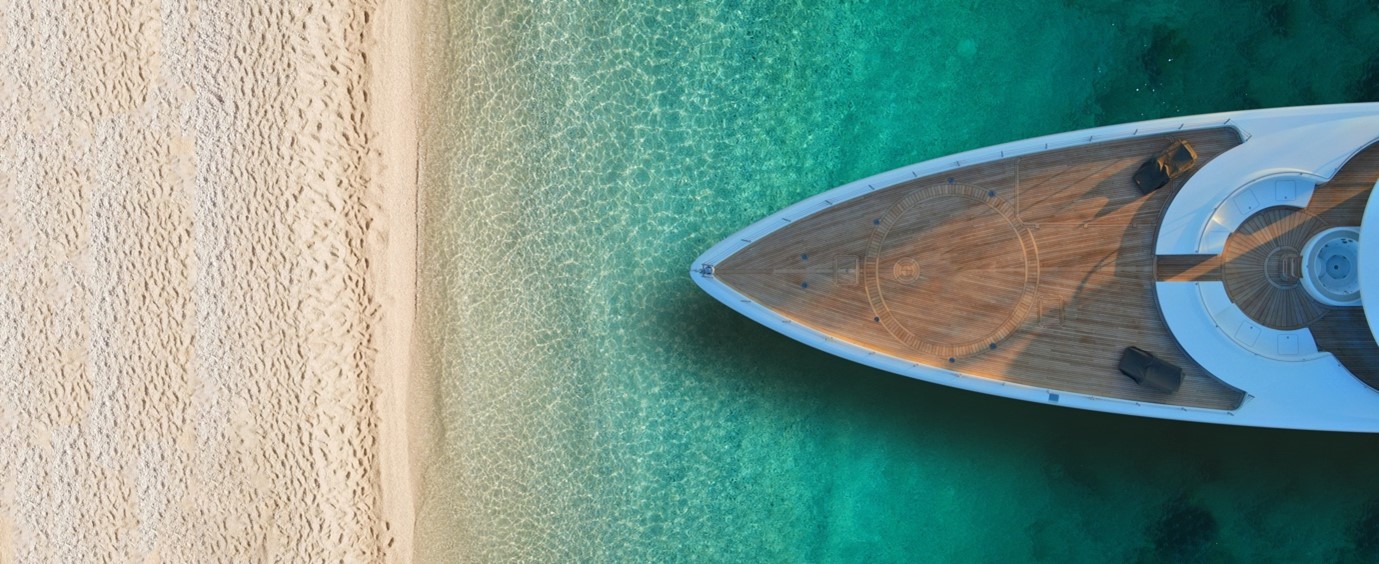
What is a superyacht?
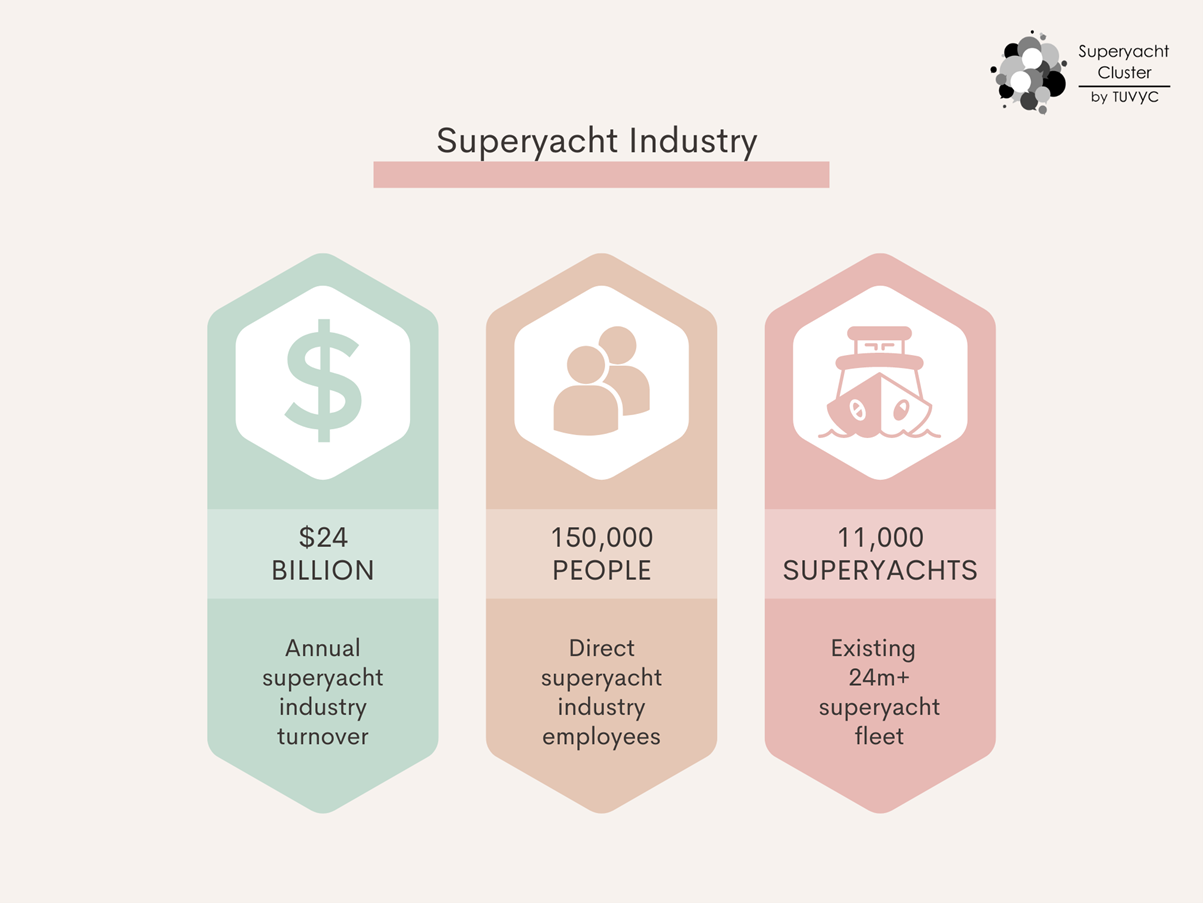
Superyachts offer prestige, sanctuary, and adventure to their owners. And, to those who build, operate, and support the fleet they provide opportunities for financial success unimaginable in other markets.
This ultra-affluent, niche industry has high standards and a range of protocols and unusual motivations. These need to be met to enable new and established brands to successfully enter the superyacht sector and benefit from this hugely profitable market.
A highly profitable global industry supports the development, construction, operation, and maintenance of the superyacht fleet.
This first manual of module 1 will help you identify the opportunities for your business in this lucrative market.
Superyacht definition
Superyachts are large, luxurious, professionally crewed motor or sailing yachts, ranging from 24 metres to more than 180 metres in length.
Classification as a yacht has nothing to do with the size or weight of the boat, its style, sleeping quarters, or whether it is operated by tiller or wheel. A yacht is simply a boat that was designed for the express pleasure of its owner.
There are about 11,000 yachts over 24 meters in length, worldwide. Of these about 80% are motor yachts.
They are further defined as either a private superyacht or a charter superyacht.
Private yachts are used by the superyacht owner and their family and friends only.
Charter yachts are run as a business and are typically rented week by week by a group of 6- 12 affluent guests.
The existing fleet provides a huge repair, maintenance, and improvement market. Yachts are regularly facelifted and updated to benefit from the latest technology and interior design trends.
Within the superyacht fleet there are vast differences in the sizes, uses and classes of vessel.
Whilst every superyacht is truly unique, there are several categorizations which are helpful in segmenting the overall market into smaller, discrete sectors.
It is essential to understand these distinct differences, so when you later consider your market entrance, you can identify where your product or service has greatest potential.
RECORD BREAKING SUPERYACHTS
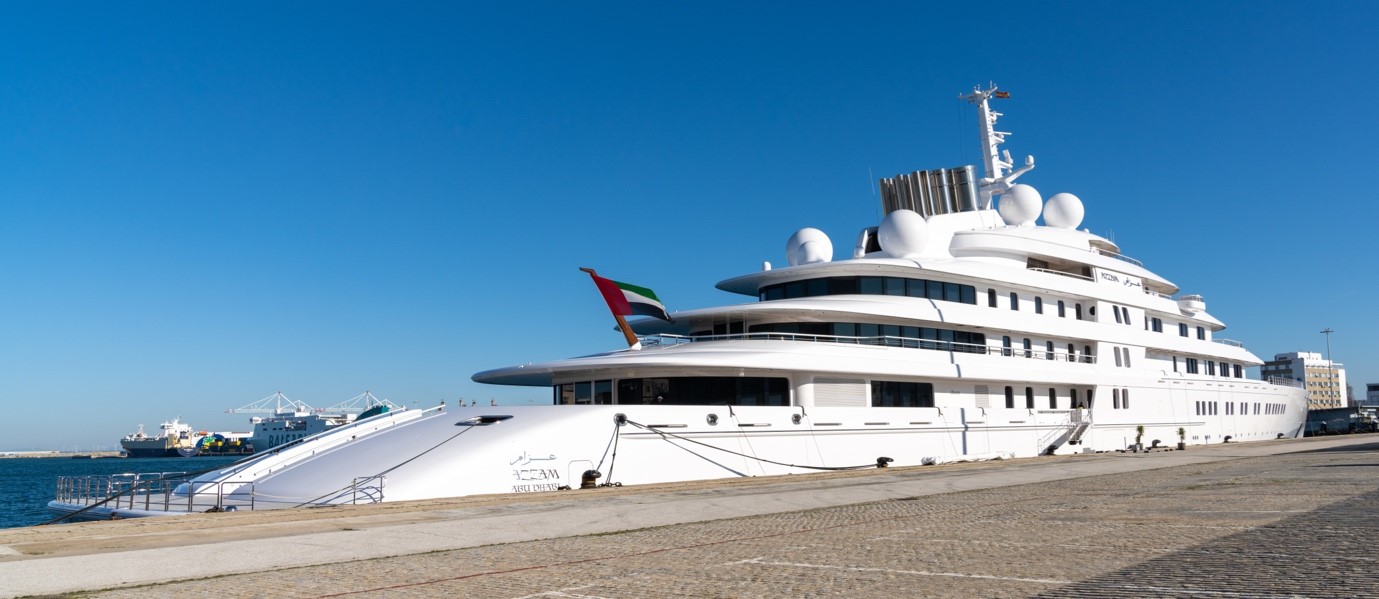
The 181 metre Azzam
• Longest yacht: the Azzam at 181 metres (594 ft)
• Largest yacht: the Fulk Al Salamah at 20,361 gross tons
• Largest sail-assisted motor yacht: Sailing Yacht A at 143 metres (469 ft)
Market Outlook
There is an exceptionally positive outlook for the superyacht market which businesses from other sectors would be wise to consider as a growth opportunity.
Covid, global economic uncertainty and the war in Ukraine have had no impact on the long-term market. Superyacht owners are financially secure and able to continue to invest in yachting.
The global pandemic boosted the superyacht sector with a significant increase in superyacht purchases seen in 2020 and 2021.
New owners sited that they realized that the yachts offered them a floating, isolated sanctuary that could be kept disease free and provide a place for their family to safely take a break in a location of their choice.
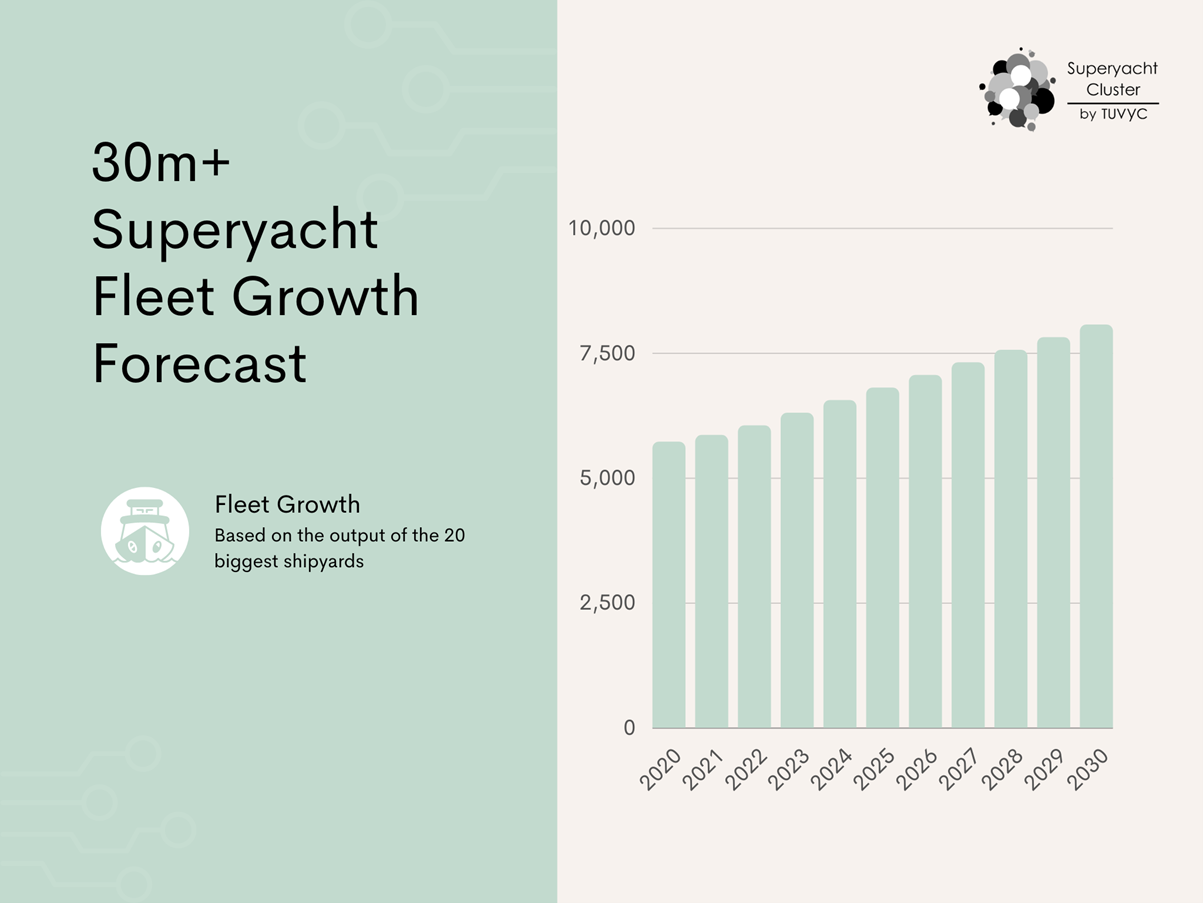
OPPORTUNITY AREAS
A diverse and ever-growing list of product and service providers are finding great opportunities in the superyacht industry.
The superyacht industry has been likened to Formula 1 motor racing. Both deliver and develop innovative solutions and technologies which other industries later adopt and utilize.
Opportunities exist for providers of the following and more:
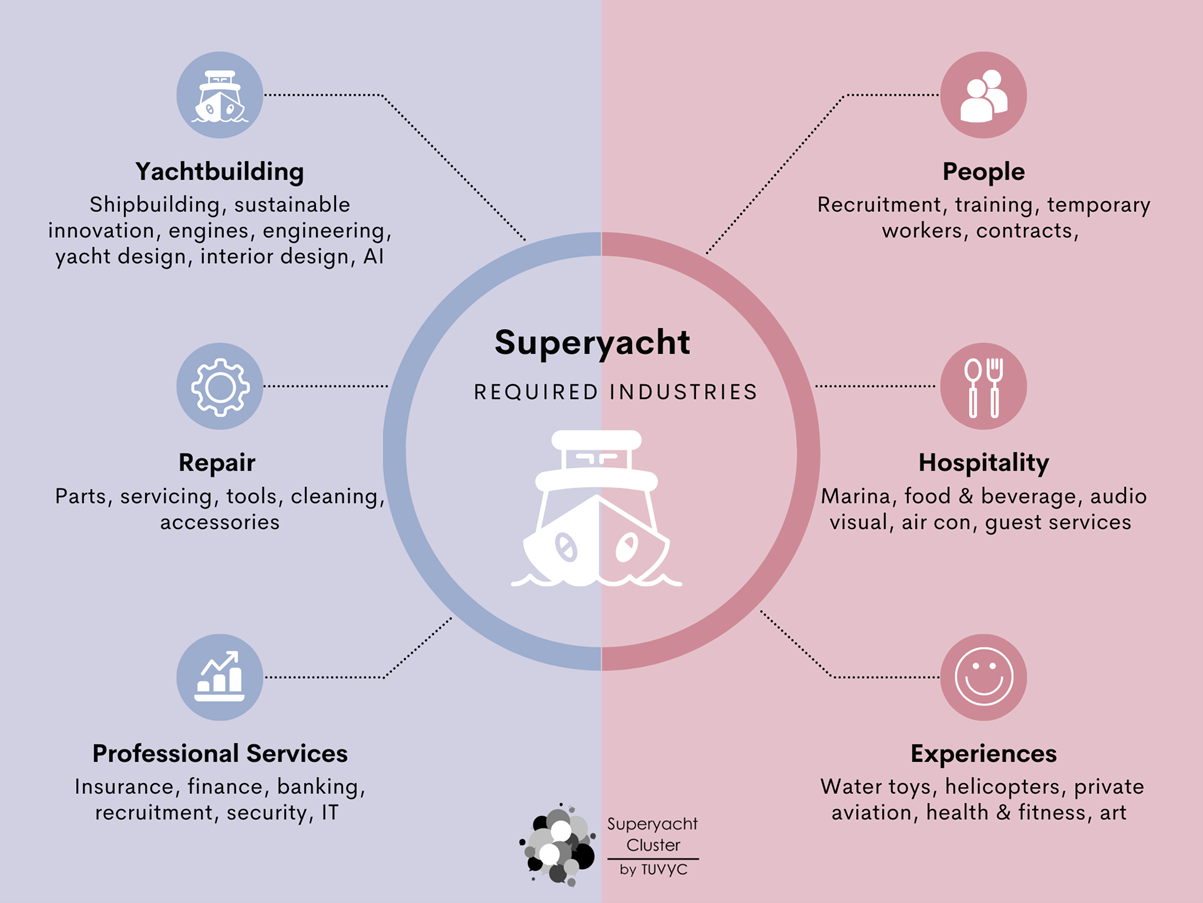
Yachtbuilding
The sizes of yards in the superyacht industry range from a hundred to a thousand or more employees. Some, mostly European yards, have a long tradition in yacht building.
Over their years of experience, they have developed sound management, strong leadership, and good quality assurance programs. Their reputation is strong, and they never suffer from a lack of orders.
There are many newcomers. These are either totally new yards, or yards which have been converted from small boatbuilding, or from building commercial or military vessels.
It is not uncommon for a superyacht owner to buy a smaller yard for their superyacht to be built to maintain full control over the build process.
The largest 20 shipyards are growing their market share, marking a slow but steady consolidation of the key players. That said there are still a significant number of small shipbuilders in the market, reflecting the bespoke nature of superyachts.
Consolidation of the market is likely to continue as shipyards are increasingly moving to a portfolio approach. Rather than solely focus on a single market sector, they are building a wider range of yachts across multiple brands and adding refit and rebuild services.
This makes shipyards more financially sustainable, shares technical and strategic expertise, and closes out competition from less advanced rivals.
Northern European yards are generally considered market leaders for innovation and prestige. However, their bespoke model comes with the cost of time to market and yards elsewhere, especially Italy, often offer a quicker project delivery based on a semi-custom build model.
There are also a number of significant and reputable American yards based in Florida who serve the refit and 24-60 metre new build sector.
Large and talented teams of project managers, engineering and design experts work together on every superyacht new build.
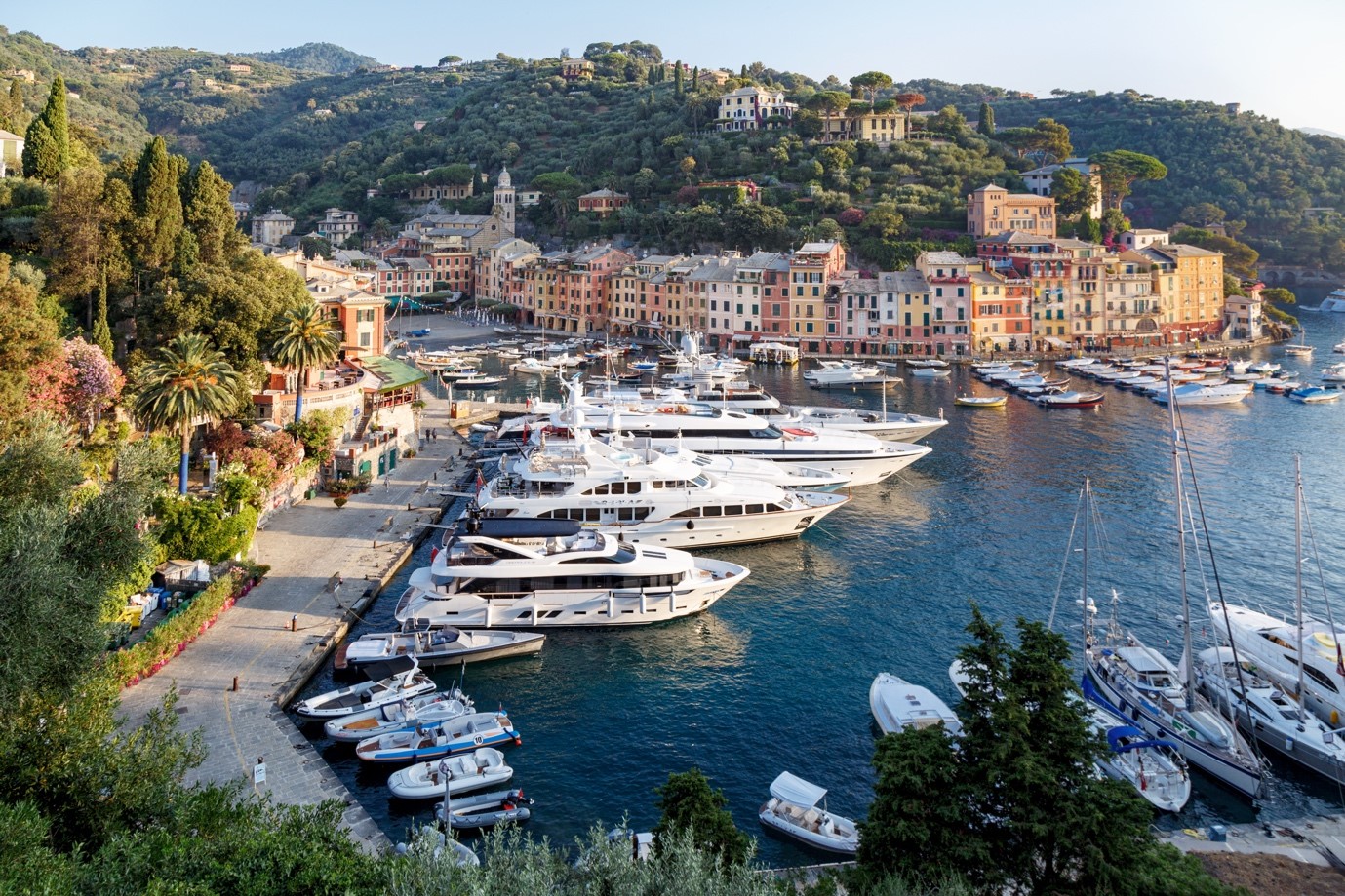
Luxury yachts in the port of Portofino

Case Study: SANLORENZO
Sanlorenzo shipyard has been building high-quality motor yachts since 1958. The shipyard’s headquarters are located on the banks of the river Magra, in Liguria, Italy.
It is a boutique firm in the yachting industry, building only a limited number of made-to-measure units per year. Each yacht is designed and produced according to the specific requests, style, and desires of the individual owner.
This Italian boat builder is known for faster delivery times than many competitors, thanks in part to a semi-custom model where sister ships share a common architecture, rather than always being designed from a blank sheet of paper.
The shipyard has grown substantially, improving its skill in the customization of each individual yacht.
Over a period of approximately eight years, the shipyard has climbed the prestigious Global Order Book ranking, which is annually listed by Boat International.
Today, Sanlorenzo ranks first among the top 20 builders of yachts over 24 metres and is reporting a record-breaking current order book of €1.7 billion.
Industry Stakeholders
We will explore the industry stakeholders in later course manuals, but by way of introduction here are some of the key people we need to inspire.
SHIPYARD PROJECT MANAGERS
Whilst ultimately responsible for fulfilling their shipyards overall strategic aims, project managers have tactical level responsibility for keeping individual projects on time and budget.
Their objectives are on time and on budget delivery, project kudos, and client satisfaction.
NAVAL ARCHITECTS
Naval architects are engineers responsible for the design, construction, and repair of superyachts.
They will, dependent on the commissioning owner’s brief, take different approaches to innovation.
Their objectives include prestige, award winning design, delivering client satisfaction, and more recently sustainability.
EXTERIOR DESIGNERS
Exterior designers work to make a superyacht stand out, with responsibility for delivering the owners vision whilst working within the realms of practicality.
Their objectives are achieving aesthetic distinction, practical functionality, and of course client satisfaction.
INTERIOR DESIGNERS
Interior designed are responsible for delivering a design scheme which fits the owner’s vision for interior layout, furniture, fixtures, and fittings.
Their objectives match those of the exterior designers.

Case Study: SINOT YACHT ARCHITECTURE AND DESIGN
Back in 1990, Sander J. Sinot, was a dutchman boasting a CV brimming with design credentials from his time working with industrial designer Henry Dreyfuss in New York.
He wanted to move home to the Netherlands, and he also wanted to move into designing yachts. The first bit was easy, the second less so.
Recognizing the insular nature of the superyacht world, Sinot soon identified his best strategy would be to partner with established businesses who had access to the people he wanted to design for.
In the three decades since, Sinot has achieved extraordinary success. The design firm is synonymous with landmark projects which seamlessly connect interior design and exterior styling.
“Every project is the result of this ongoing dialogue with our client and close cooperation with major shipyards, yacht captains, naval architects, suppliers, furniture makers, craftsmen, and artisans. The design process consists of a series of decisions. We ensure the right choices are made with the right partners.” – Sander J. Sinot
Having first found favor with Feadship, and continuing to work with them today, the design studio has gone on to deliver projects with Pride Mega Yachts, Heesen, Nobiskrug, Hakvoort, Benetti and others.
The company has built many boats for some of the world’s wealthiest people, including the Musashi superyacht for Oracle CEO Larry Ellison.
Sinot’s story shows how brands with expertise and bright ideas can not only enter the superyacht industry. They can make it to the top.
Growth Areas
Many high-net-worth individuals are focused on sustainability. To consider superyacht ownership they will need compelling evidence that vessels are genuinely eco-efficient and not merely offering greenwash.
The ambition to achieve zero carbon emissions is driving adaptation of technology from other transportation sectors.
NEW FUELS
Hydrogen propulsion and other fuel cells are growing quickly in air and ground transportation, but maritime applications bring their own complexities.
Lurssen is currently building its first superyacht to incorporate hydrogen fuel cell technology.
This provides an efficient, sustainable solution. As well as the environmental considerations, an additional benefit of a fuel cell is that it is practically silent compared to a diesel engine, and the owner experience is greatly improved.
Methanol is another option under consideration, again with logistical limitations.
GREEN ENERGY
Wind power hybrid systems are a logical adaption to motor craft. Adding sails fits the story of elegant travel and exploration which many superyacht owners aspire to.
Others are developing hydrogeneration systems, where a simple electric motor works as an alternator to harness energy from a free spinning propellor while a ship is under sail.
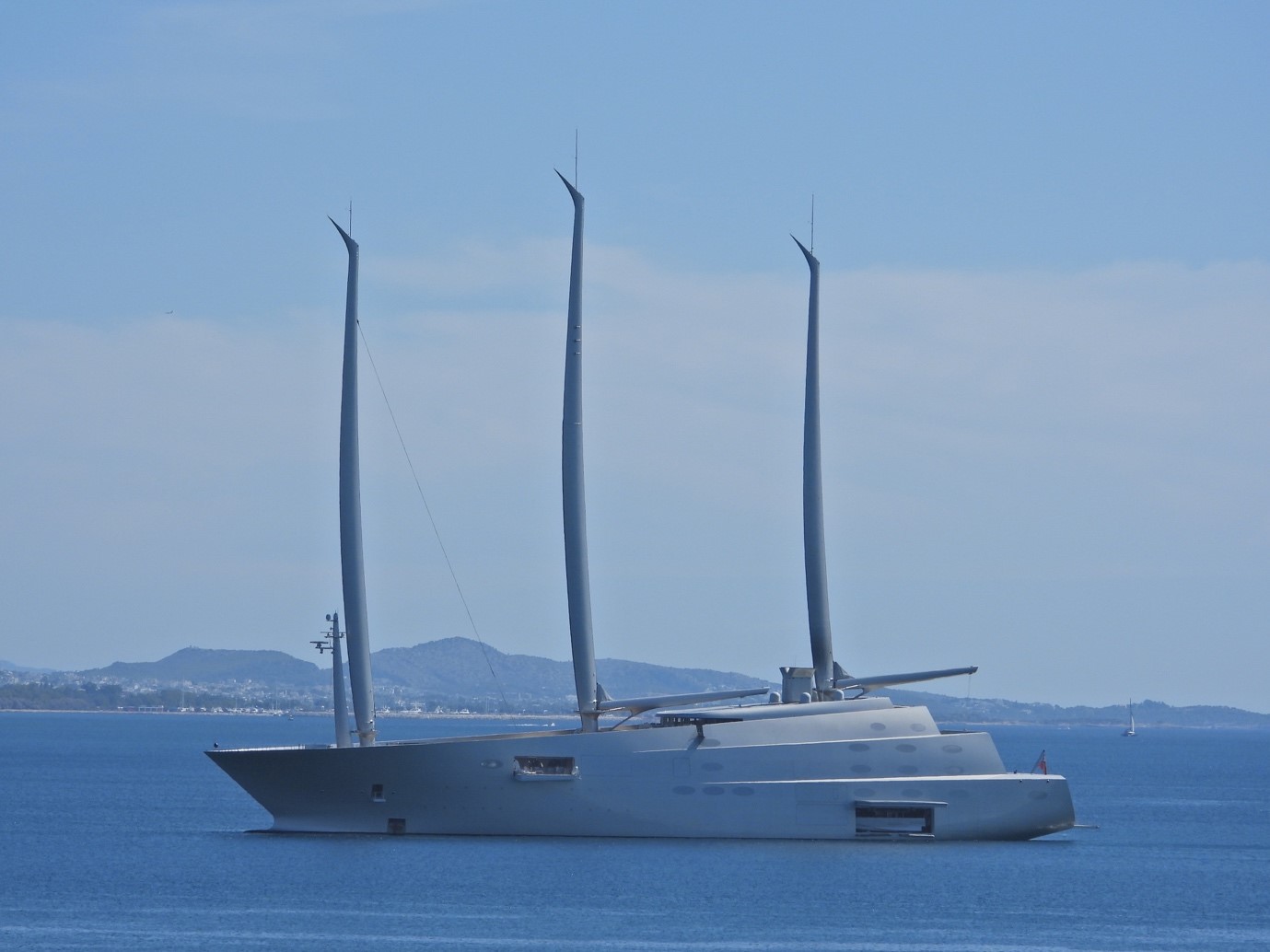
Sailing Yacht A
BATTERY POWER
The market waits for the first battery-powered superyacht. Given the pace of change in other markets, most notably ground transportation, it seems only a matter of time before we see an ocean going equivalent of a Tesla.
GAS RECIRCULATION
While existing fossil fuel propulsion persists, technologies like exhaust gas recirculation provide a compromise to limit emissions.
SENSOR TECHNOLOGY
Better data enables behavior changes which result in more sustainable movement.
This extends into using radar and other sensors to read wave patterns and scan data for the voyage ahead, and to understand and respond to conditions as they evolve. This gives a more comfortable passage and savings on fuel.
DATA MANAGEMENT
Cloud based data management allows remote monitoring and control by yacht owners and fleet managers. This also opens the opportunity to intelligently use that data to deliver seismic changes in efficiency and safety.
AI ENABLED SHIPPING
AI enabled shipping gives the opportunity is to act upon patterns in vastly wider data sets than any human mind can manage, with greater speed and reduced margin for error.
Within yachting the greatest areas of opportunity are in navigation, as well as cyber- and physical security. Navigational gains gain boost safety, but the greatest area of opportunity may be in helping improve sustainability.
SUPPORT-VESSELS
Support-vessels are being more widely specified on new build superyacht projects. The main purpose of the support-vessel concept is to enhance the superyacht experience.
In short, bringing more tenders and toys, better access, and freeing space on the mothership for owner and guest usage.
MULTIHULL
Multihulls are expected to become more common in superyachts. They offer advantages in efficiency, and therefore potentially support the move to zero emissions.
3D PRINTING
3d additive printing technology offers a new route to creating larger yacht component parts.
RADAR AND SENSOR TECHNOLOGY
Radar and other sensor technology can be used to read wave patterns and scan data for the voyage ahead, and to understand and respond to conditions as they evolve. This can help give a more comfortable passage, and savings on fuel.
BRIDGE DESIGN
The look of the overall vessel’s design is increasingly stretching to improved aesthetics on the bridge. This is driven by a desire, and often need, to accommodate increasingly complex operating systems.
This also helps futureproof the bridge for later retrofit of technologies which are now emerging. This includes marine automation, navigation, and communication.
People
CREW MEMBERS
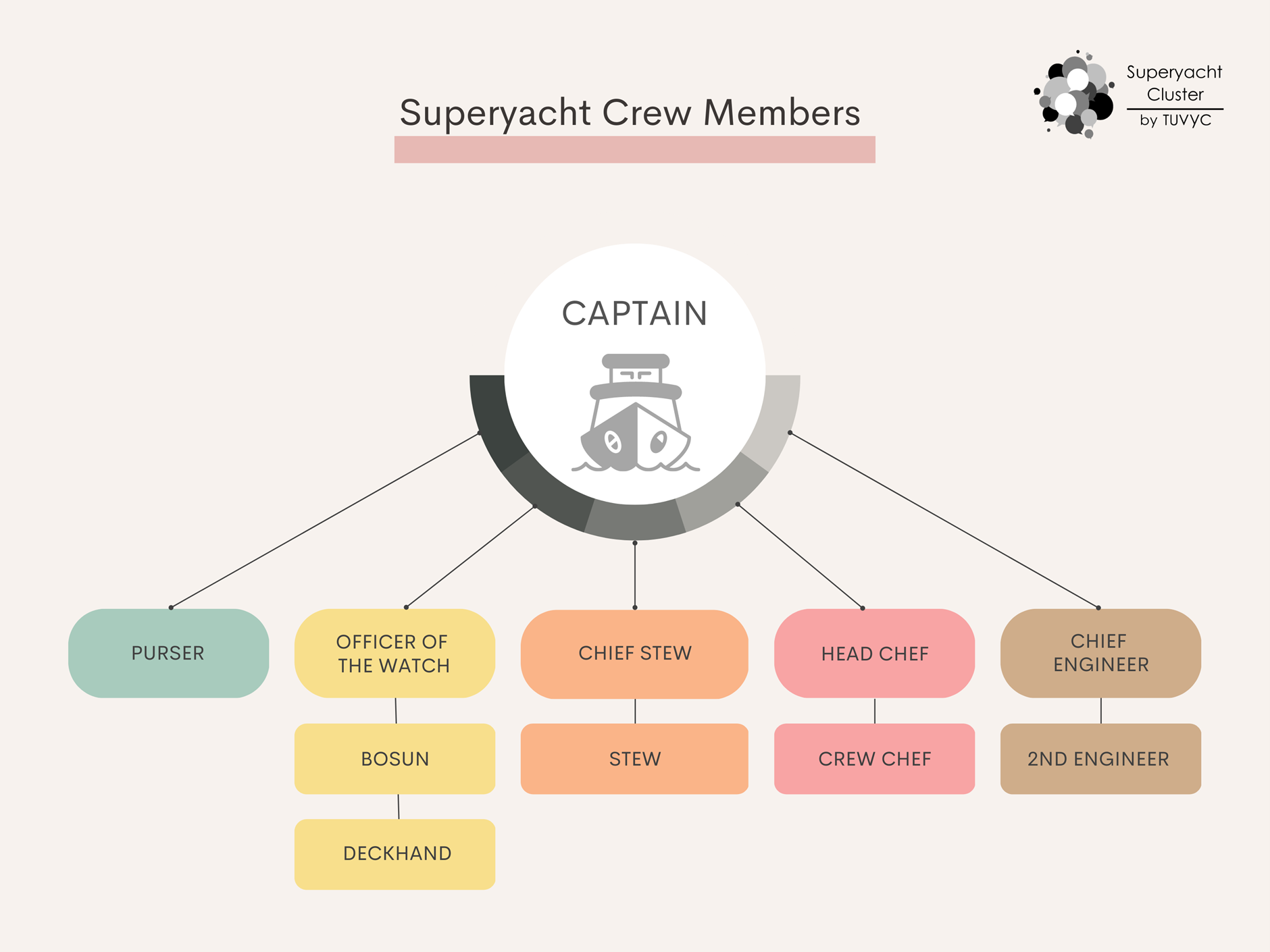
CAPTAIN
Answering only to the owner or their representative or the yacht management company, the captain of the superyacht ensures the safe running of the ship and delivery of the expected guest and owner experience.
This is in many ways like a managing director role in shore-based business and they usually have full control of operational budgets.
OFFICER OF THE WATCH
The officer of the watch is the captain’s second in command. They manage the deck, take turns on watch, and plot the course.
The officer of the watch often takes a lead role in managing maintenance activity, and they are also often responsible for keeping track of deck inventory.
PURSER
The purser is the captain’s right-hand person. They manage the on-board finances of the superyacht. This includes accounting for all the expenditure on consumables. HR and recruitment usually fall under the purser too.
CHIEF ENGINEER
This is one role which delivers much as you’d expect. Full and overall responsibility for the hassle-free mechanical operation of the ship.
HEAD CHEF
The head chef of a superyacht faces the same challenges as those working in Michelin star restaurants. Diners demanding provenance, seasonality, and creativity on their plates.
BOSUN
The bosun is the senior deckhand. They have a team of deckhands working with them and overall charge of daily cleaning and maintenance of the exterior.
The bosun is responsible for setting up and managing safety on all water sports equipment and usually drives the tender.
DECKHAND
Deckhands support the bosun as required, and may assist with things like mooring, security, and other on deck tasks.
CHIEF STEW
Working with a team of supporting Stews they take care of all the interior cleaning, laundry and set up.
They provide silver service waitressing, expert bar skills, organize onboard events and often additional skills such as yoga teachers, masseuses and beaty technicians.
STEW
This team prepares the interior of the superyacht and her cabins, keeping everything spotlessly clean and tidy and serving the owner and their guests’ every need.
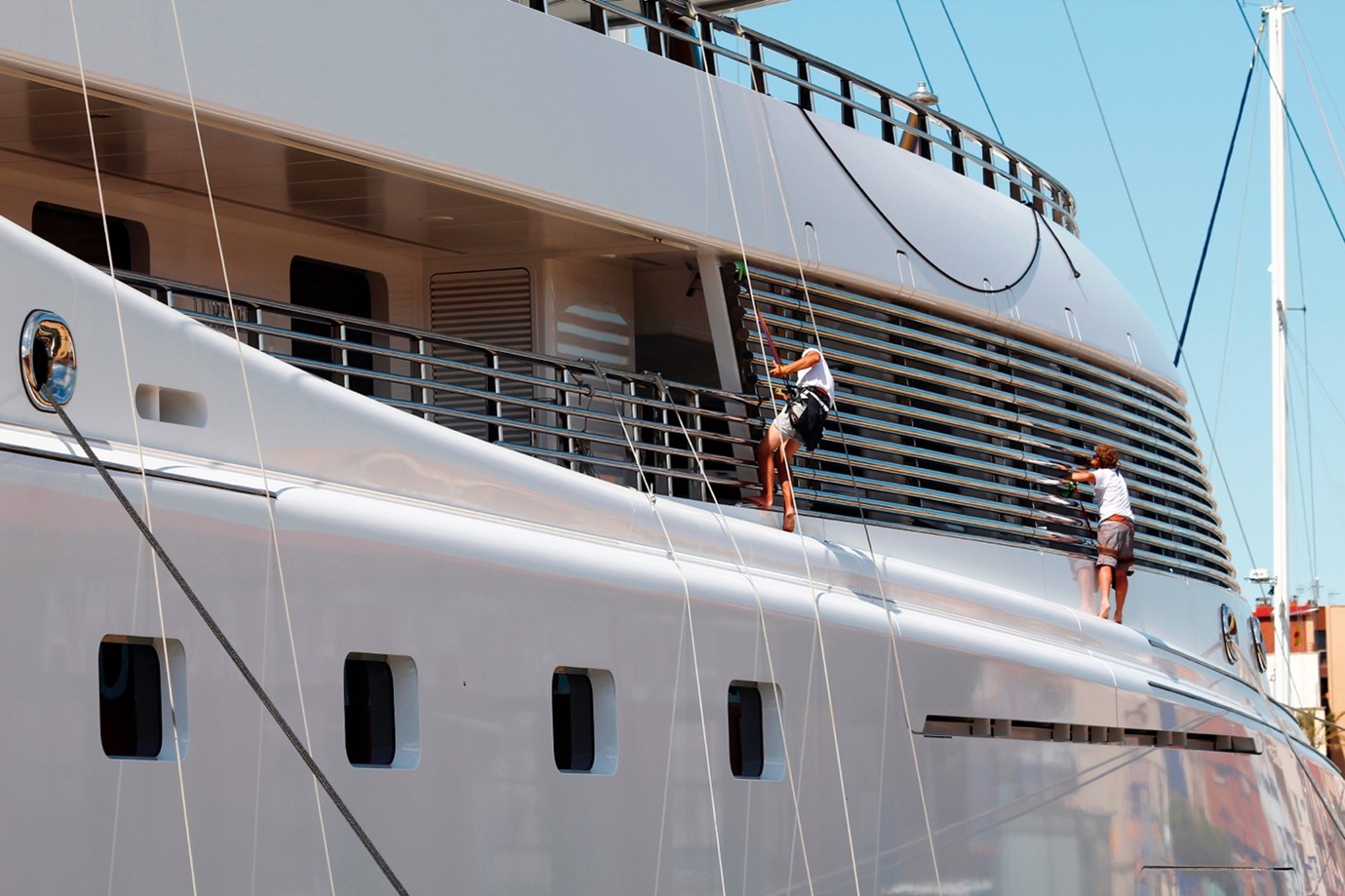
Superyacht crew at work
Professional Services
Beyond the well drilled crew you’ll find on board every superyacht, is an equally diverse team of shore-based support.
Many superyacht owners have a family office who take care of these responsibilities on their behalf.
FINANCIAL SERVICES
Superyacht owners are high net worth individuals who require financial services to help with their insurance, financing, and banking needs.
Beyond direct ownership of a single vessel by one individual, other ownership models exist including syndicated and shared ownership.
Asset purchase may be arranged using various long-term finance models, and others choose to lease rather than buy their boat.
Activities include:
• Payroll
• Tax planning
• Financial entity
• Accounting records
• Expenses management
• Fuel credit
• Insurance
• Charter support
• Anti-money laundering
• Syndicated superyacht ownership
• Ensuring compliance
• Risk mitigation
• New sources of finance
LEGAL SERVICES
Lawyers are required to provide contractual support and dispute resolution for issues around boat purchase, financial and leasing.
Employment contracts, confidentiality and security, and other legal issues keep legal teams busy.
HUMAN RESOURCES
The superyacht industry directly employs around 150,000 people. Each one of these has a requirement for recruitment and training which new entrants to the market may wish to support.
With the high level of seasonality in yachting, many crew are recruited on short-term and temporary contracts. This presents a need for recruitment as well as associated issues like security vetting.
An example of a business operating in this area is Bernard Shulte Shipmanagement which now includes YPI crew in their offer, providing specialist support for yacht crew recruitment.
BACKGROUND CHECKS
With yacht crew hailing from all over the world, management places critical importance on the background of crew working aboard vessels. The good character of the crew working onboard is of paramount importance to the owner and crew’s safety and security.
Hospitality
The hospitality industry is comprised of various sectors that house, feed, transport, and entertain visitors.
Each sector covers a broad range of fields, providing a distinct variety of goods and services. It’s important to note that while separate from one another, they can often overlap and work in conjunction to create one complete and comprehensive hospitality experience.
The food and beverage industry consists of the sourcing, purchasing, preparation, transportation, and serving of food and beverages to customers.
Given the wide variety of options available to customers when it comes to food, this sector has become one of the most successful and easy to identify sectors of the industry.
In the global superyacht industry, the value of the food and beverage market has been estimated to €1 billon.
When we talk about luxury food, we mean the very finest foods and rarest ingredients curated into a Michelin Star level menu.
Superyacht charter guests are asked to provide a comprehensive list of preferred foods that the yacht chef then works with to create a bespoke menu for each individual charter.
Superyacht owners will have made sure they have their chef of choice onboard who understand exactly what foods and drinks they desire, and how they like them to be presented.
Current trends include sustainable food and drinks, many of which are vegan or gluten free. Low calorie and alcohol-free drinks are also sought after, however a big market remains for traditional alcohol brands, rare waters, and health drinks.
The interesting challenge is that superyacht owners and guests will often request unusual delicacies out of season and in parts of the world they are not easily sourced.
Superyachts are essentially floating hotels and require many of the same fixtures and fittings.
These include the following and much more; tableware, furniture, art, accessories, food, kitchen equipment, bathrooms, bathroom accessories, beds, linen, carpets, aircon, security systems and security hardware.
Health and fitness are an ever-growing focus, with gym and other fitness equipment required, alongside personal trainers and other supporting staff.
Many well-known premium brands offer services to superyacht clientele.
For example, the Ritz – Carlton hotel chain has its yacht collection where they offer new experiences for their existing clientele.
Experiences
Superyacht owners and their guests enjoy a vast range of activities on board, on the water, and on shore.
WATER TOYS
Every superyacht will be equipped with water toys enabling guests to take pleasure from the ocean around them. The following and more will be found on board:
• Jet skis
• Kayaks
• Windsurfers
• Paddle boards
• Sailboats
• Speedboats
• Diving equipment
• Fishing gear
• Water skis
SHORE BASED ACTIVITIES
Superyacht owners arrive fully loaded and ready to make the most of their time on land. Superyachts, or their following support vessel, may have the following on board:
• Helicopters
• Automobiles (often a two-seater sports)
• Scooters (often electric)
• Ski-does
• Bicycles (often electric)
BUSINESS ACTIVITY
A superyacht is a perfect place to mix business and pleasure. Owners may specify space and equipment to manage their business with 5-star ease:
• Audio visual facilities
• Superfast wi-fi
• Conference rooms
EXPEDITIONS
Superyachts are travelling more expansively and visiting increasingly remote and dangerous locations.
Such expeditions require a new level of preparedness in both vessel and route planning.
This extends to specifying ever better equipped tenders and support vessels, some with ice class, enabling access to polar extremes.
Many yacht owners already use their yachts for exploration supporting teams of scientists with their research into the natural world. Marine scientists are helped to research, with some superyachts even offering full laboratories on board.
Collecting water and marine samples, and even helping chart unmapped areas of the ocean floor, are other ways superyachts ‘give back’ to the wider world.
They also help with conservation of historic yachts and assist in the discovery and safekeeping of historic sites such as wrecks.
Furthermore, superyachts help in emergency response where natural disasters occur, assistance which is particularly valued in remote parts of the world.
In the future there will likely be even more ways to use superyachts. Introducing superyachts to a wider audience will help find new methods of collaboration and support the common good.
HELICOPTERS AND PRIVATE AVIATION
Airplane and helicopter access or ownership is a prerequisite for most superyacht owners and users.
Advanced technologies supporting sustainability and range gains, as well as more luxurious travel are always desirable.
Businesses including VistaJet and NetJet work very closely with the superyacht market as the end clientele is the same. They both participate in yachting trade shows and feel great synergy between the markets.
MARINA
Global marina businesses are involved in the development and operation of individual ports. They continually seek new technologies and supporting services to maximize their profitability and provide greater client comfort.
Marinas are adding capacity and facilities as they answer the needs of the ever-growing superyacht fleet.
Marina developments are often joint public private funded initiatives, as local and national governments recognize the value yachting brings to local economies. In France, the CCI (French chamber of commerce) is a public company in France which is now running many superyacht harbours in the South of France.
Collaboration Opportunities
Businesses are increasingly working collaboratively for the greater good of managing environmental impacts, delivering improved safety, or simply offering a better customer service.
Such relationships can involve companies working together as their combined expertise enables them to tackle challenges they could not manage alone.
This extends from researching and developing ideas, to fulfilling orders when a smaller business wins contracts on the back of novel or innovative ideas but lacks the infrastructure to deliver on a bigger scale.
Shipbuilder Oceanco encourages local yachting businesses to co-locate within their shipyard. This helps share expertise, creates economic efficiencies including better access to investment and finance, and presents a ‘one stop’ shipyard to the market.

Exercise
1. Consider the opportunities in this manual and identify up to 10 that your business could target.
2. Prioritize the opportunities in order, with the best matches ranked highest.
3. Outline any changes you would need to make to your proposition to appeal to your target sectors.
4. How big is the commercial opportunity for your business?
Course Manual 2: SYC History of the Superyacht Industry
THE HISTORY OF THE SUPERYACHT INDUSTRY
LEARNING OUTCOME
Create your backstory. In an industry of storytellers, you’ll need to tell people why you do the things you do, and how your proposition helps them write the next chapter in their own superyacht story.
SYNOPSIS
In this manual we explore the birth and development of a global industry and how it got to where it is today.
Arming you with details of the pioneers who dreamt up, engineered, bought, and enjoyed the greatest superyachts through the ages.
Discover how the onshore support industry came to be, who were the first and most prominent key players and who is still around today.
7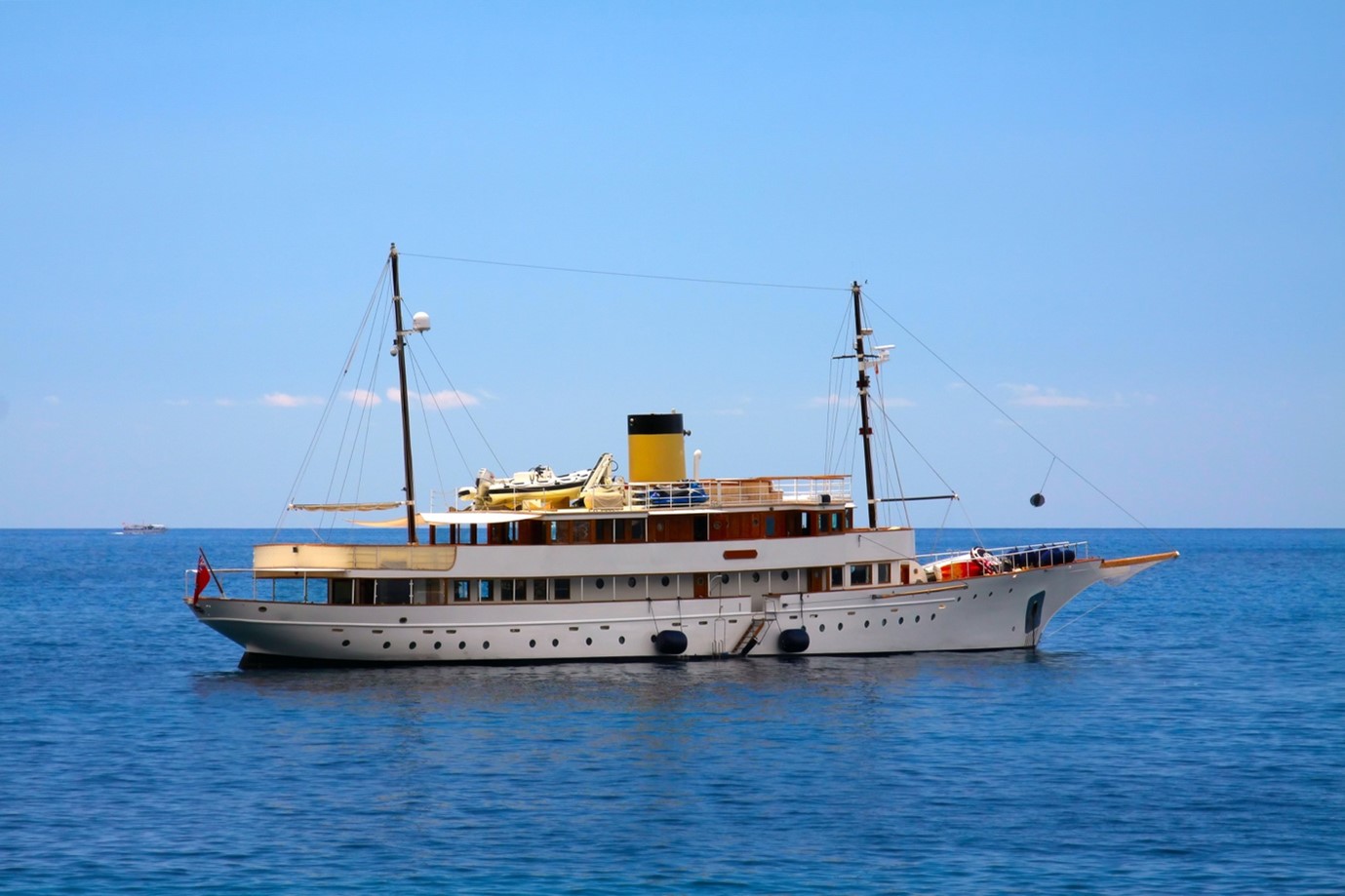
Foundation Stories
From the 14th century Dutch sailors used small, fast boats for chasing smugglers and pirates. It is in these much smaller boats we find the origins of today’s superyachts.
What began as a practical way to defend a business’s revenue, soon grew into a source of pleasure too. Just as superyacht owners today mix business and pleasure.
Merchants and ship owners began sailing out to celebrate the safe return of their boats and cargo.
They found such pleasure in these trips it was soon all the rage to take trips purely for fun, and yachting for pleasure was born.
ROYAL SEAL OF APPROVAL
Charles II of England was exiled in Holland before he returned to the English throne in 1660. On leaving Amsterdam to return home, the city presented Charles with a luxurious 60-foot yacht.
Inspired by his gift from the Dutch, Charles studied navigation and naval architecture. He went on to commission a series of over 15 royal yachts.
BIRTH OF RACING
Soon after Charles II’s return, we have the first recorded yacht race in 1661. This first organized regatta took place over a 40 mile stretch of the river Thames.
Charles raced his newly constructed yacht, Katherine, against the Duke of York’s new yacht, Anne. With Charles at the helm, Katherine took the spoils, and the new sport of yachting began.
Always fast to follow royal trends, the world’s wealthiest people would soon take to the water. Naturally, they strove for ever greater speed and luxury. A quest which continues to this day, and nowhere more so than in the superyacht.
THE FIRST SUPERYACHTS
It is in the era of the steam yacht when things start to scale-up, and we begin to see concepts which we’d recognize as predecessors of today’s superyachts.
Steam power ended the reliance on sail and mast. And, while many continued to sail for pleasure, others recognized that with steam power below deck, there could be endless space for pleasure and play.
As we entered the new millennium yachts over 80 metres in length could be measured in single digits. Today, there are well over 100 yachts in the 80 metre plus bracket, including around 50 at 100 metres plus.
Designers
Just as we might trace the lineage of a champion racehorse, so too we can find the layers of design evolution through landmark superyacht projects, and the people who made them happen.
The design DNA of pioneering designer Jon Bannenberg is found throughout today’s superyacht design industry.
Working from his London studio Bannenberg would go on to collaborate with many of the best-known names in yacht design. Including, Terry Disdale, Tim Heywood, and Andrew Winch.
Terry Disdale went on to help launch the career of Donald Starkey, who himself would later help Jonny Horsfield of H2 Design. Mike Whitely of RWD was helped by Andrew Winch.
The influence of Bannenberg has seen London remain the preferred location for superyacht design.
TIAWANA
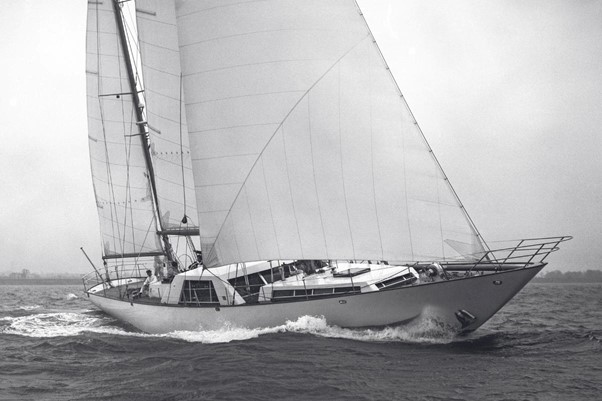
Bannenberg’s first yacht Tiawana
Bannenberg’s first project, the 1968 launched Tiawana, was the first yacht design which promoted the exterior aesthetics as a priority.
The naval architect used to have full responsibility for the shape of the yacht. Whilst the best would have had an eye for a stylish design, the approach was essentially scientific and based on practical engineering requirements, with aesthetics a secondary consideration. Since the 1970s most superyacht projects have been designed top down.

Case Study: PELORUS
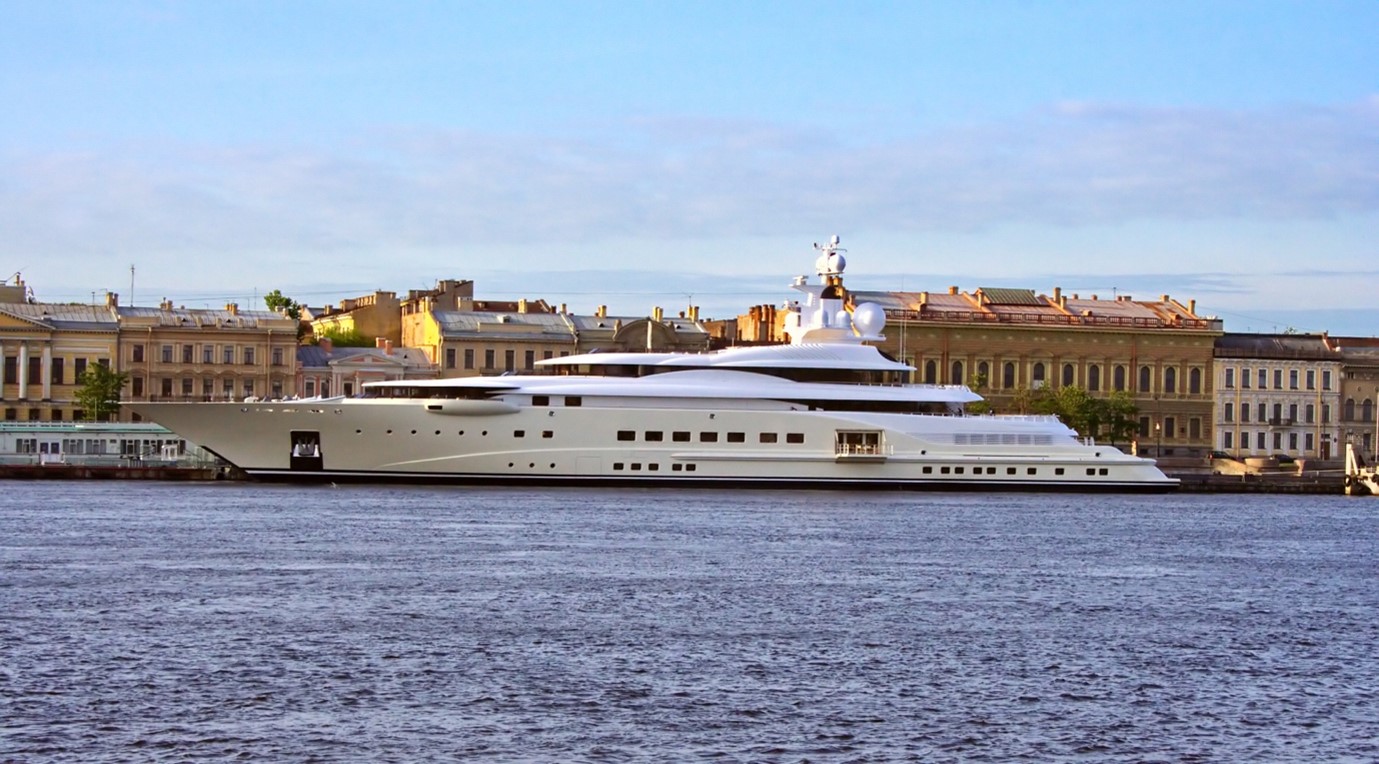
115-metre Lürssen superyacht Pelorus
Bannenberg’s ongoing influence can be seen in later collaborations between those he helped learn.
The 115-metre Lürssen superyacht Pelorus, delivered in 2003, was a collaboration between the German shipyard, and designers Tim Heywood and Terence Disdale.
Pelorus has sold at a profit on each of the four occasions it has changed hands, testament to the quality of design and build.
“Yacht design is the most exciting, demanding and satisfying design field I know. No other design discipline mixes the sculptural art of designing the exterior, the interior proportions, the route planning for the owners, guests and crew and the detailed design of every interior and exterior aspect, from dining tables to door handles, from swimming pools to helipads. – Tim Heywood, superyacht designer.
Superyacht Firsts
2007: Alfa Nero – pool and helipad in one
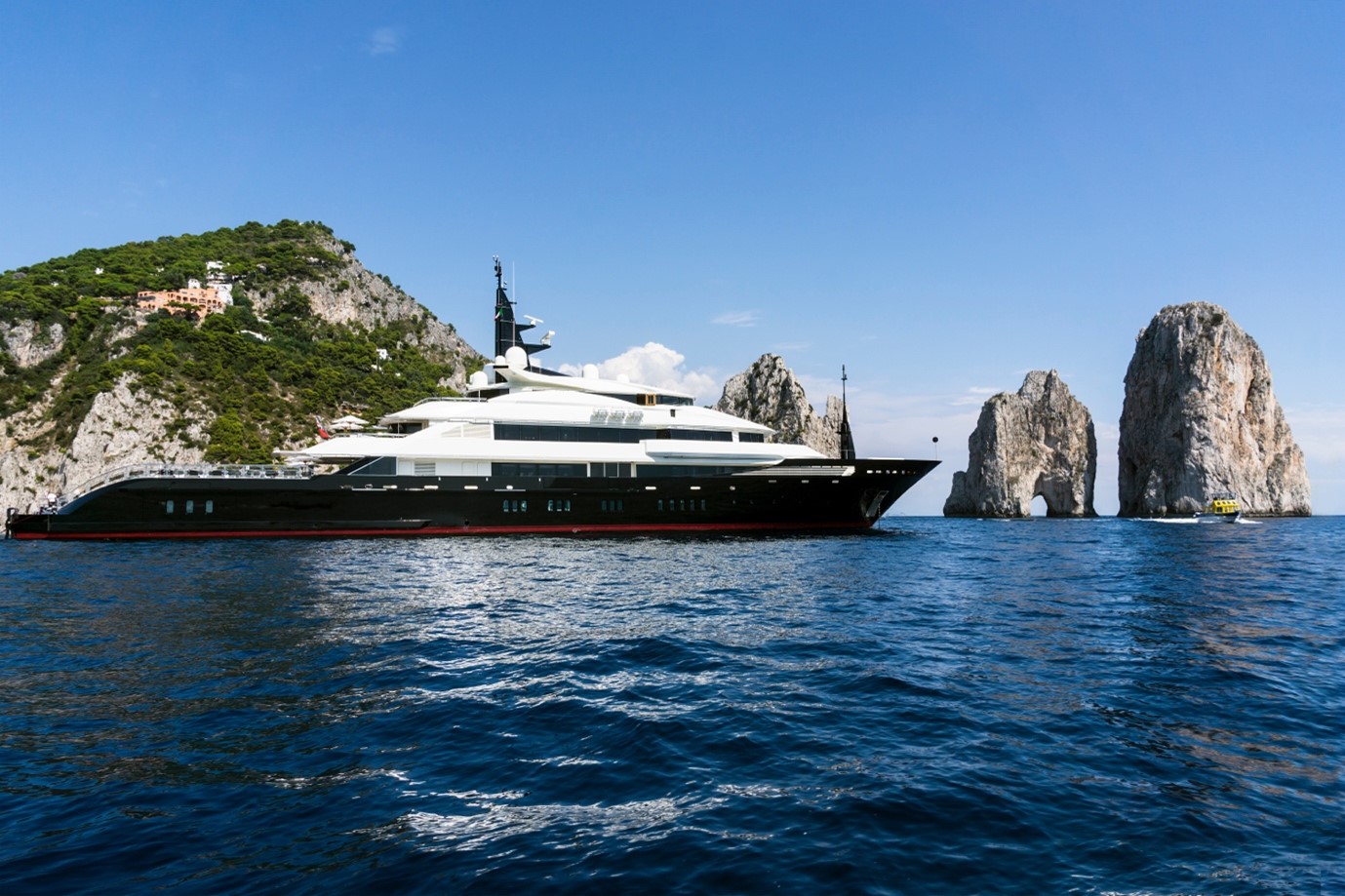
Oceanco’s 82-metre Alfa Nero
Oceanco’s 82-metre Alfa Nero was the first to elevate the aft swimming pool floor to deck level, converting it to a helipad when required.
2013: Azzam – jet propulsion
Lurrsen’s 180-metre Azzam is capable of speeds over 30 knots thanks to its innovative jet propulsion system.
2015 – Savannah – electro-diesel hybrid
Feadship’s 83-metre Savanah was the first superyacht to embrace hybrid technology using both diesel and electric technology to deliver significant fuel saving.
2015: Dilbar – 25-metre swimming pool
Lurrsen working with Winch Design added a 25-metre swimming pool to Dilbar, which is the longest swimming pool ever provided on superyacht.
2018 – White Rabbit – trimaran with foil assistance and diesel-electric
Eco Yachts’ 84-metre White Rabbit combined diesel electric technology with a trimaran hull for even greater efficiency gains.
2018 – Black Pearl – first fossil fuel free Atlantic crossing by a superyacht
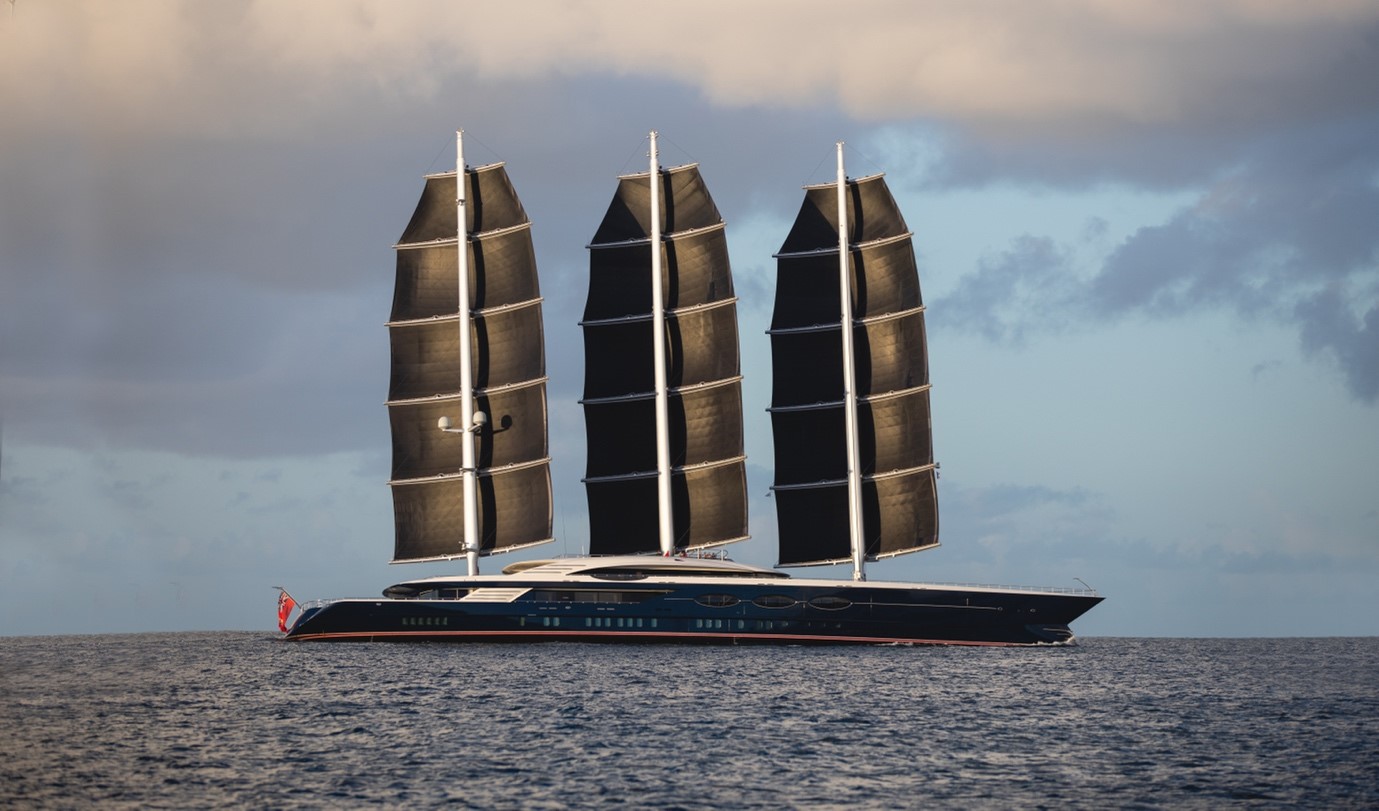
Oceanco’s 106-metre Black Pearl
Oceanco’s client requested a superyacht which could cross the Atlantic without burning fossil fuels. This resulted in the 106-metre Black Pearl sailing yacht which combines traditional sail power with a kinetic energy system which harvests wind power.
Technology Stories
The superyacht industry has been likened to Formula 1 motor racing. Both deliver and develop innovative solutions and technologies which other industries later adopt and utilise.
INETRNAL COMBUSTION
Steam engines remained the dominant source of power until the early 20th century. They began when people saw the advantages of adding auxiliary steam engines to large sailing yachts.
Nicolaus Otto and Gottlieb Daimler first developed gasoline engines, in 1876. Their technology was precarious, and pricey. Then, in 1903, the first diesel power plant unlocked a boating revolution.
With greater reliability and lower running costs, diesel became the fuel of choice, and remains prevalent in superyachts to this day.

Case Study: LÜRSSEN AND DAIMLER

In 1886, several years before his first automobile took to the streets, pioneer of the internal combustion engine, Gottlieb Daimler had a problem.
He was working to develop a small, high-speed engine. The world remained cynical that his ideas could ever match the dominant power source of the age, steam.
Daimler commissioned shipbuilder Lurssen to build a boat to test his engine. The 6 metre REMS became the first internal combustion powered boat. The trial was a success. Steam was phased out, diesel persists.
In a strange twist with today’s challenges, people remained skeptical of petrol power. So, the designers claimed the boat was powered by electricity, which was more widely accepted.
Daimler went on to sell their first automobile in 1892, and their heritage lives on today in the Mercedes brand.
Lurrsen remains one of the world’s leading boatbuilders. They specialize in superyachts over 60 meters and are especially known in the 100 metre plus segment.
The superyacht building business at Lurssen is part of the wider NVL Group. NVL stands for Naval Vessels Lürssen and is an independent, privately owned group of renowned Northern German shipyards and related companies, formerly known as Lürssen Defense.
Their aim is to consistently provide tailored, smart and cost-effective naval solutions that keep navies mission-ready around the world.
NVL has completed more than 1,000 naval vessels and coastguard vessels since their beginnings in the late 1870s and have built and repaired ships for both the German Navy and fleets in over 50 countries.
Today, construction at their network of shipyards is supplemented by licensed manufacturing at customer facilities around the world under technology transfer arrangements.
Now the world waits for the next big thinkers like Daimler and Lurssen, to deliver an enduring technology with the versatility of diesel, yet without the environmental downside.
Innovators would be wise to reflect on the collaborative approach Gottlieb Daimler took. Working in tandem with established experts like Lurrsen, helped get his product to market, and delivered over a century of dominance for internal combustion.
MATERIALS
The story of boat building probably began with a single tree. Wood was the only choice for millennia.
The steam age bought the need for greater strength and durability. Firstly iron, then steel, became boatbuilders’ materials of choice.
Aluminum, and other lightweight alternatives would later find some favor, improving power to weight ratios. However, as this is at the cost of easy repair, and steel remains the default choice.
CARBON FIBRE
Fibreglass works well with mass-produced yachts, which are build using a mould. It is rarely used in superyachts which have one-off designs.
Carbon fibre is stronger, harder, and lighter than fibreglass. It is the material of choice from F1 to aerospace.
In boating, having twice the strength of fibreglass, means using half the materials to achieve the same strength, and stiffer hulls bring more stability at high speed. And, with half the weight of alternatives, the choice of greater speed or better efficiency.
However, these advantages come at a vast cost disadvantage over conventional materials.
The superyacht industry continues to seek new and innovative construction materials.

Case Study: KHALILAH 49M ALL-CARBON SUPERYACHT
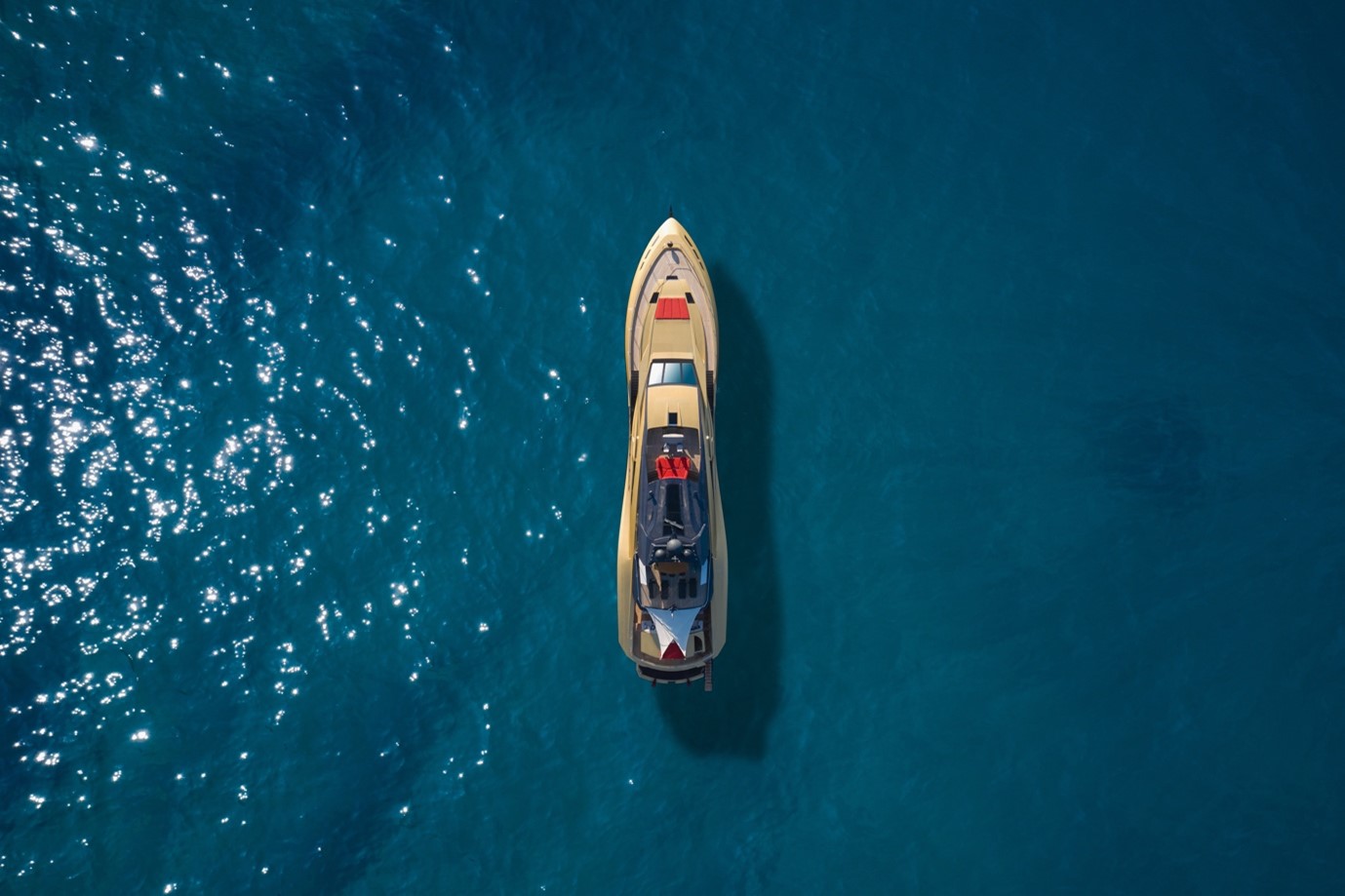
Berkeley March was a finalist in BOAT International’s 2008 Young Designer of the Year awards.
March’s extraordinary concept would go on to seriously shake up the conservative world of yacht design.
Everyone could see it was a beautiful concept, but the age-old problem persisted: could it be built?
Time for some new thinking. Enter Timur Mohamed, owner of American boatbuilder Palmer Johnson, which went on to produce the 49 metre SuperSport Khalilah.
Mohamed brought March to Palmer Johnson, seeing that the fledgling designer’s concept had the makings of a yacht design without compromise.
Unlike her predecessors, which were built in aluminium, Khalilah would be built entirely in carbon composite.
The carbon construction enabled provision of a 110 square metre aft deck, which is closer to the space you’d expect on a multihull.
The slender naval architecture and carbon composite construction gives a weight saving of about 20 tonnes, providing a noteworthy top speed of 32 knots, from much less power than a conventionally engineered yacht.
Water Toys
Keeping pace with superyacht design trends and technical innovation is an ever-growing list of toys to be enjoyed.
Back in the 1970s owners and guests might expect to have fishing, snorkelling, and windsurfing as their daily leisure options.
Fast-forward to the 2010s and you’ll likely find jet skis, canoes, and kayaks. Today it is common to find a significantly more powerful Jet Skis, SeaBobs, and pro-level diving kit.
Onshore Support
As the scale and number of yachts has grown over the past few decades, the global industry supporting their operation has become more sophisticated too.
FINANCIAL SUPPORT
HNWIs haven’t the time or desire to individually manage each of their assets. They therefore employ an office of support staff to manage the maintenance, performance, and transfer of assets.
BROKERS
The yacht brokerage is central to the global trade in superyachts. This highly collaborative market ensures yacht owners’ interests are protected. Experienced brokers bring unparalleled access to key buyer and influencers.
CHARTER
A yacht charter team will manage the business of marketing superyachts for charter, the contracting of each individual hire, and the ongoing management of the superyacht while it is available for charter.
The chartering industry for superyachts emerged in the 1970’s. Names including Neville Crichton and Sir Donald Gosling were instrumental in the early years, developing the superyacht charter concept.
MEDIA
Printed publications like Boat International may no longer be the only way to access the superyacht audience, but they remain an important part of the overall marketing mix.
SuperYacht Times and its associated publications are considered a definitive source of market data. With over 20 years of data to play with and share, they remain the best place to find out the individual back story of a superyacht, or what is happening next in the market.
Location Stories
AMSTERDAM
The Netherlands is a focal point of superyacht activity, due to the quality of its superyacht construction market. The region has always been known for its craftsmanship and the highest quality standards when it comes to both newbuild and refit.
Amsterdam, the capital of the Netherlands is one of the world’s most unique city destinations. With more than 800 years of history, Amsterdam boasts many points of interest for visitors, including of course, the city’s world-famous canals.
Amsterdam is a natural stop-off for superyachts heading to the increasingly popular yachting destinations in Scandinavia, the Baltic, the Fjords and the Arctic region.
DUBAI
Once a small fishing village in the Arabian Gulf, Dubai is today one of the most cosmopolitan cities in the world. Dubai is one of the seven emirates that make up the United Arab Emirates.
The Dubai Creek district is a corner stone of Old Dubai and one of the most iconic locations in the country. As the primary trading centre in the old days, Creek in many ways was responsible for the growth of Dubai to what it is today.
More recent additions to a superyacht itinerary, which may be considered history in the making, include:
• The Palm Jumeirah Islands
• The Burj Al Arab
• The Dubai Marina
• The World Islands
MIAMI
Miami, the iconic sunshine state city, is the superyacht capital of the Americas.
Miami is a large multicultural city with around 500,000 residents, and coastal neighbor Fort Lauderdale adds another 200,000.
Miami has a year-round boating season, and a huge array of boating-related activities can be enjoyed on board all types of vessels in its beautiful waters.
MONACO
Monaco is the yachting business capital of the Mediterranean. September sees the coastline covered in luxury yachts for the Monaco Yacht Show.
With over 300 companies operating in the yachting sector, the principality is world number three after the USA and France in Brokerage & yacht Management.
Most superyacht industry insurance companies, financial advisors, wealth managers and yachting related businesses have their office in Monaco.
Monaco Yacht Club (YCM) is one of the most prestigious yachts clubs in the world and many of its 2,500 members are ultra-high net worth individuals.
Monaco is the capital of advanced yachting and works towards more ecological and sustainable yachting future by supporting the new technologies of propulsion.
Home to the Monte Carlo Casino, Grand Prix, and some of the best spa experiences in Europe, the popularity of this destination is only set to continue.
Monaco has a higher proportion of ultra-high net worth individuals within its overall population that any other location.
The Monaco flag is considered the most prestigious flag state for ship registration. Owners can expect to wait 10 years for the hugely oversubscribed moorings.
Events
MIAMI INTERNATIONAL BOAT SHOW
The Miami International Boat Show is one of the biggest boat shows in the world. It is an essential calendar event for American and international boat buying. The boat show brings an estimated $1.3 billion to South Florida.
MONACO YACHT SHOW
The annual Monaco Yacht Show features superyacht builders, broker agencies, designers and naval architects, ports, marinas, and yacht insurance and management companies.
The show exhibits a wider range of products and services for the ultra-high-end markets. Including luxury products, cars, and motorcycles, and even helicopters and private jet manufacturers.

Exercise
PEOPLE
TECHNOLOGY
LOCATIONS
MOTIVATIONS

Course Manual 3: SYC Present Superyacht Market Situation
LEARNING OUTCOME
Identify which sectors provide greatest opportunity today.
SYNOPSIS
The facts and figures the superyacht global order books and how to find out this information for yourselves.
What is the split between private and charter superyachts and how that effects the market.
Discover the new build sector and the refit sector, the buying power of each and how they differ.
Gain impartial data on how the superyacht industry has continued to grow throughout the recent pandemic and the reasons why it is one of the most stable luxury markets.
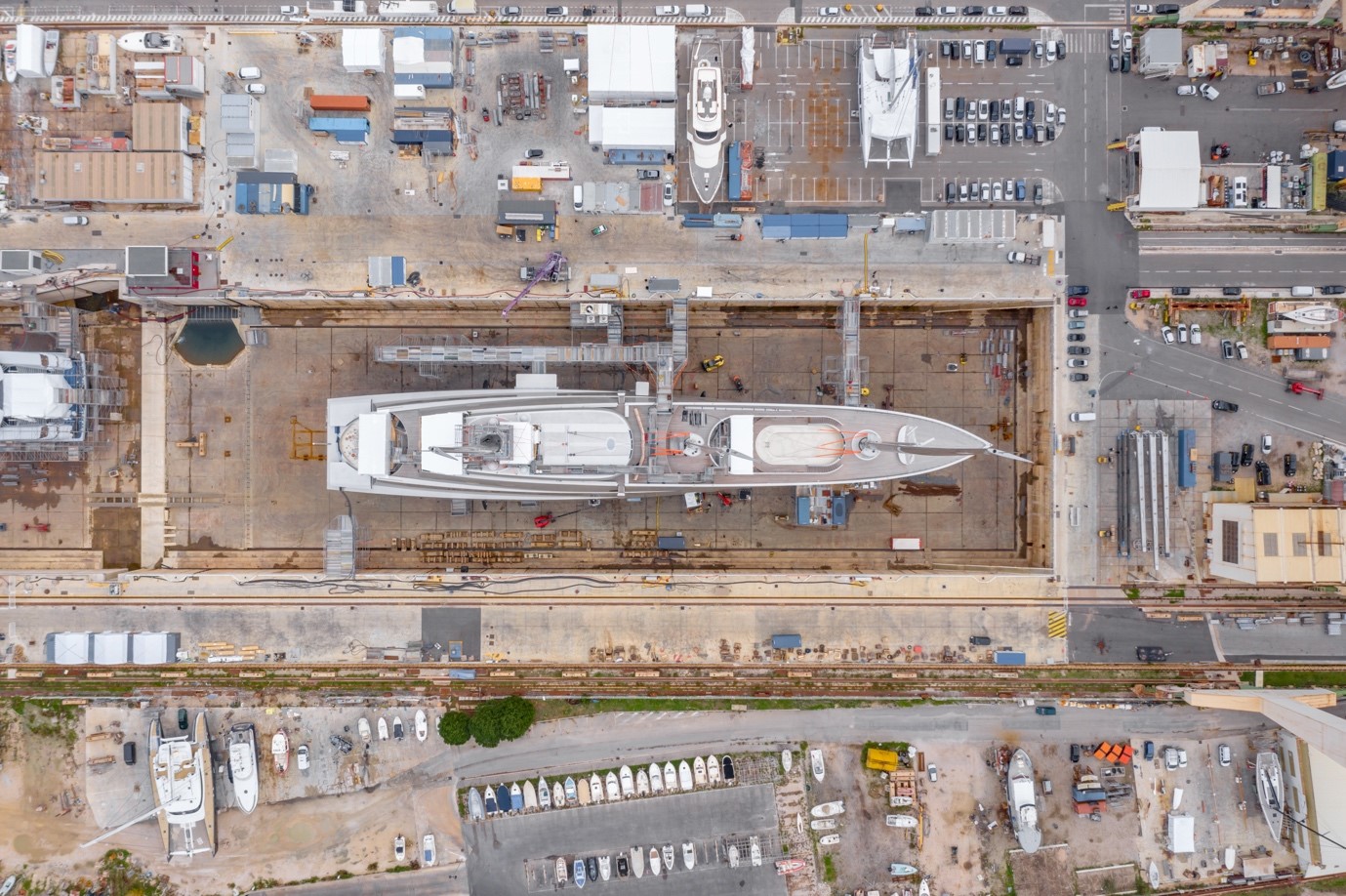
Present Market Situation
The growth of the superyacht industry is largely driven by a growing demand for luxury vessels, as well as an increase in the number of wealthy individuals in the world.
Additionally, technological advancements have made it easier for superyacht builders to construct larger and more advanced vessels.
The industry is supported by a strong network of designers, engineers, and subcontractors who specialize in the construction of superyachts.
The facts and figures of the superyacht building global order books are difficult to obtain. However, data can be found through various research reports, trade publications, and industry associations.
We will explore in detail the various data sources available to you in a later module.
Current Market Data: 2023 Order Book
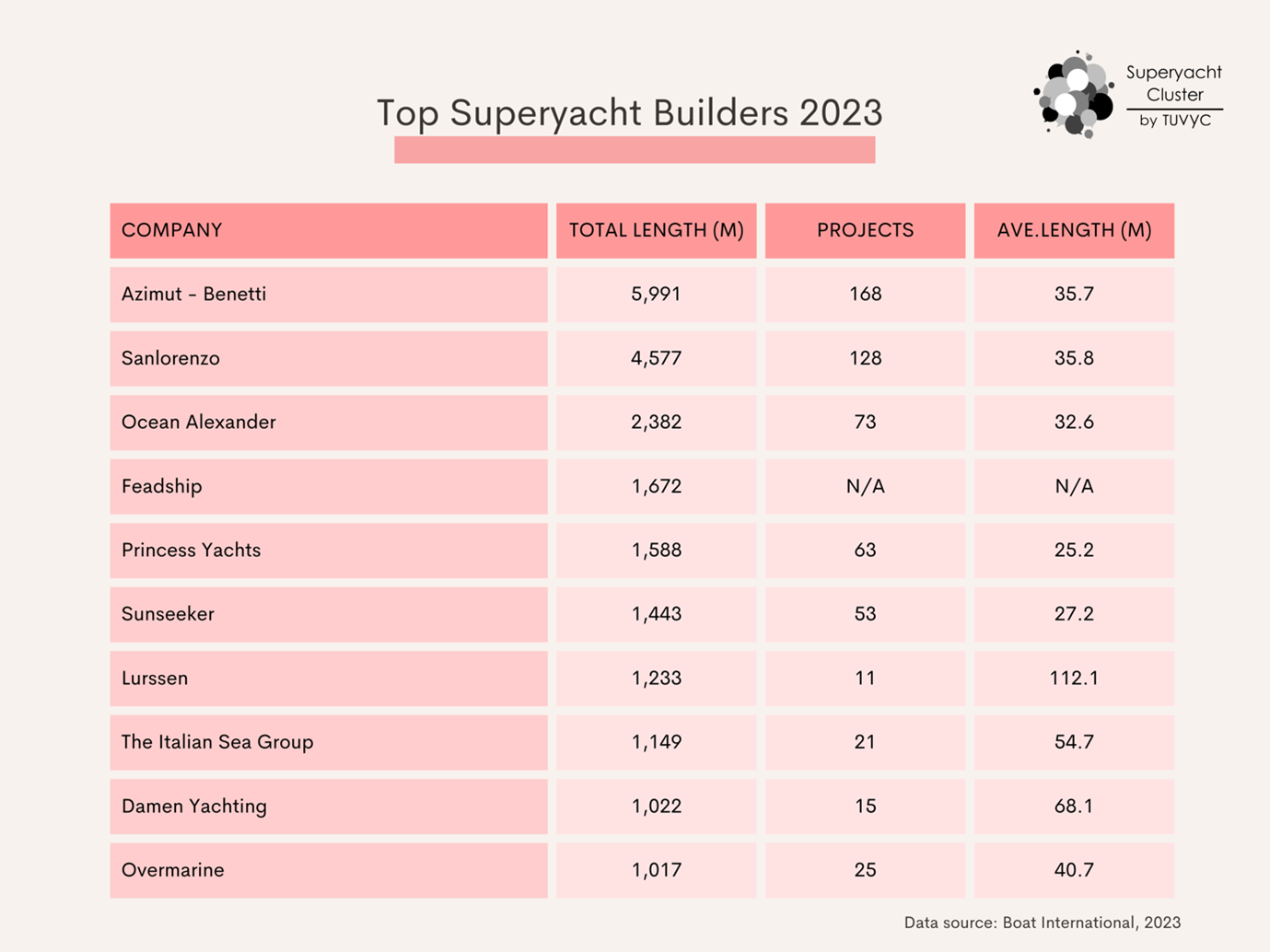
The Global Order Book indicates an industry in good health, with a record-breaking 1,203 superyachts currently being built or on order.
The number is 17.5% higher than the 1,024 from the previous year.
The demand for larger yachts has put a strain on shipyards, and the Global Order Book showed that the smaller superyacht sector (24-27m) experienced the largest growth, increasing by 25.6% with 71 new projects.
The Global Order Book reveals several global trends, such as an increased interest in explorer yachts and multi-hulled vessels.
The data also indicates the continued success of the semi-custom yachting market and the strong performance of Italian shipyards.
Shipbuilder Profiles
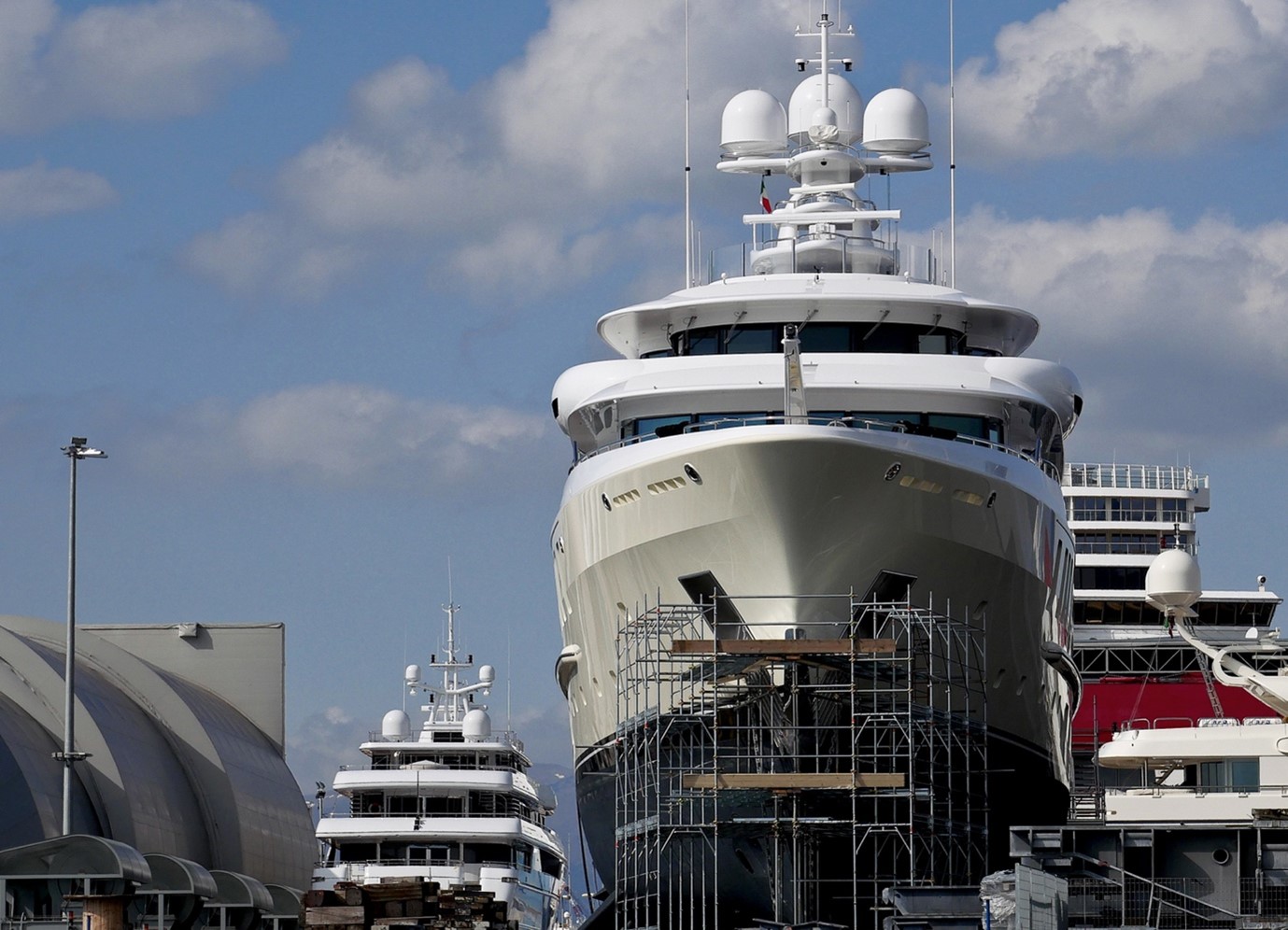
The following is a small selection of shipbuilder profiles from some of the more prominent brands.
FEADSHIP
Feadship is a Dutch company that is renowned for building the finest quality luxury motor yachts.
Established in 1949, Feadship began as a marketing partnership between six Dutch shipyards, de Vries Lentch, Van de Stadt, Witsen & Vis, Akerboom, De Vries Scheepsbouw and Van Lent Shipyard, and De Voogt Naval Architects.
The acronym for First Export Association of Dutch Shipbuilders, Feadship’s mission was to market superyachts to buyers in the United States.
Today, Feadship comprises two builders, four yards and a naval architecture firm, delivering superyachts from 50 – 100+ metres in length.
The company has been successful due to its focus on perfection. This has been helped by celebrity owners such as magazine publisher Malcolm Forbes, who commissioned the 46-meter superyacht Highlander. Apple’s late founder Steve Jobs is also on the client list with Venus.
LÜRSSEN
Lürssen Yachts is a family-owned yacht building company based in Germany that has earned an international reputation for its bespoke, exclusive yachts of outstanding quality.
Founded in 1875 by Friedrich Lürssen, the company is now in the hands of the fourth generation. With a workforce of 1,800, Lürssen maintains three state-of-the-art production facilities in northern Germany.
The company is committed to developing sustainable technologies and innovations in yacht building. This includes improved fuel efficiency and lower emissions, as well as a reduction in noise levels.
Lürssen is particularly driving the research and development of fuel cells powered by methanol.
Notable launches include Microsoft co-founder Paul Allen’s 127-metre superyacht Octopus and Oracle CEO Larry Ellison’s 138-metre Rising Sun. In 2013, Lürssen launched Azzam, the world’s largest superyacht at 180 metres.
SANLORENZO
Since 1958, Sanlorenzo has been producing luxury motor yachts, tailored to the specific requests of the owner.
Sanlorenzo has forged strong connections with the design and art worlds. The company is a global partner of Art Basel, an Institutional Patron of the Peggy Guggenheim Collection, and created Sanlorenzo Arts, a platform for projects related to art and design.
New Build vs Refit
The superyacht refit industry is a booming business that provides a wide range of services to yacht owners, ranging from complete rebuilds of classic yachts to modern refits of luxury vessels.
The key difference between the superyacht new build and refit markets is the scope of work that is undertaken.
A new build project involves the construction of a new vessel from the ground up, which requires a much more comprehensive scope of work and involves detailed engineering, design, and construction of brand-new components.
A refit project typically involves the repair, maintenance and/or upgrading of an existing vessel. Refit projects usually involve less intensive engineering and design work but may require more specialized labor and materials to complete the project.
When deciding where to have a refit done, people consider factors such as budget, quality of work, and the availability of local resources. The cost of a refit can range from a few hundred thousand dollars to tens of millions of dollars, depending on the size and scope of the project.
Refits on superyachts usually happen every five to ten years, although some yachts require more frequent maintenance. A typical refit project involves a detailed assessment of the yacht’s condition, an evaluation of safety and operational requirements, and the installation of new systems, furniture, and amenities.
The biggest challenge for a refit project is to maintain the yacht’s structural integrity while adding modern features and amenities.
Key companies in the refit industry are located in Europe and the United States, such as Lürssen Yachts in Germany, Fincantieri in Italy, and Derecktor Shipyards in the US.
Along with the ongoing need to keep every superyacht pristine, the entire fleet will require a retrofit upgrade to sustainable propulsion soon.
This is a monumental undertaking, with a huge investment required both from boat owners, and from shipbuilders who will require additional facilities and people do provide these upgrades in addition to their existing refit workloads.
The refit industry is actively seeking people and technologies to meet this challenge.
National Profiles
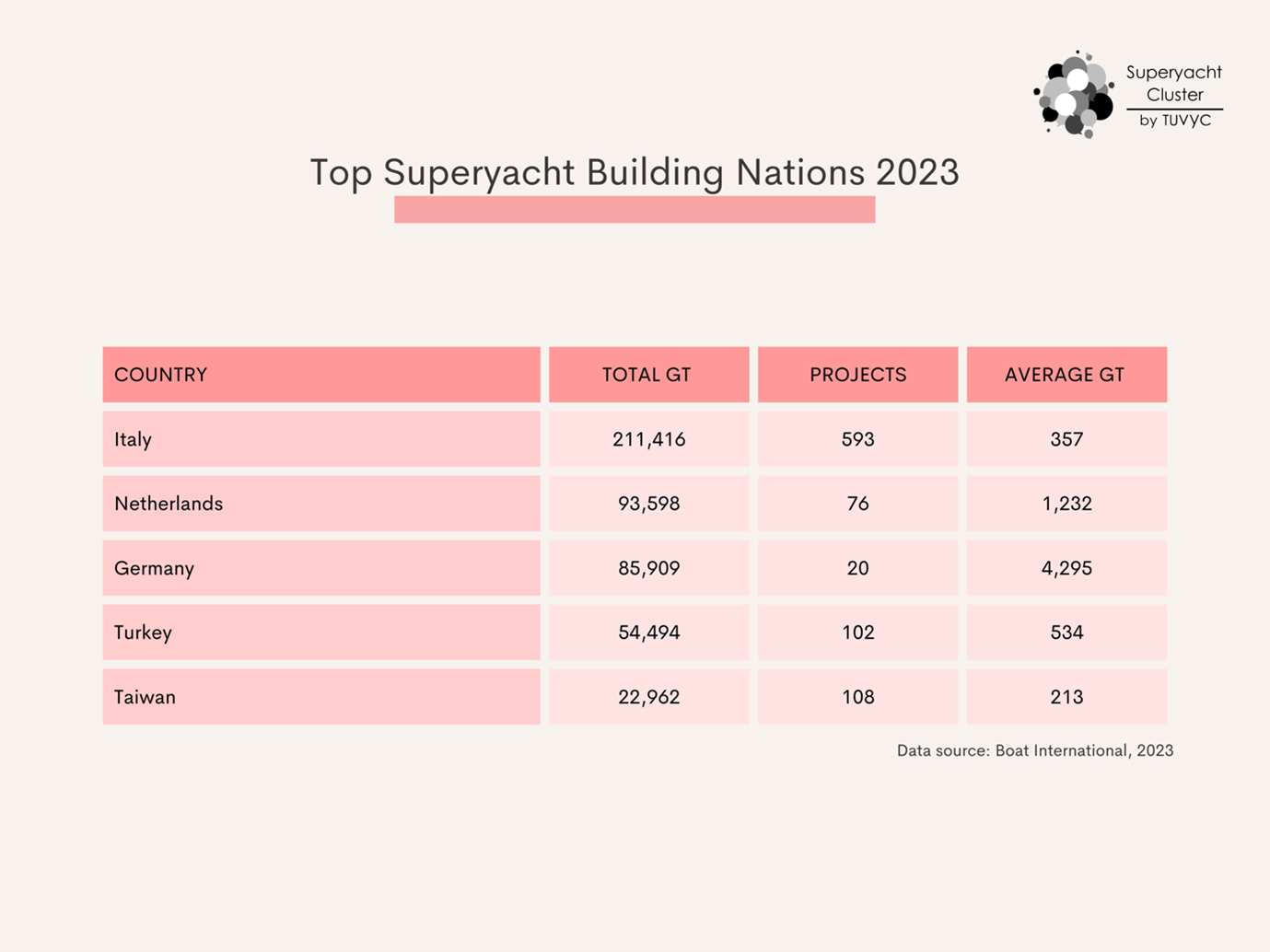
The past year saw Germany leading the world’s largest projects, with an average length of 97.3 metres. The Netherlands followed close behind at 65.6 metres, while Italy trailed further down the list with an average length of 37.2 metres.
Given Italy’s dominance in the semi-custom market, it is not surprising that its closest competitors specialize in other areas. German and Dutch yards, for example, have a significant share of the market for larger, custom superyachts.
GERMANY
Germany is well known for its superyacht building industry, which is focused on building some of the most luxurious and technologically advanced yachts in the world.
Companies such as Lürssen, Nobiskrug, and Blohm + Voss have all been based in Germany since the 19th century and are renowned for their craftsmanship and attention to detail.
Germany is also home to some of the most renowned superyacht designers and engineers, such as Espen Øino, Philippe Briand, and Reymond Langton.
Germany is also known for its innovations in yacht construction, such as the use of advanced composite materials and the development of innovative propulsion systems.
NETHERLANDS
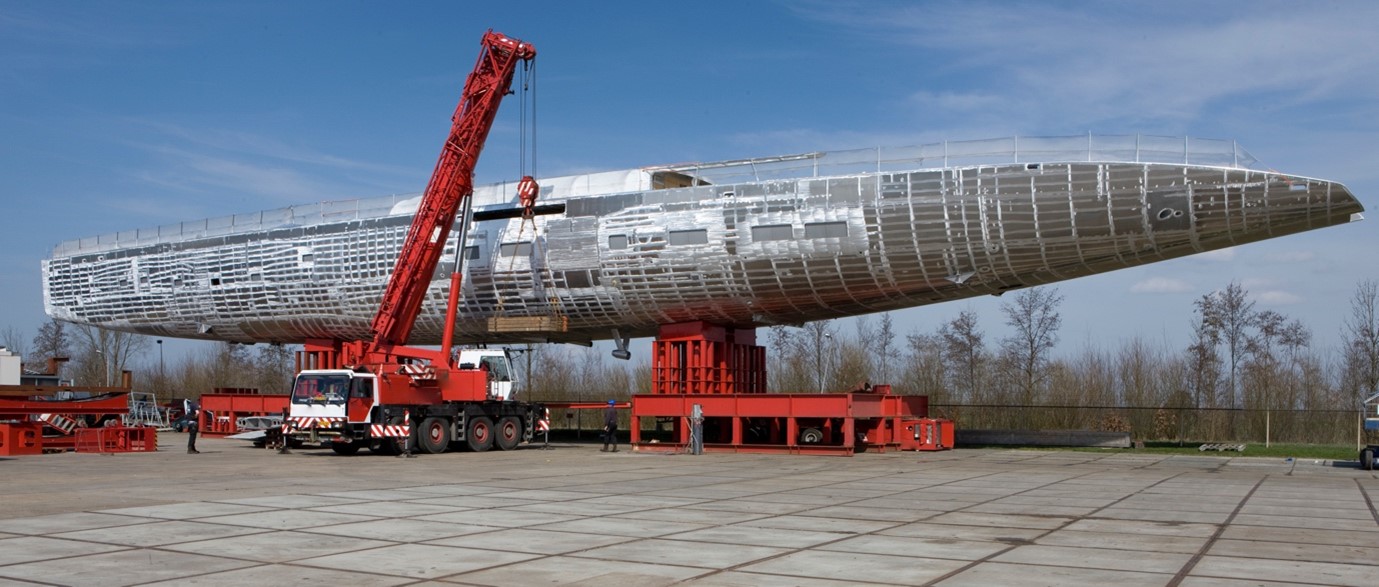
The Dutch superyacht building industry is renowned for its high-quality craftsmanship and innovative designs. The country has a long history of boat building, and its shipyards are known for their attention to detail and use of the latest technology.
Dutch superyachts are also known for their luxurious interiors and custom-made features. The Dutch are also renowned for their commitment to sustainability, with many of the country’s shipyards using eco-friendly materials and processes.
Companies such as Amels, Feadship, and Royal Huisman are all based in the Netherlands and specialize in the construction of luxury yachts.
The Netherlands is also home to some of the world’s most renowned superyacht designers and engineers, such as Frank Mulder, Pieter Beeldsnijder, and Pieter Beeldsnijder.
USA
The United States is known for its large, high-end superyacht building industry.
Companies such as Christensen Shipyards, Delta Marine, and Trinity Yachts are all based in the United States and specialize in the construction of luxury yachts.
The US is also known for its innovative technologies, such as the use of carbon fibre and lightweight materials in yacht construction, as well as advanced navigation and communication systems.
ITALY
Italian superyacht builders are renowned for their ability to customize vessels to meet the exact needs of their clients.
Companies such as Sanlorenzo, Codecasa, and Benetti are all based in Italy and specialize in the construction of luxury yachts.
Italy is also home to some of the world’s most renowned superyacht designers and engineers, such as Stefano Righini, Giorgio Vafiadis, and Tommaso Spadolini.
Charter vs Private Ownership
Private ownership of a superyacht means that the yacht is owned by one individual or family and is not available for hire. Chartering a superyacht, on the other hand, means that the yacht is available for hire to other individuals or groups for a fee.
The split between private and charter superyachts is roughly 60% private and 40% charter.
The charter market has grown rapidly in recent years, with the number of charter superyachts increasing by more than 10% per year since 2015. Private superyachts have also grown, but at a slower rate.
The charter market offers a wider range of options and services, allowing owners to rent out their vessels to charter customers, while the private market offers a more exclusive experience.
The requirements for charter vessels are typically more stringent, as they must meet safety and operational standards set by the charter company. Private vessels may have fewer restrictions, but they must still meet safety and operational standards set by the flag state.
The advantages of offering a superyacht for charter include the ability to generate revenue, and the ability to offset the costs of owning and maintaining the yacht.
The disadvantages include the potential for damage to the yacht, as well as the risks associated with allowing strangers onto the yacht.
There are a variety of tax, operational, legal, and other issues that must be taken into consideration when offering a superyacht for charter. These include obtaining the necessary licensing, insurance, and permits, as well as ensuring that the yacht meets all safety and security requirements.
To charter out a superyacht, the owner must first ensure that the yacht is properly registered and insured. The owner must then identify potential customers and determine the terms of the charter. The owner must also advertise the yacht for charter and provide a contract for the charter. Finally, the owner must ensure that all necessary paperwork is completed and that all payments are collected.
Online Charter Booking
With similarities to the likes of Airbnb and Uber, online charter booking businesses have disrupted the traditional charter booking business model.
One example of a business operating this way is Ahoy Club.

Case Study: AHOY CLUB
Ahoy Club is a service for charting superyachts. It is a platform that connects yacht owners with potential charterers, allowing yacht owners to list their vessels and charter them out to interested parties.
Ahoy Club was founded by a group of yacht charter professionals in 2017. Their goal was to provide a more efficient platform for yacht owners and charterers to connect.
Advantages for yacht owners include the ability to easily list their vessels, manage their charters, and receive payments through the platform. It also allows them to find and connect with potential charterers quickly.
Advantages for people chartering a boat through Ahoy Club include access to a wide selection of vessels and the ability to compare prices and amenities.
Ahoy Club is successful in many areas of the world, including the Mediterranean, the Caribbean, and the United States.
Ahoy Club promotes itself through online marketing and advertising, as well as through word of mouth. They also offer discounts and promotions to encourage people to use their platform.
Market Resilience
The superyacht industry is relatively unaffected by any economic downturn, the recent covid pandemic, war in Ukraine, and other forms of instability.
This is due to the wealth of its clientele and the high cost of its vessels, as well as its long history of ownership by some of the world’s wealthiest families and dynasties.
Superyacht owners are ultra-high net worth individuals (UHNWI), possessing wealth in the hundreds of millions and even billions of dollars.
The cost of a superyacht project is often relative to other assets that UHNWI people may own, such as art, real estate, and other luxury items.
Market Drivers: Green Technology
The introduction of new technologies, such as 3D printing and virtual reality, is playing an increasingly important role in the development of the superyacht industry. This is encouraging investment.
However, the biggest areas for investment are in green technology, renewables and other sustainability initiatives which aim to reduce the impact of superyachts.
SOLAR POWERED PROPULSION TECHNOLOGY
One recently developed green and sustainable technology being retrofitted to superyachts is solar power.
This technology uses photovoltaic cells to power the yacht’s propulsion system, replacing traditional diesel engines.
The benefits of solar power include reduced noise and air pollution, lower operating costs, and a more sustainable energy source.
Solar power technologies are made by companies such as SunPower Corporation, which produces a range of solar panels and systems. Their solar-powered propulsion systems have been installed on over 50 superyachts.
ENERGY STORAGE SYSTEMS
This technology uses lithium-ion batteries to store energy generated by solar panels, wind turbines, and other renewable sources.
It replaces traditional diesel-powered generators and provides a more efficient, reliable, and cost-effective energy source.
SunCatcher Energy, based in San Francisco, California, manufactures and sells this technology, and their energy storage systems have been installed on over 100 superyachts.
HYDROGEN FUEL CELL TECHNOLOGY
Hydrogen Fuel Cell Technology uses hydrogen fuel cells to power the yacht’s propulsion system, replacing traditional diesel engines.
The benefits include reducing emissions, noise, and fuel costs.
AUTOMATION TECHNOLOGY
Companies such as Marine Robotics, based in the UK, are working on automation solutions to help reduce costs and improve safety in the superyacht industry.
Automation technology is needed in the superyacht building industry to speed up the process of designing, constructing, and maintaining the vessels.
Automation technology can help to reduce costs, improve quality, and increase efficiency. It can also help to reduce the amount of human labor needed to build a superyacht, which can help to reduce costs and improve safety.
ADVANCED MATERIALS
Companies including Composite Solutions, based in the US, are working on advanced materials solutions to help improve the performance and efficiency of superyachts.
Advanced materials are needed in the superyacht building industry to improve the performance and efficiency of the vessels.
SMART TECHNOLOGY
Smart technology is needed in the superyacht building industry to improve the safety, efficiency and performance of the vessels. Smart technology can help to monitor the performance and condition of the vessel, allowing for early detection of any problems.
Companies such as YachtEye, based in the Netherlands, are working on smart technology solutions.
AUTONOMOUS TECHNOLOGY
Autonomous technology is needed in the superyacht building industry to improve the safety and efficiency of the vessels. Autonomous technology can help to reduce the need for human labor on board the vessels, helping to reduce costs and increase safety.
Companies such as Autonomous Marine Systems, based in the US, are working on autonomous technology solutions.
NEW BUSINESS MODELS
As with Ahoy Club, who we discussed earlier in the section on yacht chartering, lots of people are disrupting traditional business models.
YACHTNEEDS MARKETPLACE
YachtNeeds Marketplace is an online platform that connects yacht owners and captains with suppliers of marine products and services.
The platform offers a wide range of products and services, from boat parts and accessories to maintenance and repair services.
YachtNeeds Marketplace also provides a secure payment system and a customer service team to ensure a smooth and hassle-free shopping experience.
VIRTUALPURSERS.COM
Virtual Pursers is a leading provider of virtual assistant services for the maritime industry. Founded in 2018, the company provides a range of services to help ship owners and operators manage their vessels more efficiently.
Services include crew management, vessel operations, accounting, and more. The company is based in the United Kingdom and has a team of experienced professionals who are dedicated to providing the highest quality of service.

Case Study: VIRTUAL PURSERS
Virtual Pursers, a leading provider of virtual assistant services for the maritime industry, recently helps superyacht owners manage their vessels.
Yacht owners can save time and money on day-to-day management. The crew, supplies and other tasks are handled without having to hire a full-time on-board manager.
Virtual Pursers provides a comprehensive virtual assistant service that allows yachts to be managed remotely.
The virtual assistant also provides several other benefits. For example, the virtual assistant can provide detailed reports on the vessel’s performance, as well as provide detailed financial information about the vessel. This allows the owner to make informed decisions about the vessel’s operations.
The virtual assistant also provides several other services, such as providing detailed weather forecasts and helping to plan itineraries for the yacht. This allows the owner to make sure that the yacht was always in the best possible condition and that the crew was always prepared for any eventuality.
Virtual Pursers is highly experienced in the maritime industry and has worked with some of the world’s most luxurious superyachts. As such, they have a wealth of knowledge and experience that can be used to help superyacht owners manage their vessels.

Exercise

Course Manual 4: SYC Superyacht Market Outlook
LEARNING OUTCOME
Carve an innovative path and focus your energy on growth sectors.
SYNOPSIS
Gain insight into predicted growth and where the superyacht industry is going.
Find out what existing sub sectors continue to see growth and stability and what new sectors are making a splash in the superyacht industry.
Get ahead of new trends and understand how to adapt your products and services to synergise with where the market is heading.
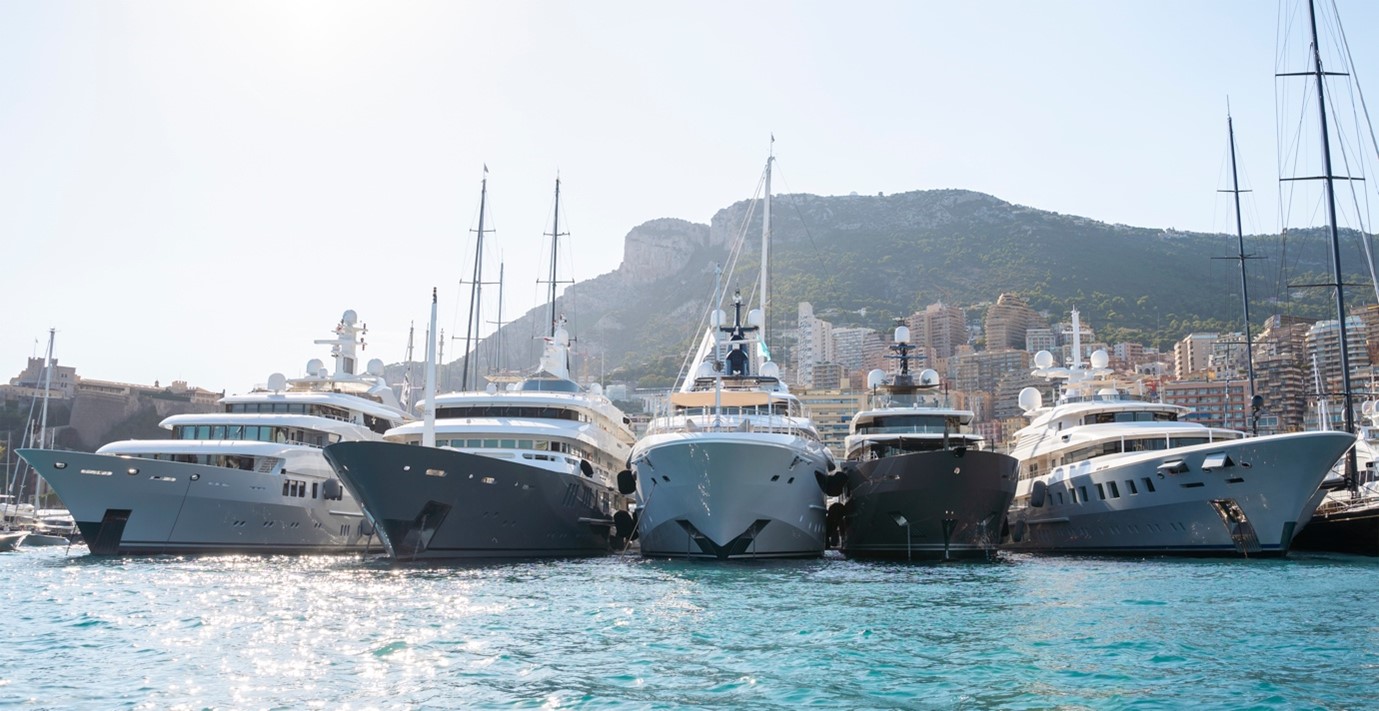
Market Outlook
The superyacht fleet is growing rapidly due to increased chartering, private ownership, and syndicated ownership models.
Owners are looking for more than just excess, they want experience and lifestyle, as well as sustainability. Shipyards are seeking new innovations to meet these demands.
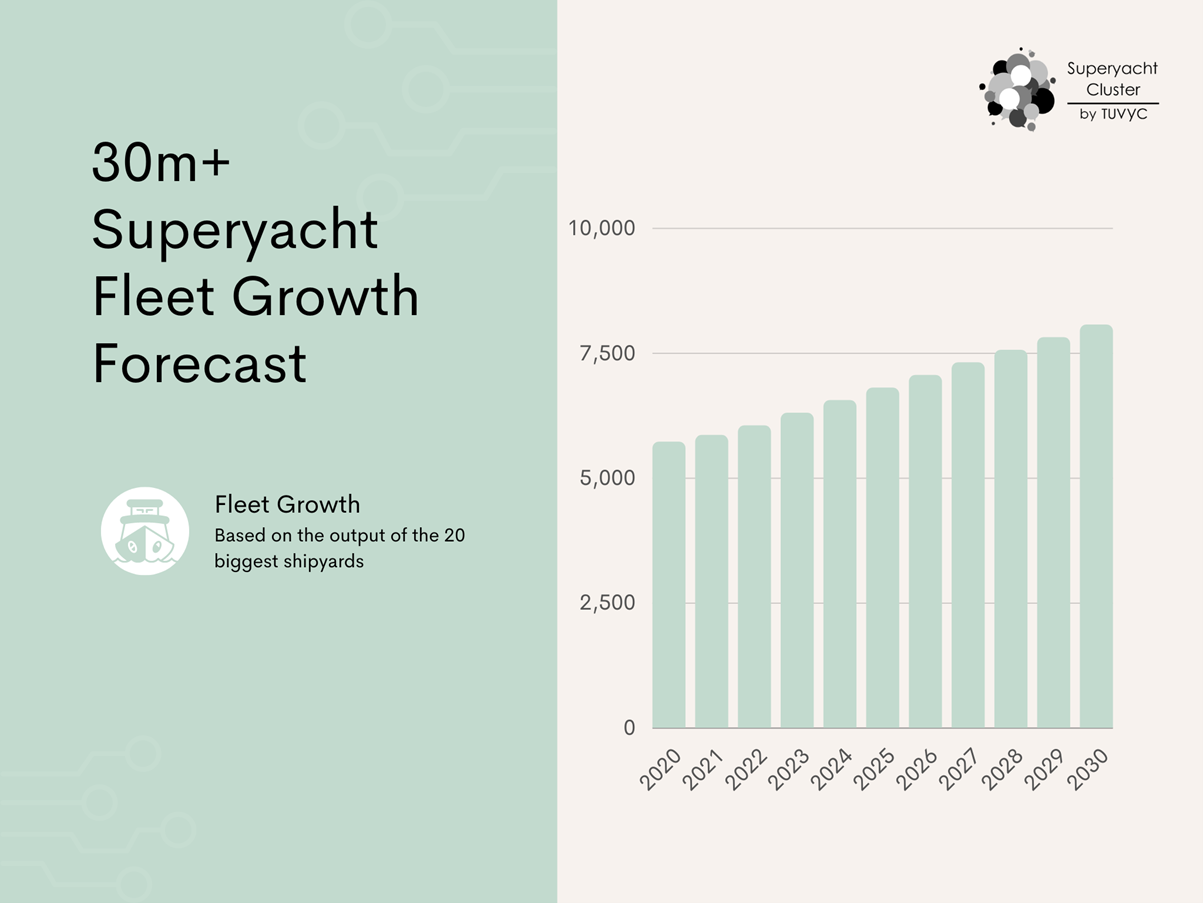
Boatbuilding Trends
The Global Order Book indicates an industry in good health, with a record-breaking 1,203 superyachts currently being built or on order.
This is an annual increase of 17%, and we are expecting the market to continue to grow.
Market leading superyacht builder Sanlorenzo is reporting a record-breaking order book of €1.7 billion. Other shipyards are announcing similarly buoyant trading.
The demand for larger yachts has put a strain on shipyards, and the Global Order Book showed that the smaller superyacht sector (24-27m) experienced the largest growth, increasing by 25.6% with 71 new projects.
It is predicted that in 2023, the number of superyachts with hybrid engines will rise, as boat builders turn their attention to the production of more eco-friendly vessels. This follows on from the six such yachts that were delivered in 2022.
The Global Order Book reveals several global trends, such as an increased interest in explorer yachts and multi-hulled vessels.
EXPOLORER YACHTS
The 2023 Global Order Book shows that explorer yachts are becoming increasingly popular and are now the second most popular vessel type under construction.
With their full displacement hulls, extended storage and sturdy construction, these vessels offer the capability to explore even the most extreme cruising grounds, from the Arctic Circle to Antarctica.
They also come fully loaded with the latest water toys and facilities, such as helipads, dive centres, ski rooms and submersibles.

Case Study: PROJECT ICECAP
Salt, an independent ship design company based in Norway, has been working with Lürssen on Project Icecap, an explorer superyacht which features an ice class hull.
Salt designs are renowned for their excellence in maritime performance. These designs are pioneering, incorporating innovative solutions, compliant with zero-emission regulations.
Since 2012, Salt have produced more than 60 vessels, each one demonstrating their strong passion for ship design and their commitment to working with industry-leading clients worldwide.
Salt’s innovative collaboration processes and software tools have enabled the close working relationship between Lürssen, the designer and the owner to create this high-performance and purpose-built vessel.
Project Icecap, the 107-meter Lürssen superyacht, was commissioned by Canadian billionaire John Carter Risley in 2018.
With a reported price tag of $350 million, the vessel is set to be one of the world’s largest and most innovative yachts when it is delivered in 2023.
Risley, the founder of Clearwater Seafoods and an avid fisherman, seafarer, and experienced yacht owner, expressed that he wanted a yacht that would overcome the limitations of smaller boats.
“My first love is sailing, absolutely,” he explained. “Having said that, if you are going to spend a lot of time on the water, then you have to realize there are limits associated with sailing, especially when it comes to longer trips and the logistics that come with that.”
Risley believed that bigger was better, not just for the sake of it, but because it meant various advantages.
With Icecap, this would include a hybrid propulsion system, large battery banks to provide the power for hotel functions, cutting-edge energy-saving systems, power storage, heating and cooling, more storage space, a redesigned engine room to house three Wärtsilä engines for increased performance and range, and an ice-class hull.
Icecap will have a massive aft deck, with a helipad that can lower the aircraft into storage, huge side garages for tenders and diving gear, and accommodations for up to twenty guests in ten cabins. There will also be an observation room on the upper deck (Icecap has a total of five decks) and all the luxurious amenities one would expect from a custom vessel.
MULTIHULL SUPERYACHTS
A multihull superyacht is a type of luxury yacht that utilizes two or more hulls to provide greater stability and speed.
While traditional monohulls rely on a single hull to provide buoyancy, multihulls use two or more hulls to provide additional stability and reduce drag. This makes them ideal for long-distance cruising and other high-performance activities.
Design Trends
REPLICA TENDERS
Owners increasingly specify limo tenders, as they can take them and their guests from land to sea and keep them shielded from the wind and waves. For an extra special touch, some owners create tenders which perfectly match the design of their boat.
DRIVE IN TENDER BAYS
Innovative tender garages offer a convenient and comfortable way for guests to access their yacht. Not only can they enter the yacht safely from within the garage, but it can also be used to store tenders and toys which can be easily floated in and secured. The water is then be pumped out, ready for onward travel, and the tender garage is reflooded next time it is needed.
PRIVATE OWNERS DECK
Say goodbye to the traditional large stateroom on the main or upper deck – now, luxurious yachts require an entire apartment on a private deck to meet the needs of superyacht owners. For those seeking more than just a balcony, some boats offer an exclusive outdoor area connected to the owner’s suite.
HELICOPTER DECK
A helipad on a superyacht is a must-have for many owners. You can find a range of yachts with helipads, and some even coordinate the color of the helicopter and yacht for a unique look. And, for those who really want to push the boat out, explorer yachts are increasingly being fitted with hangars below deck.
WINE WALLS
A superyacht ‘wine wall’ is a type of drinks storage system found on luxury yachts. It is essentially a large custom-built cupboard which is filled with bottles of wine and other drinks. The wall is usually made from high-quality materials such as wood, marble or granite, making it a stylish and attractive feature of the yacht.
OPEN AIR GYM
A superyacht with an open-air gym gives a luxurious and exclusive experience. Offering a range of fitness activities in the fresh air of the open sea. With the latest equipment and experienced instructors on hand, this is the perfect way to stay fit and healthy while enjoying the breath-taking views of the ocean.
SPA
Steam rooms, massage spaces and gyms are enabling people to keep fit and relax at sea. Some are even adding Turkish baths and hairdressing salons.
INFINITY POOLS
A simple swimming pool is no longer enough. We want an infinity pool which lets us soak in the view.
INDOOR GARDENS
A recent trend has seen vertical internal gardens which are visible from more than one deck.
FLOOR TO CEILING GLASS
No more portholes. With floor to ceiling glass superyacht guests can feel part of their surroundings, whilst still enjoying air-conditioned luxury.
UPDATED BRIDGE DESIGNS
Bridge design is now being given more attention in the design of superyachts. Owners are looking for improved aesthetics, and functionality to accommodate increasingly complex operating systems.
This also helps futureproof the bridge for later retrofit of technologies such as marine automation, navigation, and communication. Additionally, it creates a space for guests to learn about their voyage and enjoy the captain’s view.
Above all, the bridge must provide the look and feel that owners demand, as well as the control that the captain needs. Safety is the primary consideration when designing a bridge system.
Sustainability
Just as we see polluting vehicles banned from many of our city centres today, we are likely to see polluting ships banned from locations tomorrow.
The Norwegian government has taken a significant step in protecting their natural environment by banning cruise ships from polluting the West Norwegian Fjords, a UNESCO World Heritage Site.
This move is intended to preserve the pristine nature of the fjords, which have long been a source of pride and beauty for the country. Cruise ships are known to be a major source of air pollution, and they also contribute to water pollution.
This kind of policy move is only likely to accelerate, and the superyacht industry is responding to move to zero emissions across the fleet.
OWNER DEMAND
Many high-net-worth individuals are focused on sustainability, and to consider superyacht ownership will need compelling evidence that vessels are genuinely eco-efficient and not merely offering greenwash.
INDUSTRY SOLUTIONS
Sustainability in superyachts is a complex issue, with challenges and opportunities in both the building of, and the using of, these vessels.
When it comes to the building of superyachts, sustainability is dependent on the materials used, the production methods employed, and the supply chain that is in place.
When it comes to the sustainability of superyachts in use, this can involve zero emissions, and include the consumables and ongoing maintenance and repair that is required.
Finding ways to reduce the environmental impact of these vessels is key.
The challenge of making superyachts sustainable is a big one, but it is also a massive opportunity for those who can provide the best solutions.
Gone are the days when superyachts were judged solely on the amount of space they offered, the luxurious facilities they boasted, or their maximum speed.
Nowadays, owners are increasingly concerned with the energy recovery systems, efficiency and sustainable material use in their vessels.

Case Study: 109m BRAVO EUGENIA
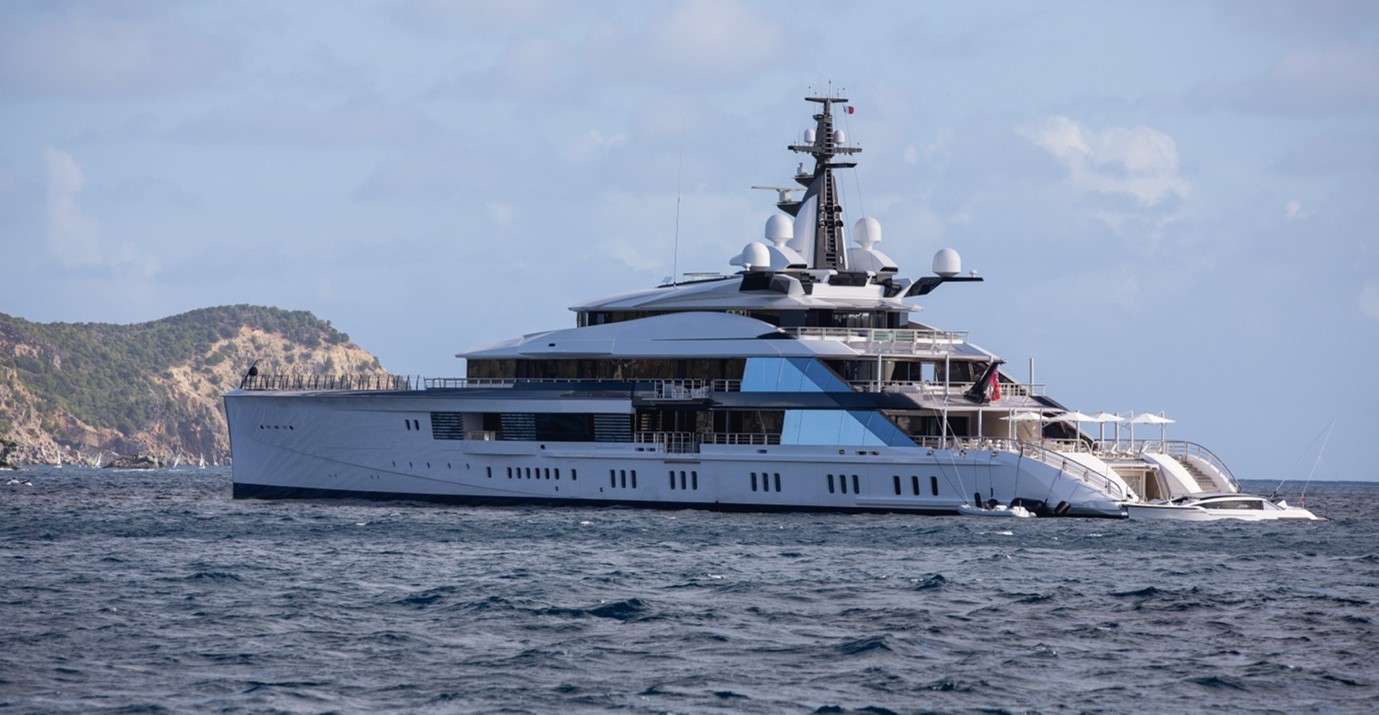
Oceanco’s 109-m Bravo Eugenia
Lateral Naval Architects recently partnered with renowned superyacht builder Oceanco, to create the 109-m Bravo Eugenia.
When it comes to designing a superyacht, Oceanco and Lateral have taken a different approach.
“For Bravo Eugenia we created a virtuous circle model: length and speed driving less power, less space and less weight – on repeat,” says Lateral’s Managing Director, James Roy.
Rather than beginning with the length and focusing on maximizing living spaces and top speeds, they have concentrated on the yacht’s waterline length to reduce the overall propulsion power needs and size of the engine. This has resulted in a beautiful and slim superyacht.
The Bravo Eugenia also has a waste heat recovery system, an integrated battery system and consumes 30% less fuel than a conventional superyacht of the same size, meaning it is better for the environment and reduces operational costs.
The yacht boasts a more efficient engine room, occupying a single tier instead of two, which has freed up an extra 100 square meters for luxury accommodation and leisure areas.
The Bravo Eugenia can reach speeds of up to 19 knots, while providing a more peaceful experience for passengers due to reduced noise and vibration from the smaller propulsion-related equipment.
POWER REMAINS THE BIGGEST CHALLENGE
In comparison to steamships from a century ago, not much has changed; today’s superyachts still rely on fossil fuels for propulsion.
If we are to reach a zero-carbon future, the way in which superyachts are powered must change dramatically in the very near future.
The ambition to achieve zero carbon emissions is driving adaptation of technology from other transportation sectors.
However, whilst there is certainty that fossil fuels are on the way out, the dominant technology to replace them is unclear.
ELECTRICAL ARCHITECTURE
The market waits for the first battery-powered superyacht. Given the pace of change in other markets, most notably ground transportation, it seems only a matter of time before we see an ocean going equivalent of a Tesla.
Installing an electrical architecture that is adaptable to the prevailing fuel type is an effective solution in new superyacht builds, ensuring vessels are future-proofed and ready for whatever the future may bring.
HYBRID SYSTEMS
For superyachts that require more power than can be provided by a single energy source, a hybrid system can be used.
Hybrid systems combine different energy sources, such as solar, wind, and hydro power, to provide a reliable source of power.
Hybrid systems can provide enough power for all on-board systems.
SOLAR POWER
Solar panels can be easily installed and maintained, and can be used to power all on-board systems, including air conditioning, lighting, and entertainment systems.
WIND POWER
Wind power hybrid systems are a logical adaption to motor craft.
By installing a wind turbine, a yacht can generate power, reducing the need for fossil fuels. And adding sails fits the story of elegant travel and exploration which many superyacht owners aspire to.
HYDROGENERATION
Hydrogeneration systems can use a simple electric motor working as an alternator to harness energy from a free spinning propellor while a ship is under sail.
FUEL CELLS (HYDROGEN)
Hydrogen propulsion and other fuel cells are growing quickly in air and ground transportation, but maritime applications bring their own complexities.
Fuel cells are a clean, efficient, and reliable way to generate power. They use hydrogen and oxygen to generate electricity and emit only water vapor as a by-product.
Lurssen is currently building its first superyacht to incorporate hydrogen fuel cell technology.
This provides an efficient, sustainable solution. As well as the environmental considerations, an additional benefit of a fuel cell is that it is practically silent compared to a diesel engine, and the owner experience is greatly improved.
METHANOL
Methanol is another option under consideration, again with logistical limitations.
EMISSION LIMITING
While existing fossil fuel propulsion persists, technologies like exhaust gas recirculation provide a compromise to limit emissions.

Case Study: FUTUREPROOFING AT OCEANCO
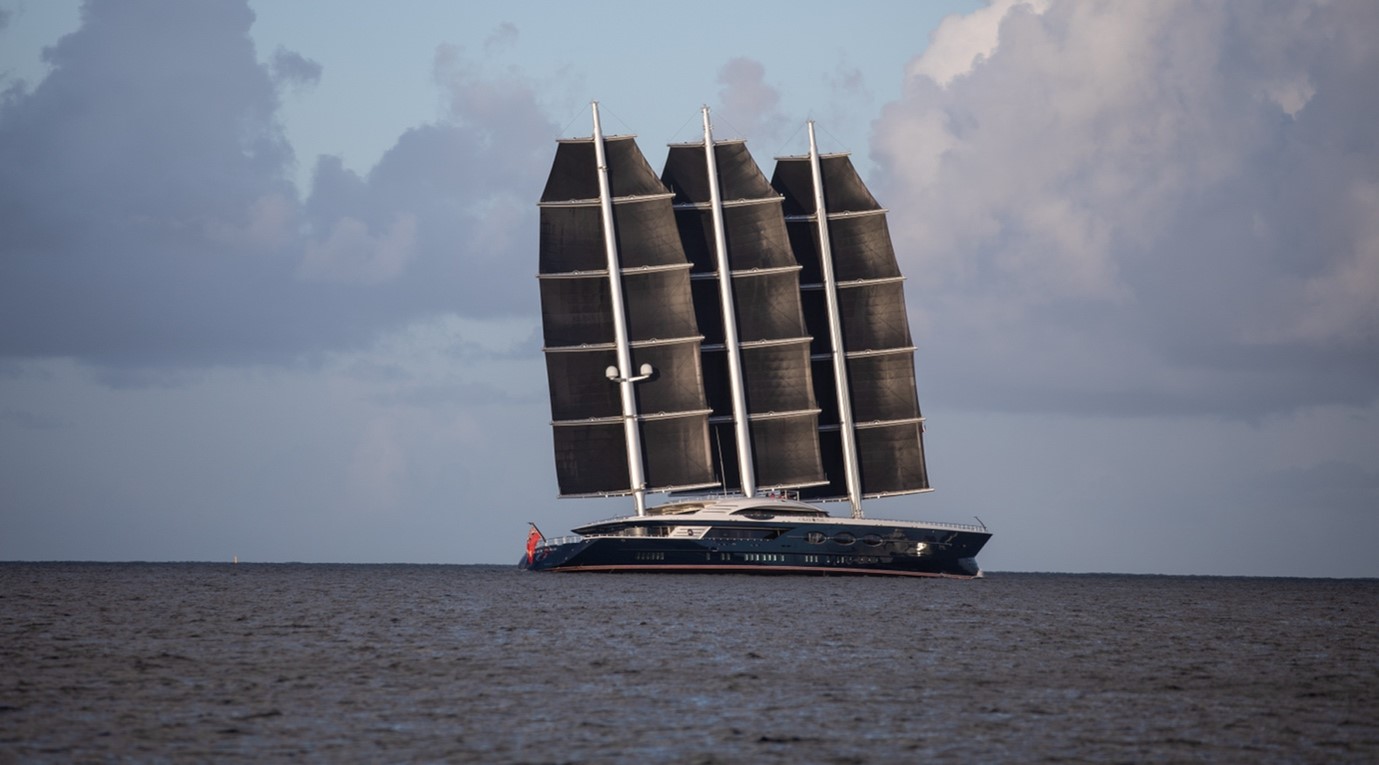
Oceanco’s Black Pearl
Since the 1990s, Oceanco has been crafting exquisite superyachts, with 38 of them in its fleet.
Now, the company is taking steps to ensure its existing vessels are running on sustainable fuels, to reduce its environmental impact.
It’s an ambitious goal, but one which Oceanco is determined to reach – a future where all its yachts are powered by green energy.
Paris Baloumis, group marketing manager at Oceanco, explains: “We want owners of Oceanco yachts to be able to upgrade their vessels. That does mean it is more expensive to build initially because you have to think about denser fuels, bigger tanks, different kinds of insulation and different safety regulations for possible future fuels.
“At the same time, we think that this is the right way to go because new technologies are coming, and you need to anticipate them and have a yacht that will be suitable in a new era.”
In 2019, they acquired a 28-acre facility close to their Albasserdam headquarters to expand their capacity for maintenance, refit and lifetime extension work.
This facility has been equipped with several green technologies that help to reduce their carbon footprint.
For example, they have installed electrically driven heat pumps, which reduce their gas use by half. Additionally, they have implemented solar power, which provides 10% of their annual energy use.
“The energy transition is actually the most important focus for us because it’s all about how we can decrease our dependence on fossil fuels”, adds Oceanco’s Baloumis.
“The interesting thing about this is that we all talk about it in the industry but no one has the magic formula, nobody can say it’s going to be this or it’s going to be that.
“So we are moving forward and we are making sure that everything we’re building now becomes future-proof. That means that with the way we build yachts now, we are going to be able to refit the vessels to accommodate future fuels, whether it is synthetic fuel or methanol or batteries.”
Sustainable Materials
Throughout the superyacht new materials are required to replace and existing options which are environmentally harmful. The brief is to provide beauty in a more sustainable way.
NATURAL COMPOSITES
Bamboo, flax, hemp, cork, and other natural composites can provide a beautiful and sustainable alternative to traditional wood.
They are made from a combination of fibers and other natural materials, making them more durable and environmentally friendly. They are often lighter weight than conventional alternatives.
SYNTHETIC TEAK DECKING
Synthetic teak decking is a composite material made of a combination of plastic, resin, and either natural wood or bamboo fibers. It is used as a decking material on many superyachts, as it is more durable and easier to maintain than natural wood.
Synthetic teak decking is also more slip-resistant than natural wood, making it safer for passengers and crew onboard.
FAUX LEATHER UPHOLSTERY
Faux leather upholstery is more environmentally friendly on a superyacht because it does not require the use of animal hides and therefore does not contribute to the destruction of animal habitats or the use of chemicals and dyes.
Additionally, faux leather is more durable and easier to maintain than traditional leather, helping to reduce the environmental impact of yacht maintenance.
Shipyard Trends
The largest shipyards are growing their market share, marking a slow but steady consolidation of the key players. That said there are still a significant number of small shipbuilders in the market, reflecting the bespoke nature of superyachts.
Consolidation of the market is likely to continue as shipyards are increasingly moving to a portfolio approach. Rather than solely focus on a single market sector, they are building a wider range of yachts across multiple brands and adding refit and rebuild services.
This makes shipyards more financially sustainable, shares technical and strategic expertise, and closes out competition from less advanced rivals.
REFIT CONTINUES TO GROW
The ever-important refit and refurbishment market will remain a massive opportunity and will grow further as the existing fleet of superyachts has greener technologies fitted to meet zero carbon objectives.
Existing superyacht industry infrastructure, including shipyard dry dock space, and the teams of engineers required to do the job are not yet in place.
Lucrative opportunities exist to help service these needs.
Marina Upgrades
As more and more superyachts are launched, existing marina facilities are feeling the strain.
In some of the more popular spots such as Monaco, it is virtually impossible to add extra capacity. This means that these luxurious vessels must moor close together, which can diminish the overall experience.
That creates an opportunity for technology which can anticipate superyacht movement and demand for marina space, so that occupancy rates can be maximized.
In some emerging superyacht destinations, it is possible to build new marina developments, offering more space and freedom.
This provides opportunities for everyone from architects and engineers to landowners and marina operating businesses.
Many superyacht hubs have responded to the growing industry by investing in upgraded facilities to attract the most desirable vessels to their cruising grounds.
Visitors to these areas can now expect improved connectivity, heightened security, and services, as well as larger berths to accommodate longer yachts.
In Asia, some of the most impressive renovations have been seen in ONE°15 Marina Sentosa Cove in Singapore and the newly built Lantau Yacht Club in Hong Kong.
Elsewhere, Hurricane Hole marina in The Bahamas has recently reopened its doors following extensive renovations, and the construction of Flamingo Marina in Costa Rica is well underway.
These projects demonstrate the growing demand for superyacht hubs and the need for ever-improving facilities to satisfy the requirements of the most luxurious vessels.
Faster Technology and Materials
With the big jumps in required output, shipyards are often struggling to keep up with demand. The average wait-time for custom yachts is now around four years.
This creates opportunities for people who can provide new materials or ways of working which reduce time to market. This could be in the form physical product which can be fitted faster, or in technology which speeds up the design process.
SHARING ECONOMY
The sharing economy, also known as the gig economy, is an economic system based on the buying and selling of goods and services between individuals, rather than from centralized organizations or corporations.
Examples of the sharing economy include ride-sharing services, such as Uber and Lyft, and accommodation services, such as Airbnb.
In the superyacht industry, gig economy thinking could be applied to marina berths, allowing yacht owners to rent out their berths to other vessels when not in use, or to yacht charter services, allowing yacht owners to rent out their vessels to other people, rather than relying on centralized charter companies.
DISRUPTORS
The opportunities for disruptive thinking extend well beyond the sharing economy.
The superyacht industry could apply disruptive thinking by introducing new business models, such as offering unique experiences to superyacht customers, offering new ways to custom-build superyachts, or providing more affordable ways for people to access yachting.
Additionally, the industry could explore the use of new technologies, such as artificial intelligence and robotics, to make the superyacht experience more efficient and cost-effective.

Exercise

Course Manual 5: SYC Superyacht Industry Stakeholders
LEARNING OUTCOME
Unlock the industry gatekeepers by understanding their priorities. Win influence and earn recommendation from the voices who matter.
SYNOPSIS
The superyacht industry has a diverse network of industry stakeholders who all play an important role in shaping the sector.
Understand the individual stakeholders and why they hold their positions of power. Learn the hierarchy, the roles they play, and the influences they have.
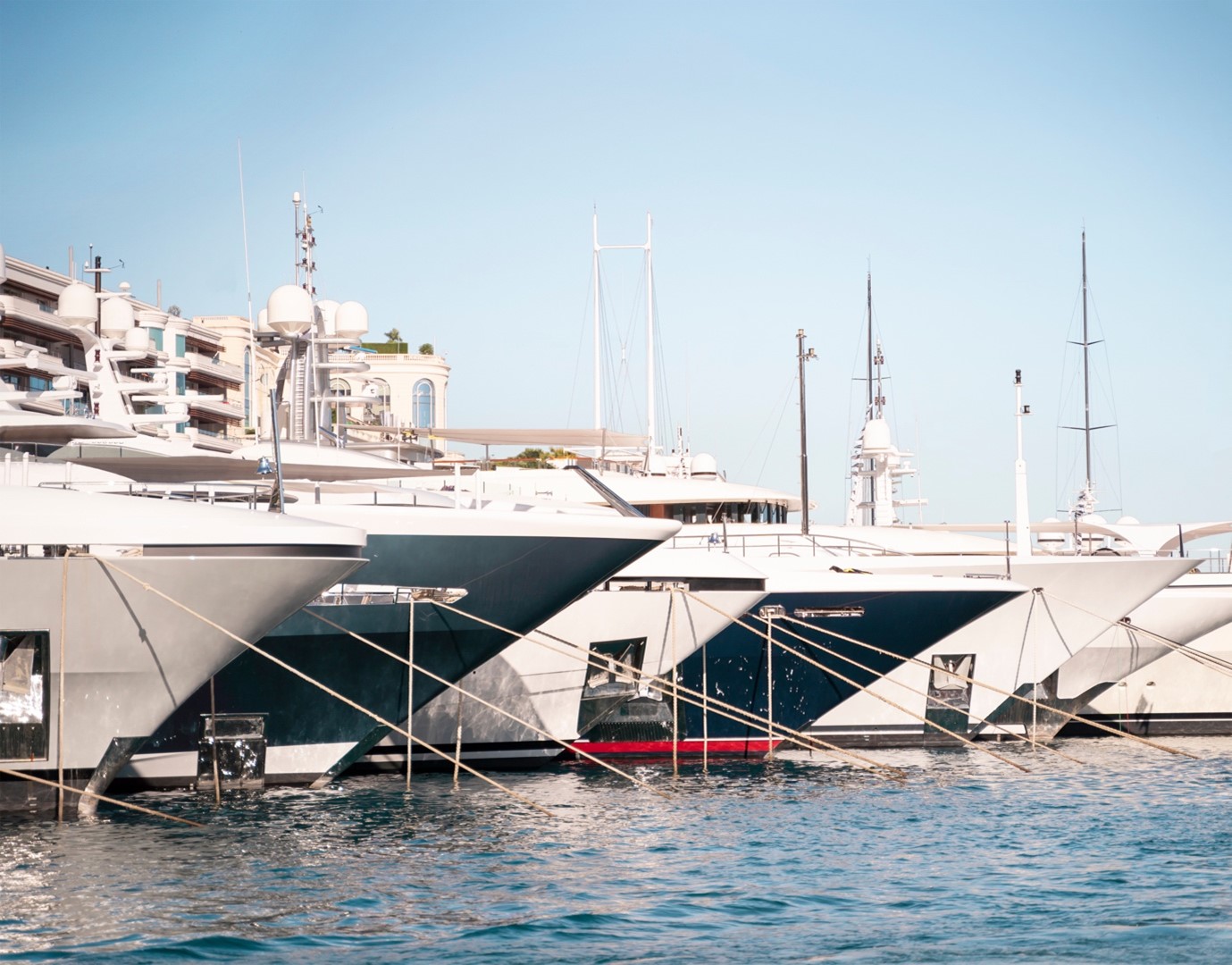
Industry Stakeholders
You may need to influence superyacht industry stakeholders to achieve your desired outcomes. This could include increasing the awareness of your product or service, gaining support for a new initiative, or seeking financial backing for a project.
At a global strategic level are people and groups who have interests in the future of the industry. These global level influencers need to be convinced of the safety and operational effectiveness of an innovation if it is to succeed.
At a tactical local level there are individuals and businesses involved in the development and operation of individual ports, or in the building and operation of superyachts. These specifiers are people who have influence in a decision to buy. Some will have an ultimate decision-making role, most typically the vessels owner.
Others may have a power of veto; that is the ability to block a sale, usually on financial or technical grounds. And some may not have the direct power to stop a deal going ahead, but they are influential in the decisions others make.
By effectively influencing an industry stakeholder, you can help ensure that your business goals are met and that your company is competitive in the superyacht industry.
The next decade is critical for the health of the oceans, and so it is vital that the sector acts now to create positive change. Collaboration between stakeholders is central to achieving the industries green goals.
Owners and their teams
SUPERYACHT OWNERS
Superyacht owners are high net-worth individuals who have a penchant for luxury and a love of the sea.
Their motivations vary, but some of the more common reasons include a desire to enjoy the freedom of the open ocean, a need to escape from everyday life, a desire to impress others, a passion for entertaining, a love of travel, and a desire to experience the finer things in life.
Owners need to be convinced that an innovation or new idea fits with their worldview and adds to their superyacht experience.
OWNER’S REPRESENTATIVE
The owner’s representative serves as an advocate for the owner, providing advice and guidance.
They will be more involved with the detail of a project than the owner and can be an important logical decision maker.
Their objectives include timely delivery of new build and refit projects, as well as reducing technical and financial risks.
They are responsible for overseeing the budget and the schedule, as well as vetting contractors, materials, and subcontractors. They negotiate contracts and oversee the work being done.
FINANCIAL SUPPORT STAFF
UHNWIs haven’t the time or desire to individually manage each of their assets. They therefore employ an office of support staff to manage the maintenance, performance, and transfer of their superyacht assets.
The staff typically consists of a team of experienced financial professionals who provide comprehensive services such as investment management, tax planning, estate planning, and asset protection.
The staff can also serve as a liaison between the UHNWI and their banking, legal, and other professional providers.
Superyacht Crew Members
Experienced crew can be invaluable in helping other stakeholders understand how a superyacht operates in practice rather than on paper.
The crew is focused on operational efficiency, safety, and guest comfort.
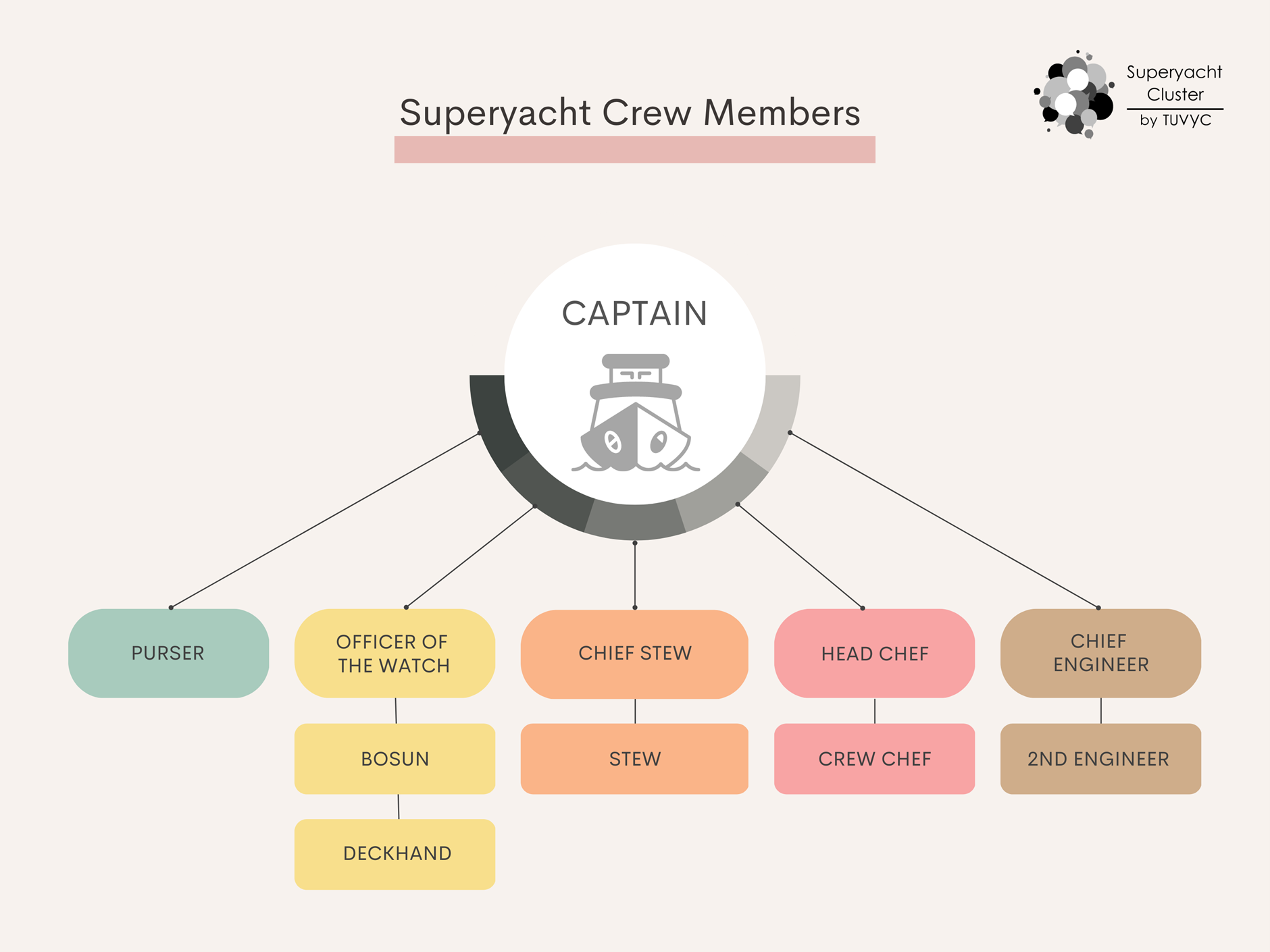
CAPTAIN
Answering only to the owner or their representative, the captain of the superyacht ensures the safe running of the ship and delivery of the expected guest and owner experience.
Their responsibilities extend beyond navigation to include compliance with maritime regulation, health and safety, and financial reporting.
This is in many ways like a managing director role in shore-based business.
Whether an existing vessel, or for a superyacht in design, the captain’s voice is critical in winning approval for any innovative technology.
OFFICER OF THE WATCH
The officer of the watch is the captain’s second in command. They manage the deck, take turns on watch, and plot the course.
The officer of the watch often takes a lead role in managing maintenance activity, and they are also often responsible for keeping track of deck inventory.
PURSER
The purser is the captain’s right-hand person. They manage the on-board finances of the superyacht. This includes accounting for all the expenditure on consumables. HR and recruitment usually fall under the purser too.
CHIEF ENGINEER
This is one role which delivers much as you’d expect. Full and overall responsibility for the hassle-free mechanical operation of the ship.
HEAD CHEF
The head chef of a superyacht faces the same challenges as those working in Michelin star restaurants. Diners demanding provenance, seasonality, and creativity on their plates.
BOSUN
The bosun is the senior deckhand. They have a team of deckhands working with them and overall charge of the daily cleaning and maintenance. The bosun often drives the tender too.
DECKHAND
Deckhands support the bosun as required, and may assist with things like mooring, security, and other on deck tasks.
CHIEF STEW
Working with a team of supporting hands they take care of all the interior cleaning, laundry, and other services.
STEW
This team prepares the cabins, keeps everything clean and tidy and serves the owner and their guests’ every need.
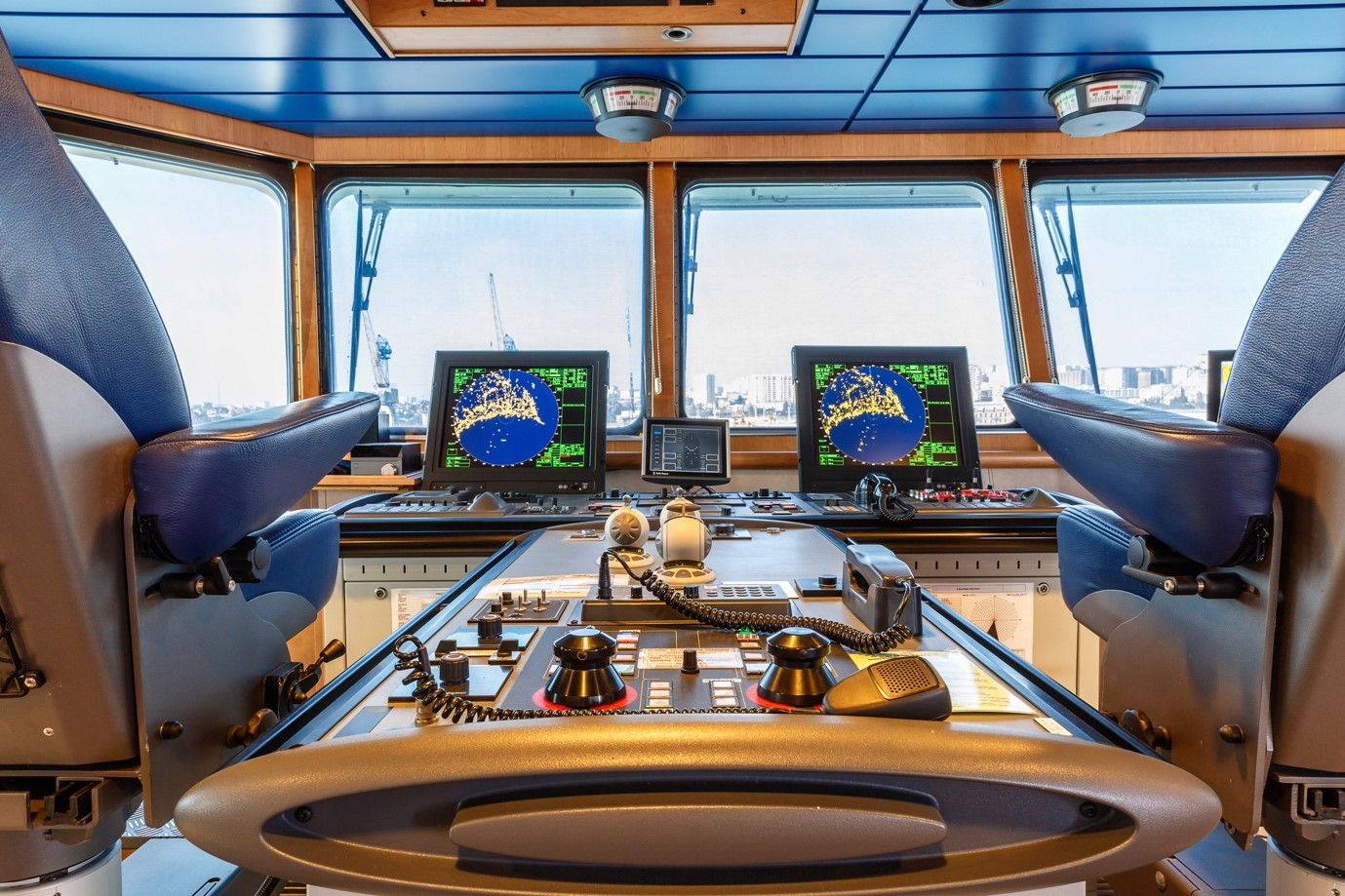
Shipbuilders and their teams
SHIPYARDS
The primary motivation for superyacht shipbuilders is to construct the best possible vessel for their clients, with the aim of creating a luxurious, one-of-a-kind experience.
They are driven by a desire to create something unique and beautiful that will be enjoyed by the owner and all who experience it.
Their vision is to build vessels that represent the pinnacle of craftsmanship and luxury, and to create something that will be remembered and treasured by their clients.
All shipyards, to varying degrees, claim they build whatever the owner wants.
The production builders call themselves semi-custom, the semi- custom (series) builders call themselves custom and the genuinely custom manufacturers are trying to find terminology that will allow them to break away from the others.
However, whether production or custom builders, most shipyards drive clients in the directions the yards are most comfortable with.
Shipyard owners’ objectives are to deliver brand prestige, limited investor risk, and a solid return on investment.
SHIPYARD PROJECT MANAGERS
Whilst ultimately responsible for fulfilling their shipyards overall strategic aims, project managers have tactical level responsibility for keeping individual projects on time and budget.
Their objectives are on time and on budget delivery, project kudos, and client satisfaction.
Approaches vary, but this can lead to risk aversion around new technologies, as proven systems remove risk.
NAVAL ARCHITECTS
Naval architects are engineers responsible for the design, construction, and repair of superyachts.
They will, dependent on the commissioning owner’s brief, take different approaches to innovation.
Their objectives include prestige, award winning design, and delivering client satisfaction.
There is a clear need to win support from these influencers if new ideas are to be widely adopted.
ADVANCED TECHNOLOGY ENGINEERS
An advanced technology engineer for a superyacht shipbuilder is responsible for researching, designing, and developing new technologies and systems for superyachts.
This includes developing new propulsion systems, advanced navigation systems, and other integrated systems for onboard luxury superyachts.
Superyacht Designers
EXTERIOR DESIGNERS
Exterior designers work to make a superyacht stand out, with responsibility for delivering the owners vision whilst working within the realms of practicality.
Their objectives are achieving aesthetic distinction, practical functionality, and of course client satisfaction.
Exterior designers must be familiar with all the latest trends in both interior and exterior design and be able to work with the latest materials, technology, and techniques.
They work closely with the shipyard’s engineering teams to ensure safety and practicality are considered, as well as other designers and architects to ensure that the overall design is cohesive.
They must also be familiar with the regulations and codes of practice that apply to the design of superyachts.
INTERIOR DESIGNERS
Superyacht interior designers are responsible for delivering a design scheme which fits the owner’s vision for furniture, fixtures, and fittings.
Their objectives are to deliver prestige, award winning design, and client satisfaction.
They are responsible for creating a luxurious atmosphere and style for the yacht, which may include fabrics, furniture, fixtures, and decoration.
They must also consider the practicality and safety of the yacht, as well as the budget and timeline.
In addition, they must be up to date with the latest trends in the yachting industry and be able to interpret the client’s wishes into the design.
Shore Based Support
Beyond the well drilled crew you’ll find on board every superyacht, is an equally diverse team of shore-based support.
SALES BROKERS
The yacht brokerage is central to the global trade in superyachts.
This highly collaborative market ensures yacht owners’ interests are protected. Experienced brokers bring unparalleled access to key buyers and influencers.
Sales brokers are responsible for finding suitable buyers for their clients’ yachts. They will use their knowledge of the market and contacts to help sellers get a good price for their yachts.
Brokers will also be responsible for negotiating the sale, which includes discussing the terms and conditions of the deal, as well as any legal and financial aspects.
Sales brokers are also responsible for arranging the transfer of ownership and ensuring that all paperwork is in order.
CHARTER BROKERS
A superyacht charter team will manage the business of marketing superyachts for charter, the contracting of each individual hire, and the ongoing management of the superyacht while it is available for charter.
This includes researching and recommending superyachts and destinations, negotiating the best charter rate, and providing the necessary paperwork and contracts.
The broker will also be responsible for coordinating the itinerary, crew, catering, and other details of the charter. In addition, the charter broker will provide ongoing support throughout the charter duration and handle any questions or requests the customer may have.
YACHT MANAGERS
Superyacht management companies are professionals who provide services to yacht owners, captains, crew, and charter guests.
Services typically include yacht maintenance, crew selection and training, charter management, legal and financial advice, and general administration.

Case Study: Y.CO YACHT MANAGEMENT
Y.CO Yacht Management is a leading company in the luxury yacht industry, offering various services, including yacht charter, sales, purchase, management, new build, and project coordination.
The founders, Gary Wright and Charlie Birkett, were former superyacht captains and have a deep passion for the industry, which is reflected in the company’s approach to yacht management.
Y.CO believes that being a successful yacht manager requires a comprehensive understanding of all aspects of superyachts, including their history, refit, owner preferences, crew dynamics, and budget.
The company encourages its team members to acquire this knowledge to provide exceptional support and ensure efficient yacht operation.
Y.CO’s company culture promotes creativity and empowers team members to go beyond industry standards to find innovative ways to support clients, captains, and crew.
FINANCIAL SERVICES
Superyacht owners are high net worth individuals who require financial services to help with their insurance, financing, and banking needs.
Beyond direct ownership of a single vessel by one individual, other ownership models exist including syndicated and shared ownership.
Asset purchase may be arranged using various long-term finance models, and others choose to lease rather than buy their boat.
LEGAL SERVICES
Lawyers are required to provide contractual support and dispute resolution for issues around boat purchase, financial and leasing.
Employment contracts, confidentiality and security, and other legal issues keep legal teams busy.
HUMAN RESOURCES
The superyacht industry directly employs around 150,000 people. Each one of these has a requirement for recruitment and training which new entrants to the market may wish to support.
With the high level of seasonality in yachting, many crew are recruited on short-term and temporary contracts. This presents a need for recruitment as well as associated issues like security vetting.
Rule Makers
The superyacht world is heavily regulated. Rules exist to keep people safe and ensure a sustainable future for the industry.
CLASS SOCIETY
Without class approval and certification, a superyacht will not be eligible for insurance or able to operate.
Innovators need to work with maritime regulators to ensure class codes evolve to make new technologies compliant with code.
Classification societies objectives are to ensure vessel stability and safety, and to limit environmental impacts.
FLAG STATE
The flag state is the sovereign territory where a vessel is registered. Each state has a designation authority that inspects and certifies its vessels.
For example, US-flagged yachts are under control of the United States Coast Guard.
The flag state is often chosen for financial reasons, with locations including the Cayman Islands, British Virgin Islands and Bermuda, being popular.
LEGISLATORS
Legislation can influence the superyacht industry, whether it be from national or local governments, or regional powerhouses such as the European Union.
An example of this is the Norwegian government’s decision to disallow cruise ships from polluting the West Norwegian Fjords, a UNESCO World Heritage Site.
Local governments may take a more active role in areas where superyachts have a significant influence on the environment and economy, like in Monaco.
Industry Associations
MYBA
MYBA, the Worldwide Yachting Association, is an international professional organization, founded in 1984, with both Corporate and Individual Members.
The Association’s mission is to inspire, support and empower people in the superyacht industry to be their best: by maintaining business at the highest level of ethical conduct, committing to equality and diversity, protecting the environment, sharing knowledge, and combining strengths, building strong relationships, and continuously developing, both professionally and personally.
All MYBA Members possess a proven track record of professional excellence, and they are involved at many levels and in most of the disciplines of the superyacht industry.
MYBA is the Association that brings them together, encourages them to work in harmony to ensure that the industry continues to flourish and guides them on the highest ethical and technical standards.
LYBRA
Established in 2012, LYBRA – The Leading Yacht Brokers Association – has become an internationally renowned trade association for top superyacht brokerage companies.
Their mission is to bring together the best of the best to collaborate, confront obstacles and propel the superyacht industry forward – creating a new standard of excellence, a quality benchmark for all yachts, and a universal code of ethics in yachting worldwide.
ISS
Members of The International Superyacht Society (ISS) represent the yachting industry worldwide.
Through committees, events, educational opportunities, and business-to-business collaboration, ISS works collectively to both strengthen and grow the business interests of Society members, while serving as a unified voice for issues affecting the yachting marketplace as a whole.
SUPERYACHT BUILDERS’ ASSOCIATION
The 24 members of the Superyacht Builders’ Association (SYBA) represent 67% of the yachts currently under construction that are 40 meters or more in length.
They provide a platform to share best practices, resources, and industry knowledge.
Furthermore, the SYBA publishes data and statistics regarding the superyacht industry.
WATER REVOLUTION FOUNDATION
The Water Revolution Foundation’s mission is to “drive sustainability in the superyacht industry through collaboration and innovation, leading the way towards neutralizing its ecological footprint and preserving the world’s precious oceans. Healthy oceans are not just vital for the future of the superyacht industry, they are crucial for the planet’s wellbeing.”
By providing decision-makers with the data necessary to make informed decisions, their cutting-edge Yacht Assessment Tool revolutionizes the design, building, and refitting processes.
Marinas
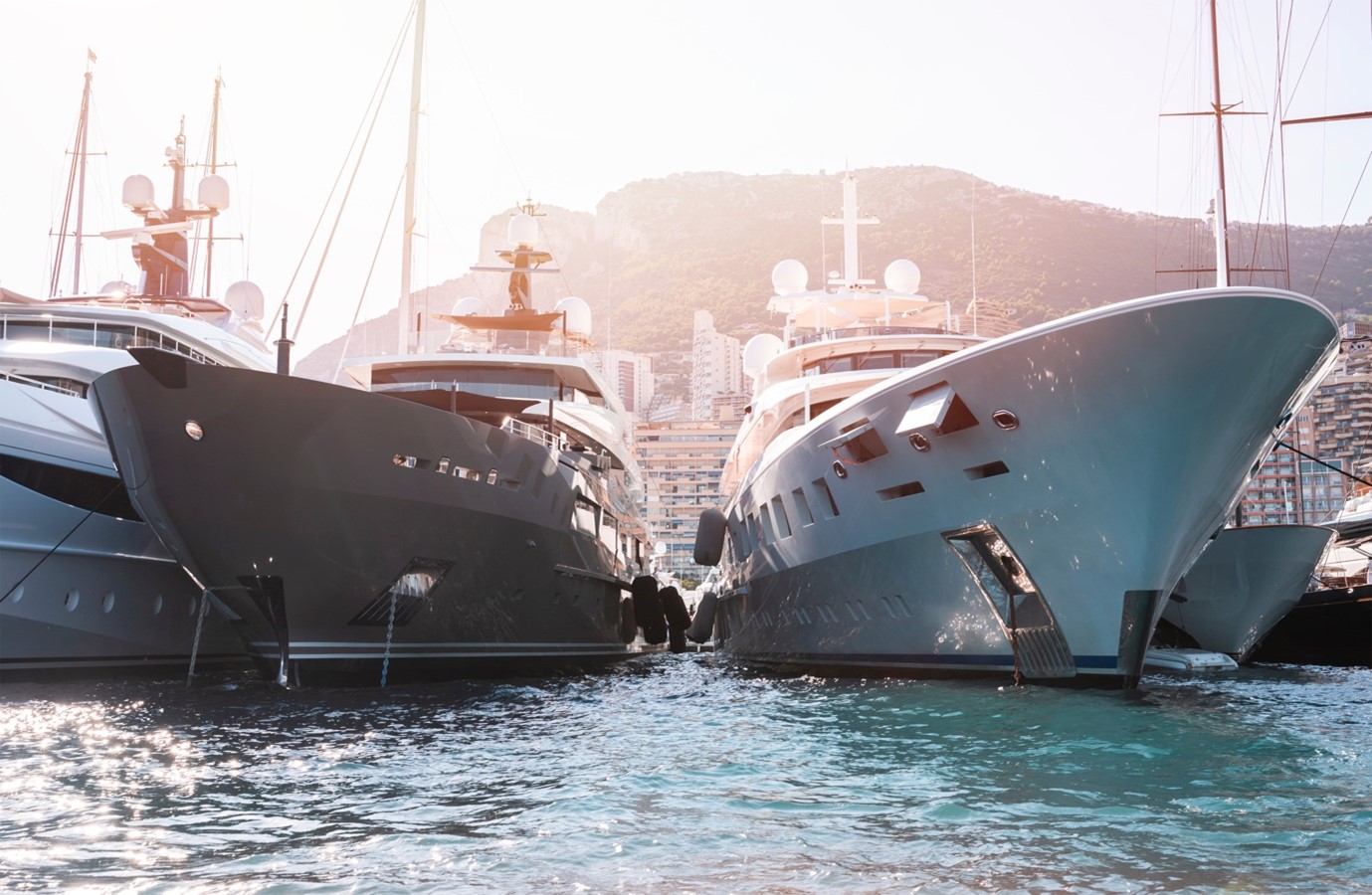
Global marina businesses are involved in the development and operation of individual ports.
They continually seek new technologies and supporting services to maximize their profitability and provide greater client comfort.
Marinas are adding capacity and facilities as they answer the needs of the ever-growing superyacht fleet.
Yacht Clubs
Yacht Clubs are places where people come together to share their passions and ideas for the superyacht world.
The locations are numerous, but the most prestigious is of course Yacht Club de Monaco.
Founded in 1953 by Prince Rainier III, the club has established itself as an international centre for sailing and yachting, welcoming members from all over the world.
The club organizes a variety of events, from regattas to sailing courses, as well as hosting social and recreational activities for its members.
The club is also home to the world-famous Monaco Yacht Show, a must-attend event for anyone interested in the world of yachting.
Suppliers
A long and wide supply chain is involved in any project, with a wide range of levels of influence and interests.
As in many places tried and tested is often preferred to innovation.
Supplier objectives usually include reliable delivery and cost management.
Media and Influencers
Printed publications like Boat International may no longer be the only way to access the superyacht audience, but they remain an important part of the overall marketing mix.
Publications like Boat International can provide visibility and influence when reaching superyacht market stakeholders.
SuperYacht Times and its associated publications are also considered a definitive source of information. It provides data and insights into the superyacht market, including information on new builds, sales, charters, events, and news.
They also provide market analysis, trends, and forecasts, as well as insight into the latest industry developments and trends.
SOCIAL MEDIA INFLUENCERS
Alex Jimenez, AKA The Yacht Guy, and Victoria Chalaya, host of NautiStyles, are two of the most popular yachting influencers on social media. They provide viewers with an inside look into the luxurious yachting lifestyle, sharing exclusive yacht charters and boat shows, travel advice, liveaboard experiences, and more.
Follow them on Instagram @theyachtguy and @nautistyles, and on YouTube for TheYachtGuy Official and NautiStyles for unique yachting content.

Exercise

Course Manual 6: SYC UHNWI Clientele
LEARNING OUTCOME
Understand owners so you can speak to them on their own terms.
SYNOPSIS
Superyacht owners are ultra-high-net-worth-individuals who often lead contrastingly very public or very private lives.
Learn about the superyacht owner, who they are, where they live, why they own superyachts, what they use them for and the support network that surrounds them.
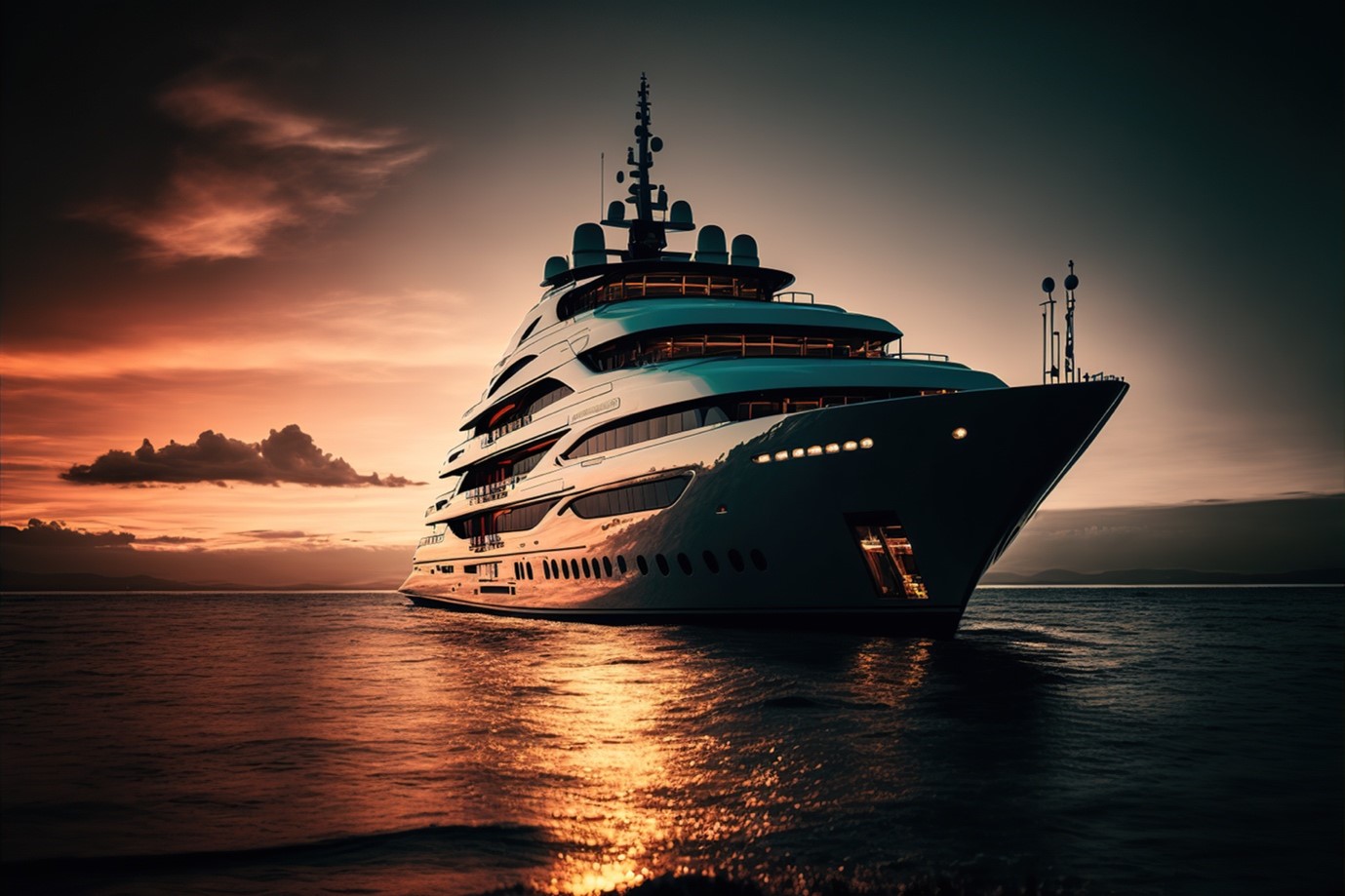
UHNWI Clientele
The ultra-rich of today are a far cry from the wealthy of the last century. Now, around 70% of the most affluent people are self-made.
These high-fliers, who have amassed more wealth than any previous generations, are the heads of major corporations, can influence the stock markets, shape governmental policies, set social and business trends and make sizeable donations to various charities and foundations of their own design.
Unlike the industrialists and aristocrats of old, they are driven to distinguish themselves from their middle-class origins thanks to their newfound riches.
ORIGINS OF WEALTH
Ultra-high-net-worth individuals (UHNWI) are classified as those with a net worth of at least US$30 million.
Most UHNWIs have worked hard to build their wealth, whilst a few have had the fortune to inherit their riches.
Self-made wealth is the accumulation of assets and money that is earned through hard work and determination. The money usually comes from a combination of sources such as investments and income from ownership of one or more businesses.
Inherited wealth is money or other types of assets that have been passed down from a previous generation. This could be in the form of cash, investments, property, or other valuable items.
The money usually comes from the estate of a family member or relative who has passed away.

Case Study: JEFF BEZOS
Jeff Bezos is the Chairman and Founder of Amazon, and his current net worth is estimated to be $119.3 billion.
He is currently ranked #3 in the world in terms of net worth.
Age: 59
Source of Wealth: Amazon, Self-Made
Self-Made Score: 8
Philanthropy Score: 2
Residence: Medina, Washington
Citizenship: United States
Marital Status: In a Relationship
Number of Children: 4
Education: Bachelor of Arts/Science from Princeton University
Jeff Bezos is the founder of e-commerce giant Amazon, which he established in 1994 from his garage in Seattle.
In July 2021, he relinquished his role as CEO and assumed the responsibility of executive chairman. He holds a stake of slightly less than 10% of the company.
In 2019, after 25 years of marriage, Jeff and his wife MacKenzie divorced, with him transferring a quarter of his then-16% Amazon stake to her.
In 2022, Bezos donated more than $400 million in stock to various charities, though the recipient organizations remain unknown.
Bezos is also the owner of The Washington Post and Blue Origin, an aerospace company specializing in rocket development.
In July 2021, he personally experienced a flight to space in a Blue Origin rocket.
In a CNN interview conducted in November 2022, Bezos announced his plan to give away the majority of his wealth during his lifetime, though he declined to provide further details.
As a child, Jeff Bezos spent his summers fixing Caterpillar tractors on his grandfather’s ranch.
In 1998, he was introduced to Google founders Larry Page and Sergey Brin, and he invested approximately $250,000 in the company, making him one of its first angel investors.
“I didn’t think I’d regret trying and failing. And I suspected I would always be haunted by a decision to not try at all.” – Jeff Bezos
Global Wealth Trends
The Credit Suisse Research Institute’s (CSRI) Global Wealth Report 2022 has outlined recent changes in global wealth share.
According to the report, the wealth share of the top 1% of the global population rose to 45.6% in 2021, up from 43.9% in 2019.
This increase in inequality is believed to be due to the surge in the value of financial assets during the COVID-19 pandemic.
The number of ultra-high-net-worth (UHNW) individuals increased rapidly, with 21% more members added in 2021.
A ROSY FORECAST FOR THE SUPER RICH
It is expected that the number of millionaires will increase significantly over the coming five years, reaching a total of 87 million, while the number of Ultra High Net Worth Individuals (UHNWIs) will reach 385,000.
It is estimated that there will be 385,000 ultra-high-net-worth individuals (UHNWIs), with wealth above USD 50 million, worldwide by 2026, a rise of 121,000 in five years.
At present, more than half of all UHNWIs live in North America, whereas those in the Asia-Pacific (APAC) region (including China and India) number over 67,000. This is a vast margin more than the roughly 42,000 living in Europe, and this difference in favor of APAC is expected to expand further.
By 2026, the APAC region is anticipated to have 118,000 UHNWIs, of which 51% will be from China. This means that China is likely to have roughly the same number of UHNWIs (approximately 60,000) as the whole of Europe.
Despite Latin America containing 9% of global adults, it accounts for only 2% of UHNWIs globally. As the larger countries in the region are projected to perform strongly, it is thought that the region will add around 4,400 UHNWIs in the next five years, raising its global share to 2.4%.

There has been a significant increase in the population of ultra-high-net-worth individuals.
This year’s increases, more than double any other year this century, show that 84,490 adults now have wealth above USD 100 million, with 7,070 of these worth more than USD 500 million.
The United States is the country with the highest number of UHNW individuals, with 141,140 members, making up 53% of the world total.
China has the second highest figure, with 32,710, followed by Germany (9,720), Canada (5,510) and India (4,980). Japan (4,870), France (4,640), Australia (4,630), the United Kingdom (4,180) and Italy (3,930) make up the remaining top ten countries.
High-net-worth individuals are highly concentrated in certain regions and countries, and typically lead comparable lifestyles.
Such lifestyles often include participating in the same global markets for luxurious items, vacations, and education for their children, no matter where in the world they reside.
The wealth portfolios of these individuals tend to be comparable as well, typically focusing on financial assets such as equities, bonds, and other securities traded in international markets.
UHNWI’s are motivated by a combination of wanting to build and protect their wealth, achieving success, and making a positive impact on the world.
HOBBIES AND INTERESTS
UHNWI people have a wide variety of interests and hobbies.
Many of them are passionate about the arts, from music to theatre and from museums to galleries.
UHNWIs also enjoy exploring new technologies and staying up to date with the latest trends.
Other interests may include sports, travel, fine dining, luxury goods and cars, as well as philanthropic activities.

Case Study: VOLY
Ian Flanagan saw a gap in the market when he realized many high-net-worth individuals weren’t considering the foreign exchange fees involved with their personal assets, potentially costing them hundreds of thousands of pounds.
He created Voly – a financial management platform tailored for the yachting industry to manage charters expenditure and multiple assets, with an integrated FX and payment platform.
All these unique features together save captains and crew 75% of financial admin time, helping them save time and money while improving efficiency and creating visibility.
Flanagan notes that it’s surprising UHNWIs don’t always put the same level of detail into their personal lifestyle assets, given their attention to their companies and investments. To help show the potential savings Voly could offer, the firm has put together a case study based on the actual needs of one customer.
Mr V owns a 70-metre motor yacht with an annual operating cost (including crew payroll) of €13.3 million. During the Mediterranean charter season, the yacht is booked for eight weeks, resulting in an income of €5.2 million. Last winter season, the yacht underwent a €12.3 million refit, which was paid in eight instalments to the refit yard.
Mr V owns a Gulfstream G650 to help him maintain his international lifestyle. This costs him an annual total of $5.725 million.
Mr V has been captivated by the beauty of Sardinia and has invested in a villa located near Porto Cervo. This property costs him €2.4 million annually, which he finances by purchasing €200K worth of currency each month.
Mr V pays an annual cost of S$252,000 for his daughter’s accommodation in Singapore.
Mr V spends £3.156 million annually to maintain a permanent residence in London. He purchases the necessary sterling currency each month to cover the cost.
Mr V’s primary residence is in New York City. He pays an annual fee of $3.65 million for his luxurious Manhattan apartment.
Mr V has invested in a holiday home in Palm Beach to escape the cold winters of New York. This property costs him an annual sum of $3.527 million.
Mr V has an annual exposure of $12,877,000, €33,200,000 and S$252,000. By using Voly’s Financial Management Platform, Voly estimates that the client would have saved a total of $417,603.
Using Voly’s Financial Management Platform, Mr V’s assets could have been auto reconciled within Voly, resulting in a time saving of 24,515 minutes, or 51 working days.
This would have been a huge benefit to the client’s personnel, as it would have saved them from having to manually reconcile 4,903 invoices, which would have taken five minutes per invoice.
This demonstrates the impact that Voly can have on streamlining the financial process of a UHNWI family office and operations, in addition to the financial savings.
The case study demonstrates that neglecting foreign exchange fees can lead to a considerable financial loss. To address this issue, Voly has created a treasury management team and a comprehensive platform to provide a complete solution.
GIVING BACK
Many UHNWIs use their wealth to give back to their communities and invest in causes close to their hearts.
UHNWIs often get involved in philanthropic activities such as donating to charities, founding and funding non-profit organizations, and providing financial support for social initiatives.
UHNWIs also often use their influence to raise awareness or lobby for social and environmental causes. They may also provide financial support for other causes, such as conservation and environmental protection.
UHNWI BUYER BEHAVIOUR
Businesses could be missing out on a great opportunity if they don’t take the right steps at the right time and provide tailored goods and services to this group.
UHNWIs thrive on personalized experiences that are tailored to their individual needs. They appreciate the finer details and the highest level of customer service.
They expect to be treated like royalty, with every problem solved efficiently and effectively.
UHNWIs are unlikely to settle for anything generic, and they won’t tolerate anyone who isn’t prepared or who doesn’t demonstrate a good understanding of their requirements.
Financial institutions are renowned for tailoring services to their Ultra High Net Worth customers, with specialized departments to manage their wealth.
The superyacht industry complies to the same norms.
Successful businesses will always strive to treat a potential superyacht customer with the upmost respect, professionalism, and discretion.
They will ensure the customer’s needs and requirements are fully understood and catered for, providing the highest quality of service and advice throughout the entire process.
They will guide and support the customer to ensure they make the best possible choice for their superyacht, considering their lifestyle, budget, and individual preferences.
Although we don’t know a lot about how UHNWIs make their purchasing decisions, we do understand that, as a group, they usually have distinct preferences and priorities which shape how they spend.
A GLOBAL LIFESTYLE
They lead highly global and mobile lifestyles, often traveling between locations to attend to their many companies, boards, charities, and expansive personal and business networks.
The wealthy tend to gravitate towards major events, socializing in the same circles. If you find yourself in Davos during the World Economic Forum, Paris for Fashion Week, London for Royal Ascot and Wimbledon, or Los Angeles for the Oscars, you’re likely to run into them.
For businesses catering to the wealthy, it can be beneficial to follow them and not be limited by physical location. Take the Monaco Grand Prix, for example, which has become a hub for all kinds of brands.
REAL EXCLUSIVITY
When the ultra-wealthy make a purchase, they’re looking for something special – something exclusive, rare, and of the highest quality.
They also want to be able to connect with the brand, interacting with its owners and representatives. They want to feel recognized as distinct from other consumers, enjoying services and products that are tailored to their unique needs.
It seems that they prioritize experiences over material possessions – it’s all about the journey, not just the destination.
YACHT OWNERSHIP
Ultimately, buying a superyacht is more of an emotional decision than a logical one. Although it’s important to have a team of experts to make sure the yacht is well-designed and will retain its value for resale, its cost of operation, maintenance and repair is huge.
So, when it comes down to it, buying a superyacht is a good way to spend money, but not necessarily a great way to make money when compared to other investment options.
Wealth-X reports that only about 2% of ultra-wealthy individuals own yachts, but in the billionaire bracket, the ownership rate is higher, at 8%.
It’s important to note that these stats don’t take into consideration those who charter yachts or use other financial structures, like fractional ownership, so the actual use of yachts is likely much higher.

Exercise

Course Manual 7: SYC Driving Forces of the Superyacht Industry
LEARNING OUTCOME
Learn how to inspire a design savvy and image conscious audience.
SYNOPSIS
There are many driving forces you may not expect that shape the superyacht industry.
Understand how design trends and superyacht designers can affect purchasing on all levels of a superyacht, how wealth changes the motivations behind buying, and how the intense secrecy that is intrinsically wound throughout the superyacht experience supports who this transient, affluent community work with.
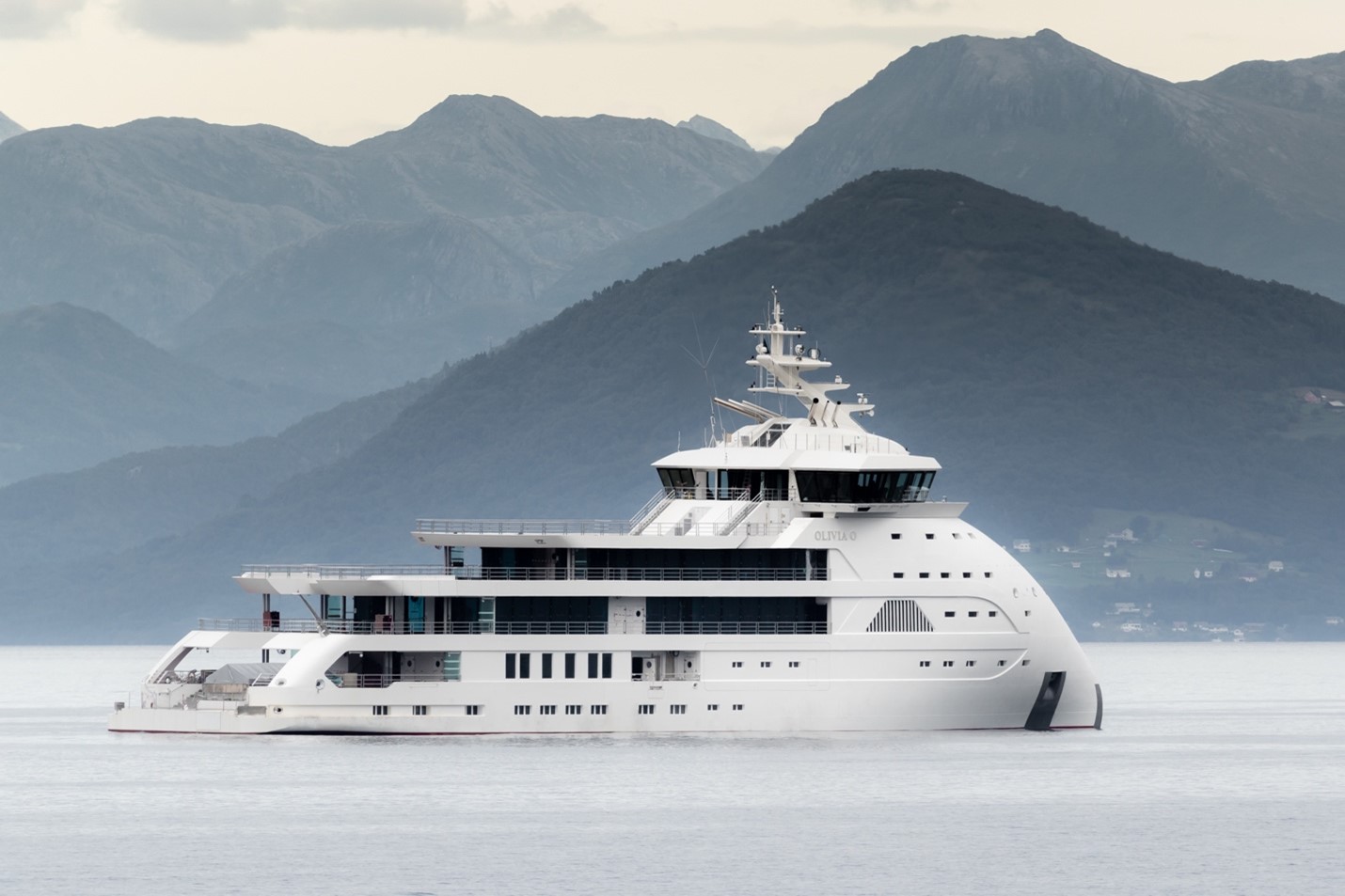
Driving forces of the superyacht industry
The superyacht industry places great emphasis on design and style, making it one of the most fashion-forward markets.
Yacht designers and owners are constantly searching for innovative ways to make a statement, and there is a growing trend towards exploring new uses for superyachts.
Driving this shift are various factors, including the need to develop more robust charter markets, increase residual values, and address environmental concerns.
As technology continues to advance, future yacht designs are likely to be vastly different from their predecessors.
This manual examines some of the major trends that offer potential opportunities for businesses targeting the superyacht industry.
Design Trends
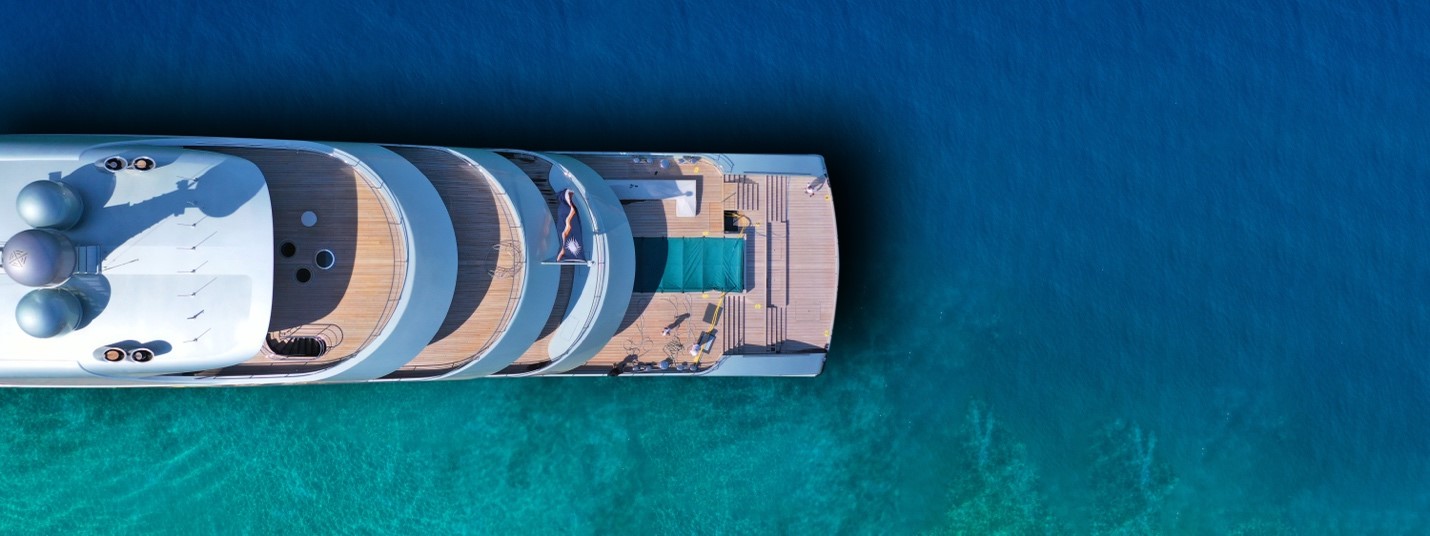
Superyacht designers create concept projects to explore new and innovative ideas that may not be feasible in current market conditions, and to showcase their creativity and technical skills.
While not all become real, futuristic superyacht concepts push the limits of what is possible in superyacht design and challenge the industry to innovate and adapt to changing demands from clients.
The following are just a few of the novel and innovative ideas designers are currently exploring:
3D PRINTING (AND MIRRORED YACHTS)
3D printing allows for the creation of complex and intricate designs with greater precision, accuracy, and speed. It also reduces material waste and shortens production time.
3D printing enables customization and on-demand manufacturing, allowing for greater flexibility in design and production. By utilizing 3D printing, superyacht manufacturers can produce lighter and more efficient vessels, reduce costs, and enhance sustainability.
This innovative technology has the potential to revolutionize the superyacht industry and offer new possibilities in design and construction.

Concept Example: PEGASUS
Designer Jozeph Forakis has unveiled the world’s first 3D printed superyacht concept, the 88-metre Pegasus, which runs entirely on solar energy and converts seawater into hydrogen to produce zero emissions.
The yacht features a low, linear hull, “Solar Wings” that reflect the sky and clouds, and a multi-level monument to nature, the “Tree of Life,” surrounded by a wellness zen garden and reflective pool.
The superyacht’s construction will use robotic 3D printing to create a mesh framework integrating both hull and superstructure, making it a robust yet lightweight vessel.
SAILING YACHT RESURGENCE
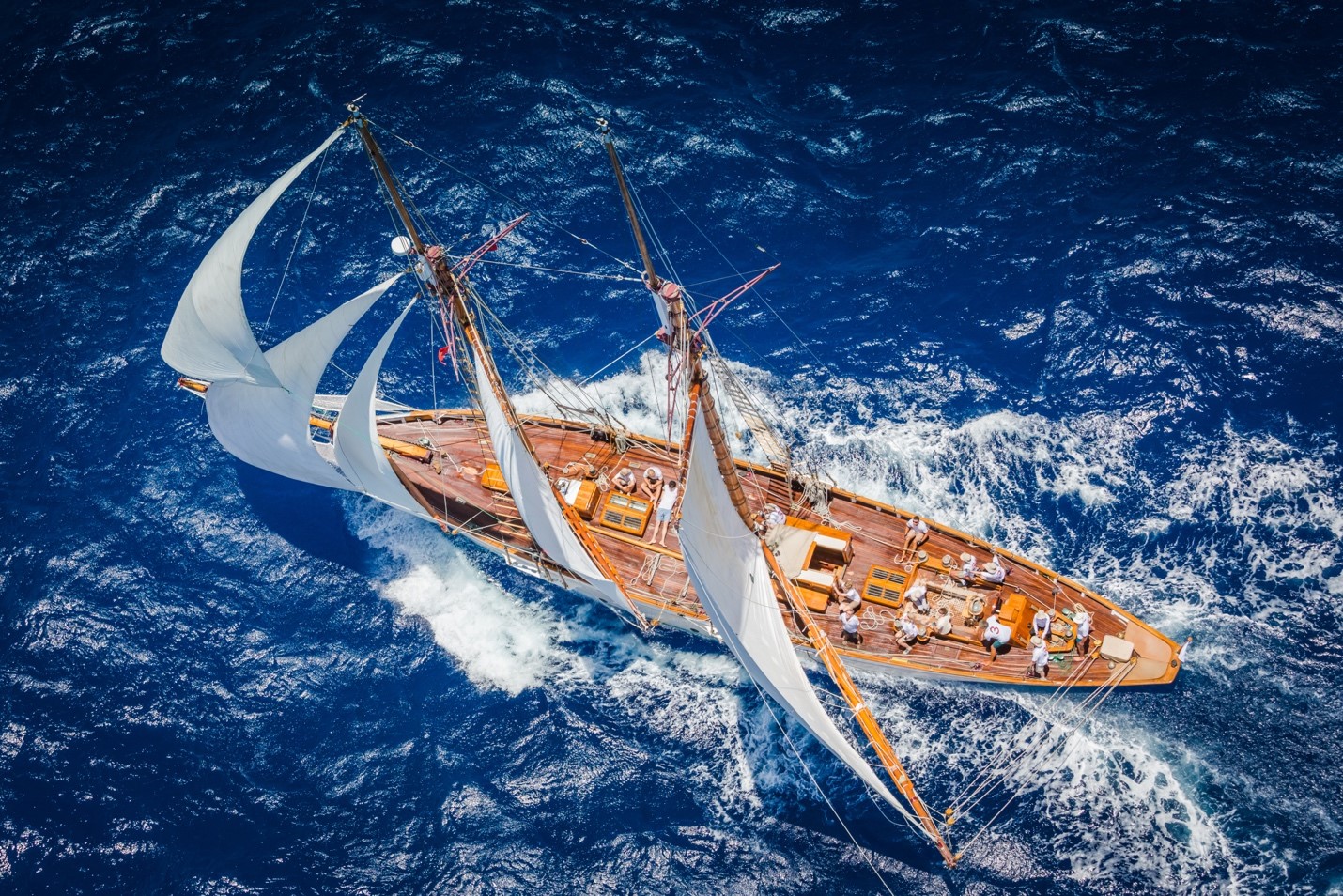
We are already seeing a re-emergence of sailing yachts, as more people are becoming interested in sustainable and eco-friendly yachting.
The rise in interest in sailing vessels can be attributed to several factors, including a growing concern for the environment, advancements in technology that have made sailing more efficient and comfortable, and a desire for a more authentic and slower-paced experience on the water.
While it is unlikely that all superyachts of the future will have sails, we are seeing a trend towards incorporating hybrid or alternative propulsion systems that can reduce the reliance on fossil fuels.
This could help with the cost of fuel and demonstrate a superyacht’s eco-friendly credentials. However, it is important to note that the incorporation of sails alone may not necessarily make a superyacht eco-friendly.

Concept Example: GLORY
Glory is a 170m superyacht concept designed by US yacht designer Steve Kozloff.
It features three tilting masts with a Solid Sail System, capable of setting their own sails, rotating 380 degrees, and tilting 70 degrees to reduce drag.
The yacht has an ice-classed hull and heated masts, handrails, and doors, allowing it to cruise in polar regions for scientific research purposes.
The tender garage can store tour tenders and two Nemo U-Boat Worx submarines, with a launch system for easy access.
Glory can cruise for 6,700 nautical miles at 14 knots under diesel power and at 12 knots under sail power alone.
FLYING SUPERYACHTS
Innovative concepts are envisioning a future where superyachts are no longer confined to the sea.
By merging superyachts with a revival of airship technology, these new designs offer the possibility of accessing land-based destinations without sacrificing onboard luxury.
This means that superyacht owners may soon have the option to explore new locations beyond the ocean with ease.

Concept Example: AIRYACHT
AirYacht is a concept that combines the luxury of a superyacht with the flying power of an airship.
Designed by Franck Darnet and co-founded by Guillaume Hoddé, this radical design consists of two modules: a 200-meter helium-filled airship and an ultra-lightweight 52-meter superyacht residence.
The residence has three decks, 750 square meters of indoor space, and can accommodate 12 guests in six cabins. The airship will have a crew of three, and the residence will have a crew of 12.
The AirYacht can fly autonomously for about a week at altitudes ranging from 100 to 3,000 meters. The design is aerodynamic and lightweight, with the residence component not fitted with engines.
The first AirYacht is expected to be completed in 2026 and will be powered by hybrid technology, with plans to switch to full hydrogen power in the future.
CARBON NEUTRALITY (AND FLOATING GARDENS)
Naval engineers of superyachts are in a race towards developing sustainable propulsion systems. They are exploring various options such as hydrogen fuel cells, wind and solar power, and hybrid combinations to replace diesel power.
It remains to be seen which solution will ultimately lead to carbon neutrality for superyachts, but the process of finding it may inspire new design features that are environmentally friendly.

Concept Example: VY-01
VY-01 is a 110-metre superyacht concept that is entirely carbon-neutral and features a lush, garden-like interior.
German design studio 3deluxe unveiled the concept at the 2021 Monaco Yacht Show, describing it as a “floating garden of Eden.”
The open-plan layout includes a greenhouse and vegetable garden, and guests can enjoy a light-filled interior with sensor-controlled louvers.
The VY-01 will be powered by hydrogen fuel cells charged with bio-methanol, enabling it to travel up to 3,240 nautical miles. The superyacht will have silent electric engines that keep noise pollution to a minimum.
SOLAR PANELS
Solar panels are a practical and sustainable source of energy that can significantly reduce a yacht’s reliance on fossil fuels.
They can also be an aesthetic feature, adding a futuristic and eco-friendly element to a yacht’s design.

Concept Example: FLUYT
Fluyt, a superyacht concept from Asquared Naval Design, boasts a 110-meter length and a classic silhouette reminiscent of 17th-century sailing vessels, with a modern twist.
It features 140 square meters of solar panels, providing sustainable energy and contributing to the yacht’s futuristic design.
EXPLORER SUPERYACHTS
An explorer superyacht is specifically designed for extended journeys to remote and often unchartered destinations, such as polar regions.
These yachts are typically larger and more robust than conventional superyachts, with specialized features such as reinforced hulls, ice-breaking capabilities, and extended fuel and water storage.
An explorer superyacht usually has a more functional and practical design, with an emphasis on functionality and durability rather than luxury and aesthetics.
While a conventional superyacht is typically designed for leisurely cruising in calm waters, an explorer superyacht is built to handle more challenging conditions and to provide a platform for adventure and exploration.
They often feature a strengthened hull and advanced stabilization systems to cope with rough seas and adverse weather conditions.
The challenges in the design and operation of explorer superyachts include ensuring seaworthiness and stability, providing adequate fuel and water storage for extended voyages, and incorporating specialized features such as ice-breaking capabilities.
Additionally, due to their extended range and often remote destinations, explorer superyachts need to be self-sufficient and equipped with advanced communication and safety systems to ensure the safety of crew and passengers.
Operationally, explorer superyachts require skilled and experienced crew members who can navigate challenging waters.
These yachts also need to be maintained to a high standard to ensure they can withstand the harsh conditions they may encounter during exploration.
Superyachts can play a role in scientific research by providing a platform for oceanographic and environmental studies. With advanced technology and onboard laboratories, superyachts can facilitate research on topics such as marine biology, climate change, and oceanography.
For example, superyachts can support research on the impacts of climate change on marine ecosystems or aid in the mapping of ocean floors in previously unexplored areas.
Superyachts can offset their environmental impact by participating in environmental research and conservation efforts. By supporting research and initiatives focused on ocean conservation, superyachts can contribute to the protection of marine biodiversity and the mitigation of environmental damage caused by human activities.

Case Study: DSSV PRESSURE DROP
Victor Vescovo, a retired US Navy officer turned investor and explorer, made waves in the superyacht world when he acquired the DSSV Pressure Drop in 2018.
The 68-metre vessel, originally built for oceanographic research, has been transformed into a state-of-the-art exploration vessel capable of reaching the deepest parts of the ocean.
As an accomplished mountaineer and diver, Vescovo had already climbed the highest peaks on every continent and completed a solo dive to the bottom of the Mariana Trench, the deepest point in the ocean, in a submersible.
However, he was dissatisfied with the limitations of existing ocean exploration technology and wanted to push the boundaries of what was possible.
In the DSSV Pressure Drop, Vescovo saw an opportunity to create a custom-built vessel that could take him and his team to the most remote and challenging parts of the ocean in safety and comfort.
He spent $30 million on outfitting the vessel with cutting-edge technology, including a submersible capable of diving to depths of up to 36,000 feet, advanced sonar systems, and a full suite of scientific equipment.
The scientific achievements made possible by the DSSV Pressure Drop have been numerous and groundbreaking.
In 2019, Vescovo made history by completing the deepest-ever solo dive to the bottom of the Pacific’s Mariana Trench, reaching a depth of 35,853 feet. He also discovered four new species of amphipods, a type of crustacean, at depths of over 20,000 feet.
Since then, Vescovo and his team have continued to use the DSSV Pressure Drop to explore the deepest parts of the ocean, including the Puerto Rico Trench and the South Sandwich Trench. They have made numerous discoveries, including new species of marine life and previously unknown geological features.
However, the scientific achievements of the DSSV Pressure Drop go beyond pure discovery. Vescovo is a strong advocate for ocean conservation and has used his vessel to support scientific research and raise awareness of environmental issues.
The DSSV Pressure Drop has hosted researchers studying microplastics and ocean acidification, and Vescovo has spoken publicly about the urgent need for action to protect the oceans.
The use of the DSSV Pressure Drop as an exploration vessel has been widely hailed as a positive use of a superyacht. Rather than being a symbol of excess and luxury, the vessel is a powerful tool for scientific research and exploration that has expanded our knowledge of the oceans and advanced our understanding of the world we live in.
World events and economic forces
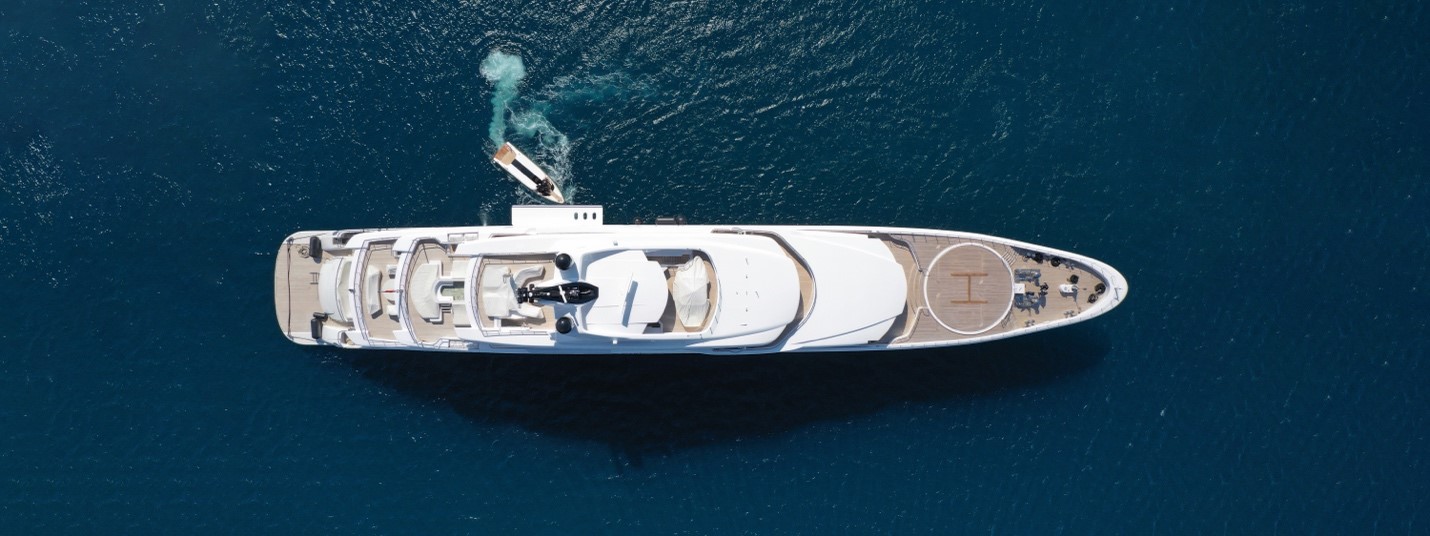
COVID-19 PANDEMIC
The superyacht industry is experiencing a surge in demand due to the COVID-19 pandemic. The appeal of yachting lies in its safety, security, and peace of mind, attracting UHNWIs.
The industry is thriving, with a new record of vessels under construction or on order worldwide. The pandemic has allowed those with means to work remotely, making yacht ownership even more desirable. As a result, shipyard order books are full until 2025, and clients are willing to pay a premium to secure a delivery slot earlier.
The pandemic has made freedom and the ability to escape anywhere more attractive than ever.
WAR IN UKRAINE
Since the start of the Ukraine war in February 2022, data and analytics firm Spire has detected a shift in the locations of Russian oligarchs’ superyachts, with heat maps indicating they are avoiding the US west coast and Mediterranean regions.
Instead, popular destinations have included Turkey, Dubai, the Maldives, and the Seychelles.
Some oligarchs have kept their superyachts away from Western sanctions by turning off tracking signals or sailing to avoid detection.
The conflict in Ukraine has brought to light the issue of how to enforce sanctions on Kremlin-connected billionaires and oligarchs who have been banned from spending their fortunes in Western countries.
The US and European countries have formed a task force, including agents and analysts from the FBI and the US Secret Service, to identify high-ranking targets, find evidence of law breaking and seize assets as quickly and aggressively as possible.
President Biden announced on 1 March 2022, that the US would join forces with European allies to find and seize the oligarchs’ luxury assets, including their superyachts.
Several oligarch-linked superyachts are currently sitting idle in ports and shipyards due to sanctions, including Sailing Yacht A worth over $500 million and the $120 million Amore Vero yacht.
Russian-owned superyachts, though making up only 7 to 10% of the global fleet, often attract the most attention due to their impressive size and status.
Construction of several superyachts intended for Russian owners in European shipyards was halted as a result sanctions prohibiting the export of luxury goods to Russia.
Although this has had a short-term impact on sales, the shipyards are not overly reliant on Russian business as demand continues to exceed supply from prospective owners elsewhere.
Fuel costs increased significantly due to the outbreak of war, with prices almost doubling in the US, and Europe experiencing rises as well. This has led to concerns about the cost of fuel for superyachts.
Additionally, material costs, such as aluminum, have been surging to a record high in some parts of the world due to the conflict, which could impact the construction of superyachts.
Changing Owner Demographics
While there is no typical ultra-high-net-worth individual (UHNWI), many share the expectation that their wealth will grant them access to the superyacht of their dreams.
A growing trend among Middle Eastern owners is their preference for exceptionally large yachts that can house their families and entourages. These luxurious vessels serve not only as a private getaway but also as a venue for conducting business meetings.
Silicon Valley owners, on the other hand, are increasingly interested in expedition yachts with numerous toys and gadgets. These yachts are equipped with everything from high-tech diving equipment to cutting-edge water toys, allowing owners to explore the world’s most remote corners. Silicon Valley’s wealth and technological prowess may explain this preference for adventure and exploration.
The rise of younger billionaires may also impact the superyacht industry. It remains to be seen if they will be more discreet in their ownership, eschewing ostentatious displays of wealth for more low-key luxury experiences. Younger buyers may prioritize sustainability, seeking eco-friendly yachts that align with their values.
As the market continues to evolve, the industry must adapt to meet the expectations of these diverse buyers while maintaining the high standards of luxury and exclusivity that make superyachts so coveted.

Case Study: REV OCEAN
REV Ocean is a non-profit organization dedicated to ocean conservation and sustainability.
The organization was founded by Norwegian billionaire Kjell Inge Røkke, who recognized the urgent need for action to protect the world’s oceans from pollution, overfishing, and other threats.
The centerpiece of REV Ocean is the world’s largest research and expedition vessel, which was launched in 2021.
The vessel is equipped with a wide range of scientific equipment and facilities, including wet and dry laboratories, a moon pool, and a remotely operated underwater vehicle hangar.
It can accommodate up to 60 scientists and 30 crew members, and features amenities for guests and visitors.
The mission of REV Ocean is to use cutting-edge technology and scientific methods to better understand and protect the world’s oceans.
The organization supports scientific research and marine conservation initiatives and works with governments and businesses to reduce ocean pollution and promote sustainable practices.
One of the key initiatives of REV Ocean is the Ocean Data Platform, which is a comprehensive database of information about the world’s oceans. The platform is open to researchers and the public, and provides a wealth of information about ocean conditions, biodiversity, and human impact on the marine environment.
REV Ocean also supports a range of other initiatives and projects, including research on plastic pollution, the impacts of climate change on marine ecosystems, and the development of sustainable fishing practices.
The organization is committed to creating a more sustainable future for the oceans and the planet, and represents a powerful example of how technology, innovation, and dedication can be used to address some of the most pressing environmental challenges of our time.

Exercise

Course Manual 8: SYC Superyacht Etiquette
LEARNING OUTCOME
Learn how to walk the walk, talk the talk.
SYNOPSIS
The superyacht industry has its own unique terminology and etiquette. To succeed in business, you need to generate trust in you, your business, and your product.
Due to extremely high service standards, demanding clients and the affluence surrounding the entire sector you need to demonstrate that you are already part of the industry and completely understand their unique culture. This course gives you the knowledge to do this.
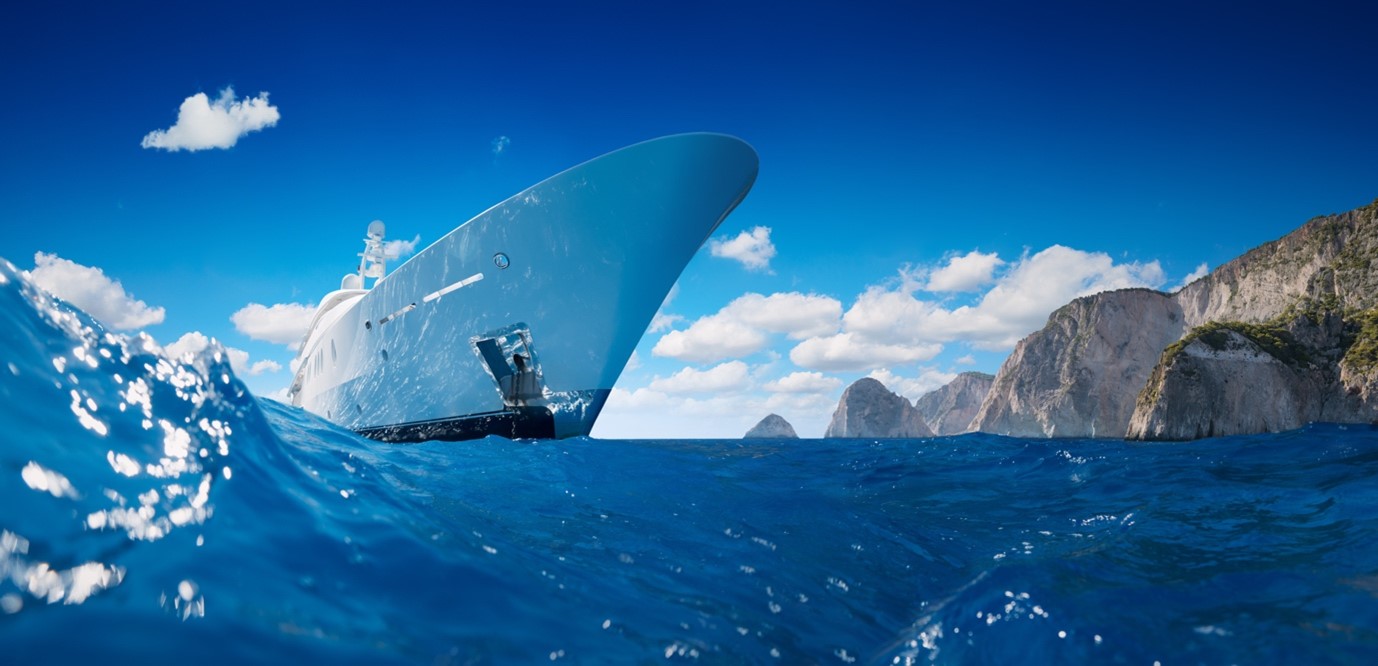
The global yet tight knit paradox
At first glance the superyacht industry may look vast. And seemingly impenetrable.
A happy melting pot of nationalities, glamourous locations and eyewatering budgets. Yet, scratch the surface and you will find a tight knit community.
To thrive in the superyacht industry, you must showcase your deep understanding of its exclusive culture, as well as your ability to meet the exceptionally high service standards demanded by affluent and discerning clients.
The Makeup of Industry Professionals
Superyacht business culture has traditionally been reliant on face-to-face meetings, networking, and small groups of individuals who know each other very well.
In the yachting world, many professionals you meet that work in management, brokerage, and shore-side support have in fact worked as crew onboard superyachts and this was their first entry into the yacht profession.
For this reason, it’s vital to know that the industry is small, and reputation is very important.
Creating positive relationships and positioning your brand as a trusted resource from the start is essential, and understanding the quirks and idiosyncrasies that come with working in the superyacht world will be key to your success.
Many of the people who work in the yacht industry used to work on superyachts, so they are very familiar with the purchasing hierarchy, their motivations to buy, and the way to behave on board.
AN INTERNATIONAL INDUSTRY
As an international industry, there are epicentres of yachting around the world. Yachts by their very nature travel all over.
This means that there are many international professionals that you will encounter in your working career. You will meet many people and potentially can travel widely.
Navigating the nuances of different cultures will allow you to be successful in the yacht world.
For example, if you are working with a US client or US professional, they may act and expect very different things than if you are communicating with a client from the Middle East.
Likewise, if you are visiting an Italian shipyard to install your product or meet a project manager, it may be a very different experience from visiting a shipyard in the Netherlands.
The nationality of the superyacht owner may influence the makeup of the crew, of the shore-side team, and how they communicate with people.
What’s important is to embrace and respect the differences between these cultures and understand how they all feed into the industry.
Any form of prejudice or racism is unacceptable, as it should be in every walk of life.
The primary business language of the yachting world is English, and all marketing materials should be written in English.
Of course, if you are fluent in another language and the person you are communicating with is from that country, then emailing and talking in their mother tongue is a fantastic way to build relationships.
IT’S ALL ABOUT THE OWNER
As soon as you work in the superyacht industry, you will frequently hear the term ‘The Owner’.
These are the individuals that financially support the industry. They are wealthy, powerful individuals who are very time-poor and value their yachts as a chance to escape and enjoy all that they have achieved.
As they are so busy and often do not have the intricate industry knowledge that is needed to run a yacht, owners will hire many representatives and spokespeople to manage the yachts and other assets.
This ranges from an owner’s representative to a yacht manager or a family office.
Owners can be very demanding. Everyone you meet in the superyacht industry will have a story of a particular incident or individual who pushed the boundaries of acceptable behavior.
DISCRETION IS THE KEY TO SUCCESS
As the saying goes, ‘money talks, but wealth is silent’.
Most superyacht owners do not wish to engage with the public or with yachting professionals who don’t work for them.
They will rarely take part in any of the events or the ‘circus’ that surrounds the yacht industry.
Most of the time, superyacht owners do not speak with industry professionals (unless you are the yacht manager, representative or captain), so a senior member of the owner’s team is most likely the person you will speak to.
It is rare that you will have much face time with an owner because of their high status, busy schedule, and wealth. Many owners prefer to be discreet and not make it public that they even own a yacht.
For some superyacht owners, discretion is key for safety and security reasons. If someone casually mentions an owner’s name or reveals private information to you, it is vital that you be discreet and that you do not share that with other people.
The industry is tiny and if you speak to a media outlet, reveal privileged information, or develop a reputation as someone who can’t be trusted, it could be very damaging to your relationships in the future. Discretion is key.
As a rule, most owners are distinctly removed from the nuts and bolts of the industry. It is rare, but you do sometimes come across owners who are interested in the yacht business itself.
Many owners just want to get on board their yacht and forget their day-to-day working life, whereas some individuals find the yacht world fascinating. They will go to shipyards, take part in events, speak about their experiences, and sometimes they even buy companies within the industry.
For these select few, yachting is a niche market for them to dip their toe into and it is seen as an honor to deal with them directly.
Yacht Crew
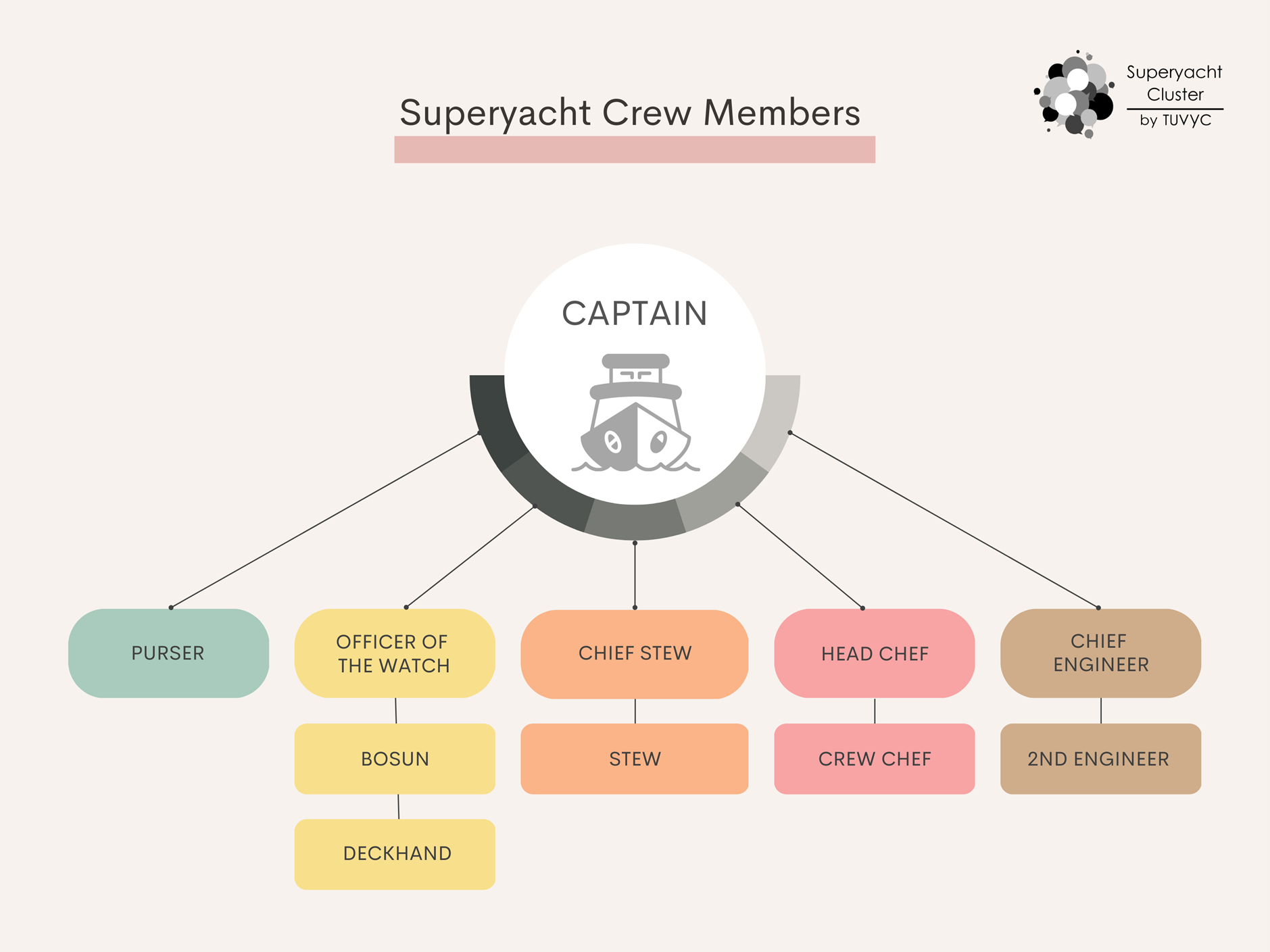
When working in the superyacht industry, it’s vital to understand the key roles of crew and what they are responsible for. The crew form the backbone of the daily operations of the yacht and are indispensable in the industry.
Exterior and Deck Crew
CAPTAIN
Except for the superyacht owner themselves, the captain is fully in charge of the vessel and is the key decision-maker on board. The captain is legally responsible for all elements of the yacht and the safety of crew and guests.
CHIEF OFFICER / CHIEF MATE
The second-in-command, the chief officer or chief mate roles varies for each yacht, but most commonly is also responsible for the safety of the vessel and the operations of the yacht.
SECOND OFFICER
If a yacht is large enough, it may also employ a Second Officer to assist the Chief Officer and the Captain.
BOSUN
The Bosun is a senior member of the exterior crew and manages the deckhands on board the yacht. The Bosun oversees all exterior duties, from driving the tender to cleaning equipment.
DECKHAND
Large yachts will most likely have several deckhands who have a range of responsibilities on the exterior of the yacht. Deckhands help guests with yacht toys, scrub teak decks, help with maintaining equipment and keep the yacht’s exterior pristine.
Interior Crew
CHEF
A vital role on board, a yacht’s chef cooks all the meals for guests and the crew. The chef will work closely with the interior team to create menus based on guest preference and is often in charge of provisioning ahead of an owner’s trip or charter.
CHIEF STEW
The most senior stewardess on the yacht, the chief stew is responsible for the interior organization and cleanliness of the vessel. They oversee laundry, cabin preparation, creating tablescapes, liaising with guests and serving meals.
STEW
A large yacht will have multiple stews to ensure a smooth, enjoyable experience for guests. Laundry, housekeeping, and guest service all fall under the responsibilities of a stew.
Engineering Roles
CHIEF ENGINEER
The primary person who is responsible for the running and maintenance of the yacht. The Chief Engineer oversees all technical equipment, the engine and any yacht systems on board.
2ND ENGINEER
Assistant to the chief engineer, will often take care of the ongoing maintenance of the powered watersports equipment and tenders and support the chief engineer in the smooth operation of the superyacht.
Other Roles
On larger superyachts, there will be specialized yacht crew roles that cater to an owner’s individual tastes and requirements, as well as appeal to charter guests. It’s common that vessels will have massage therapists or personal trainers on board, for example.
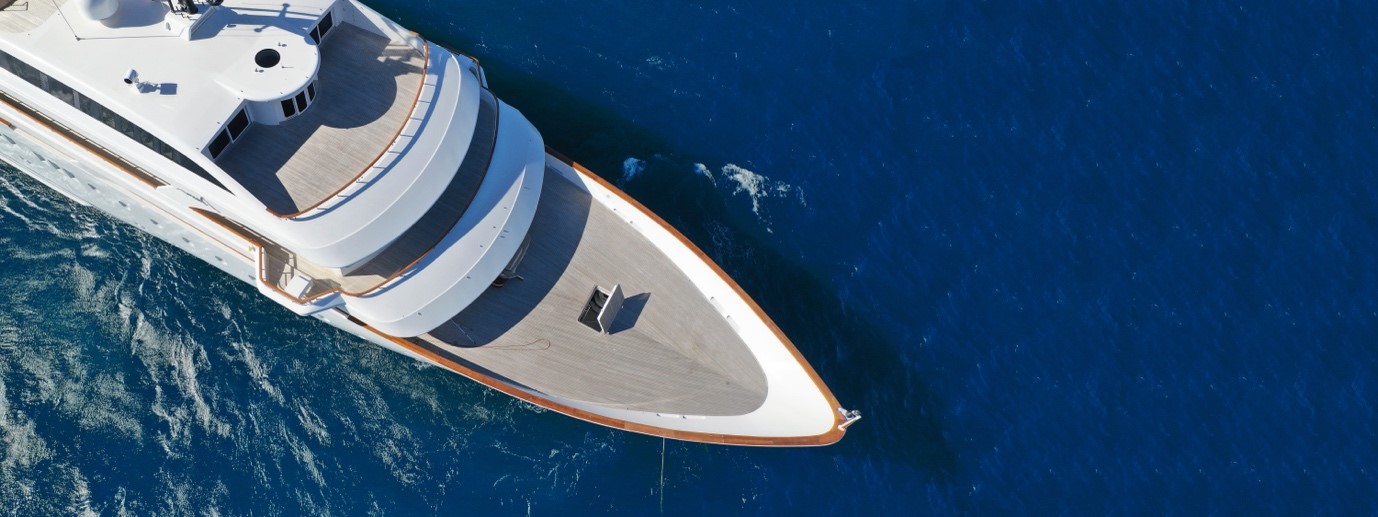
Changing Stereotypes
Traditionally the captain was male, the exterior or deck crew and engineers were male, and the interior crew were female.
In recent years there has been a very positive change towards those roles being open to anyone, and it is celebrated when a yacht has a female deckhand or captain, or a male chief stew for example.
As a result of the unique living situation, many superyacht crews develop incredibly strong bonds and sometimes even romantic relationships. It is not uncommon for people who meet on board yachts to become a couple and work together side by side.
Of course, yacht owners and captains sometimes don’t like this, but often it is accepted as a normal practice on board.
Sometimes, owners even prefer a husband-and-wife team taking the captain and chief stewardess roles in partnership on their yachts because this develops a firm foundation for the rest of the crew.
If you have not been yacht crew, it’s difficult to understand the dynamics of crew members on board. These individuals forge long relationships that last well past their time on board the yacht itself.
Many of them continue to be friends and business associates, especially if they work in the superyacht sector later, as a manager or a broker for example.

Case Study: Y.CO AND INDUSTRY ETIQUETTE
In 2004, Charlie Birkett and Gary Wright, former yacht crew members, founded Y.CO.
It’s a full-service company specializing in luxury yacht sales, charter, management, new construction, and refit.
As yacht crew members, they gained a wealth of knowledge and a deep understanding of the superyacht industry, which set them apart from the competition.
They realized that many brokerage and management companies were manned by people who had never spent much time working on yachts, which gave them an advantage in understanding the parameters in which today’s captains and crews work.
“What makes our company stronger than the competition in many areas is that we have both spent many years working on yachts,” explained Gary.
“Before Y.CO, other brokerage and management companies were manned for the most part by people who had never spent much time working on these sorts of yachts.
“They might go sailing at weekends, but they didn’t have the experience of what it’s really like to captain a big yacht, to manage it aboard, to provision it and to spend many weeks with the same team on lengthy worldwide voyages. That set us apart a little bit and gave us an insight very quickly into both sides of yachting.
“We are more understanding of what it takes to manage a yacht; the team aboard may be at sea, they may be on a charter, they may be experiencing bad weather, or they may have a very short time frame to get the boat ready for the next trip.”
Y.CO set out to build a successful company in the highly competitive superyacht industry, where relationships and reputation are everything.
The industry has unique cultural norms and etiquette, and Y.CO needed to navigate these while delivering exceptional service to their clients.
To achieve success, Y.CO focused on hiring staff with extensive experience in the industry, including former yacht crew members.
They also developed a company culture that valued professionalism, expertise, and attention to detail.
Y.CO understood that building strong relationships with clients and industry stakeholders was crucial for success, and they focused on fostering these relationships through effective communication and excellent service.
The focus on respecting the industry culture and etiquette, as well as their commitment to exceptional service, has paid off.
Today, Y.CO is one of the most successful companies in the superyacht industry, with a reputation for excellence and a loyal client base.
On Board Etiquette
One of the most important rules when you get on board a yacht is that you must take off your shoes. Not doing this will immediately signal that you do not know how to behave on a boat.
You take off your shoes to get onboard a yacht because most yachts have teak decking. Teak is a soft wood and shoes, especially high heels, can easily dent or damage the decking.
At boat shows or during any boat tours, you will most likely see a basket at the back of the yacht before you get on, this is for your shoes. If you see others taking off their shoes or covering their shoes at any point, make sure to follow their lead.
When you are on the yacht, the captain is king, and the crew must be respected. The crew are there for your safety and security, as well as to offer insight into the daily life on board.
As a superyacht industry professional, if at any point you behave unprofessionally, speak to the crew negatively or are disrespectful, you may be asked to leave. This is one of the most important etiquette rules to follow.
Key Decision Makers
There are many distinct roles in the superyacht industry. A smooth running of a vessel requires many individuals ashore.
These are the key-decision makers who have direct access to the owner and liaise with the yacht’s crew.
YACHT MANAGERS
This is a varied role with many responsibilities. Yacht managers oversee and manage many day-to-day logistics of the yacht, such as budgets, as well as large projects like refits.
The manager is also in charge of the yacht’s certifications, flag registration, insurance, and other important paperwork.
OWNER’S REPRESENTATIVES
An overarching term, the role of owner’s representative depends on the individual who they are working for.
An owner’s representative is the ears and eyes for the owner when they cannot be present, as well as someone who communicates what the owner’s requests to other members of the team.
Often, an owner’s representative will be actively involved in any new build or refit project.
YACHT DESIGNERS
The creative minds behind these beautiful vessels, yacht designers work closely with owners.
Designers are often divided into two groups: interior and exterior.
Yacht Designers are responsible for creating the concept of the yacht and working closely with the shipyard to see it come to fruition.
YACHT AGENTS
Offering shoreside support to crew and guests, yacht agents are often found in ports and marinas.
Yacht agents assist with a range of important duties, including organizing visas, communicating with port authorities, and securing berth bookings.
Yacht agents can also organize itineraries or activities for guests to enjoy on the shore.
CHARTER MANAGERS
A charter manager is an individual who plans and oversees charter bookings for guests and owners.
Each yacht will have a dedicated charter manager who will be liaison between the owner, captain, and charter guests.
Often, charter managers will create itineraries for the guests and have excellent knowledge of destinations across the globe.
YACHT BROKERS
A yacht broker is a consultant for the sales and purchase of superyachts.
Often ex-crew, these individuals have a vast knowledge of the profession and develop deep relationships with owners.
Networking in the Yacht World
The superyacht world is a people business.
The way that you grow your professional status and company will most likely be through exceptional marketing that speaks directly to the superyacht community, online networking, and meeting people face to face.
If you are cold calling or contacting someone for the first time, a phone call or zoom meeting is the best approach. If possible, ask for a mutual connection to introduce you to any prospect business associates.
Work can be very social. Boat shows, events, yacht launches, charity balls, galas, award ceremonies, regattas, and more are common diary dates for industry professionals.
You can expect to be invited to many events where there may be casual drinking. While it may well seem like parties and fun times, these events are vital in developing relationships with people to cement your place in the industry.
Although people may not appear to take themselves too seriously, laughing and joking and having a casual time, they are serious people who work for important individuals.
If you choose to drink alcohol, it is important to make sure you do so within your own tolerance levels. Not just because you may be onboard a very expensive yacht, but because you will quickly be remembered as the person who had one glass too many and will not be taken seriously.
Resources
For a small industry, yachting has many magazines, media outlets and resources that you can use to improve your knowledge and gain a deeper understanding of the intricacies of the business.
BOAT INTERNATIONAL
A luxury magazine and digital platform that specializes in owner interviews, charter destination content, yacht news and luxury subjects.
https://www.boatinternational.com/
DOCKWALK
A crew focused magazine and website that are very popular. Great for getting a more relaxed feel about what is important for superyacht crew.
www.dockwalk.com
SUPERYACHT TIMES
An online platform for yacht news, sales and charter data and interviews with shipyards and industry professionals.
https://www.superyachttimes.com/
THE SUPERYACHT GROUP
The media company that produces The Superyacht Report and Superyacht News, this outlet specializes in B2B content, shipyards, market analysis and fleet news.
https://www.thesuperyachtgroup.com/
YATCO
An online platform that is a go-to source for brokerage news and fleet updates.
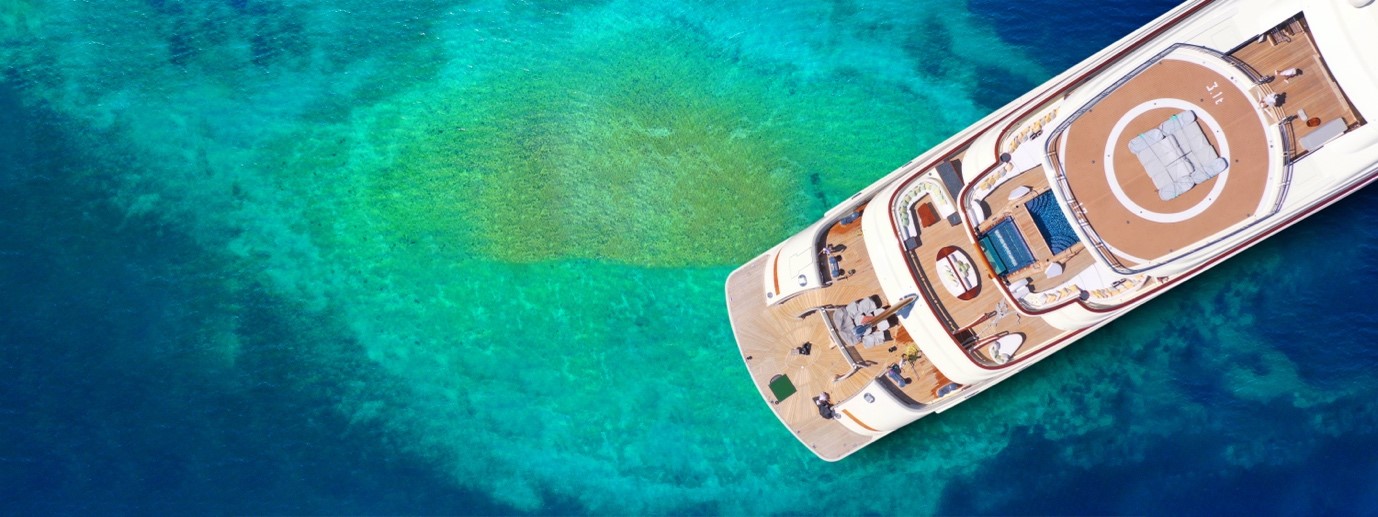
Superyacht Glossary
AFT DECK: On board a motor yacht, the aft deck is an area at the back of the boat on the main level; it commonly has casual seating for guests to use.
BEACH CLUB: An area at the back of the superyacht at sea level. May have access to the garage area or a room with watersports equipment and a changing area.
BERTH: A berth has two meanings: It can be a bed on board the yacht or a boat slip within a marina where the yacht clip can be anchored.
BOW: The forward area of a yacht.
CHARTER YACHT: A yacht that is available for charter.
DRAFT: The draft is the vertical depth of a yacht below the waterline. Yachts with a ‘shallow draft’ can travel close to shore.
FLEET: A group of yachts.
FLYING BRIDGE (OR FLYBRIDGE): A yacht with a raised, second level.
GALLEY: The kitchen area on a yacht.
HELM: The steering wheel for the boat or yacht. Also known as a ‘helm station’.
HULL: The hull is the main, structural part of the yacht that is in the water.
KNOT: How fast a yacht travels, measured in nautical miles an hour.
LENGTH OVER ALL (LOA): The size of the yacht. Yachts are listed in both metres (m) and feet (ft).
MAIN SALON: The main salon is an indoor space on board a yacht that is often the largest communal space on the main deck.
MASTER CABIN: The best cabin on board (sometimes called an Owner’s Suite or Owner’s Stateroom).
MOTOR YACHT: A yacht powered by one of more engines.
MULTIHULL: A yacht that is built with more than one hull, such as a catamaran.
NEW BUILD: A new build yacht is under construction at a shipyard.
PORT (DIRECTION): The left side of a boat when facing the bow.
PORT (LOCATION): A marina where you can anchor your yacht and visit the shore.
PRIVATE YACHT: A yacht that is not available for charter.
PULLMAN BERTH: An additional bed (similar to a bunk bed) found in a yacht’s cabin.
REFIT: A refit is any form of works, upgrades or improvements to a yacht that takes place in a shipyard.
SAILING YACHT: A yacht that is primarily powered by sails. However, many sailing yachts also have an engine to use if the weather conditions do not permit sailing.
SKY LOUNGE: An interior guest area on the upper deck of a superyacht.
STARBOARD (DIRECTION): The right side of a yacht when facing the bow. It is the opposite of Port.
STERN: The aft (or back) area of a yacht.
SUPERYACHT: Yachts over 24m. The terms ‘megayacht’ and ‘superyacht’ can be used interchangeably.
SWIM PLATFORM: The space at the back of the yacht from which you typically can go swimming or board a dinghy. Lately, these have become entire pool/beach areas on some of the larger luxury yachts.
TENDER: A small boat on board a yacht that is used for carrying supplies, collecting guests from ashore, watersports, and day trips.
YACHT BROKER (CHARTER): A professional who creates and manages yacht charters.
YACHT BROKER (SALES): A professional who specializes in the purchase and sale of yachts.
ZERO-SPEED STABILIZERS: Technology that prevents the yacht from rolling while underway and at anchor, improving the comfort for all on board.
A lively, entertaining, and luxurious industry
The unique nature of the superyacht industry may at first seem daunting, but familiarizing yourself with the basics will equip you with the knowledge to feel comfortable in business meetings and at superyacht events.
To gain trust and grow your company in the superyacht world, learn about the intricacies of the industry’s key players. These are the superyacht owners, captains, crew, yacht managers, designers, agents, owner’s representatives, and brokers.
Remember that discretion is key, and the industry is small, so reputation is important.
Don’t be afraid to network and connect. Ultimately, the superyacht industry is a lively, entertaining, and luxurious realm to work in.

Exercise
1. What are the correct definitions of each of the following terms:
• Aft deck
• Flying bridge (or Flybridge)
• Galley
• Pullman berth
• Port (direction)
• Sky Lounge
2. Discuss and define how you might adapt your communications and behaviors when dealing with an American Management company, an Italian Shipyard and a Middle Eastern Owner’s Representative.
3. Who do you think will be your clients within the superyacht industry? Who will you be in direct contact with during the purchasing process and what part will they play?

Course Manual 9: SYC Superyacht Industry Hubs
LEARNING OUTCOME
Find where you need to establish a presence.
SYNOPSIS
There are key superyacht hubs around the world where the onboard community, the yachts and the onshore support converge.
Here we share the hot spots, the latest trendy destinations, and the business centres of the superyacht industry and why they are so important.
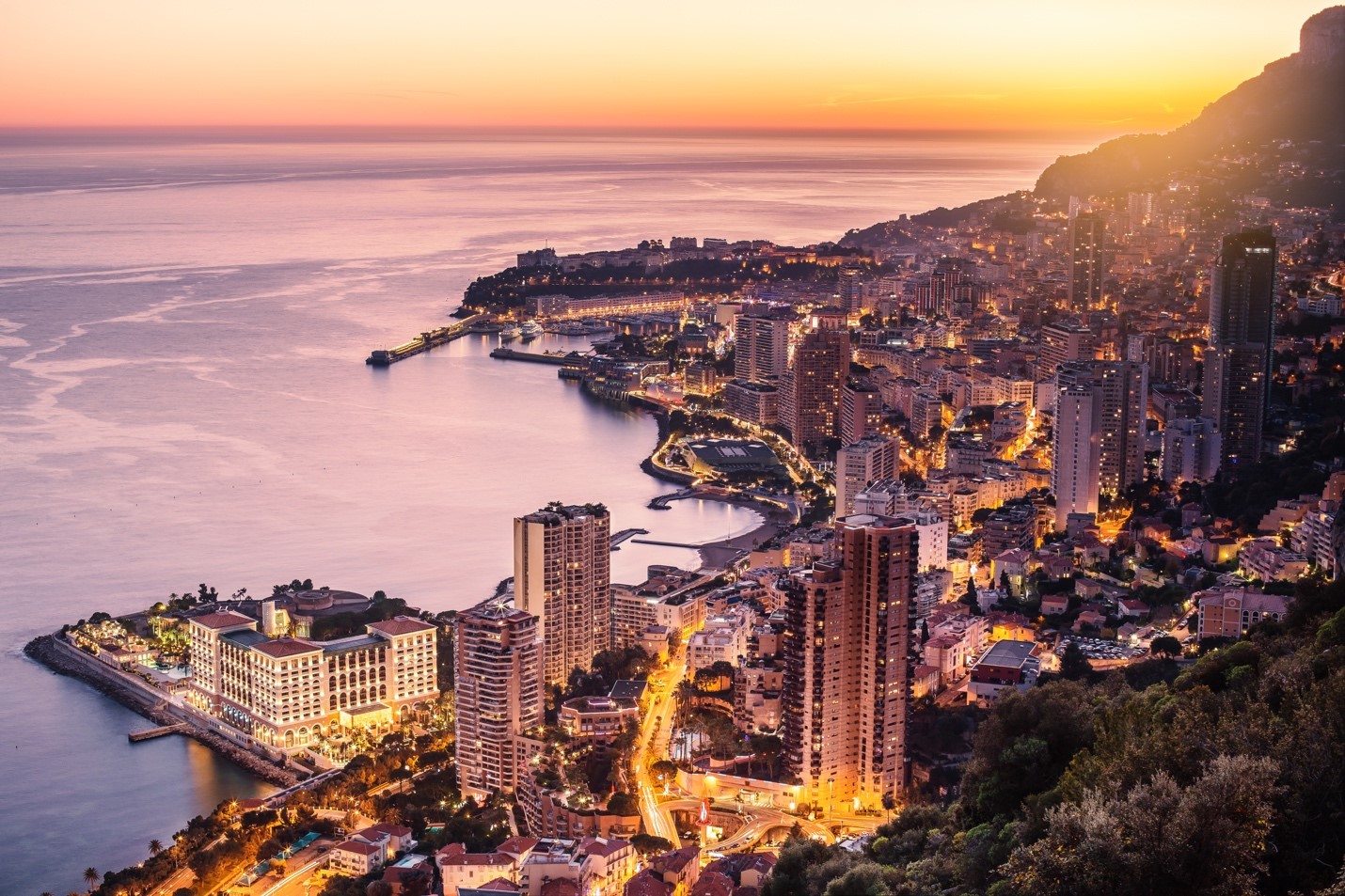
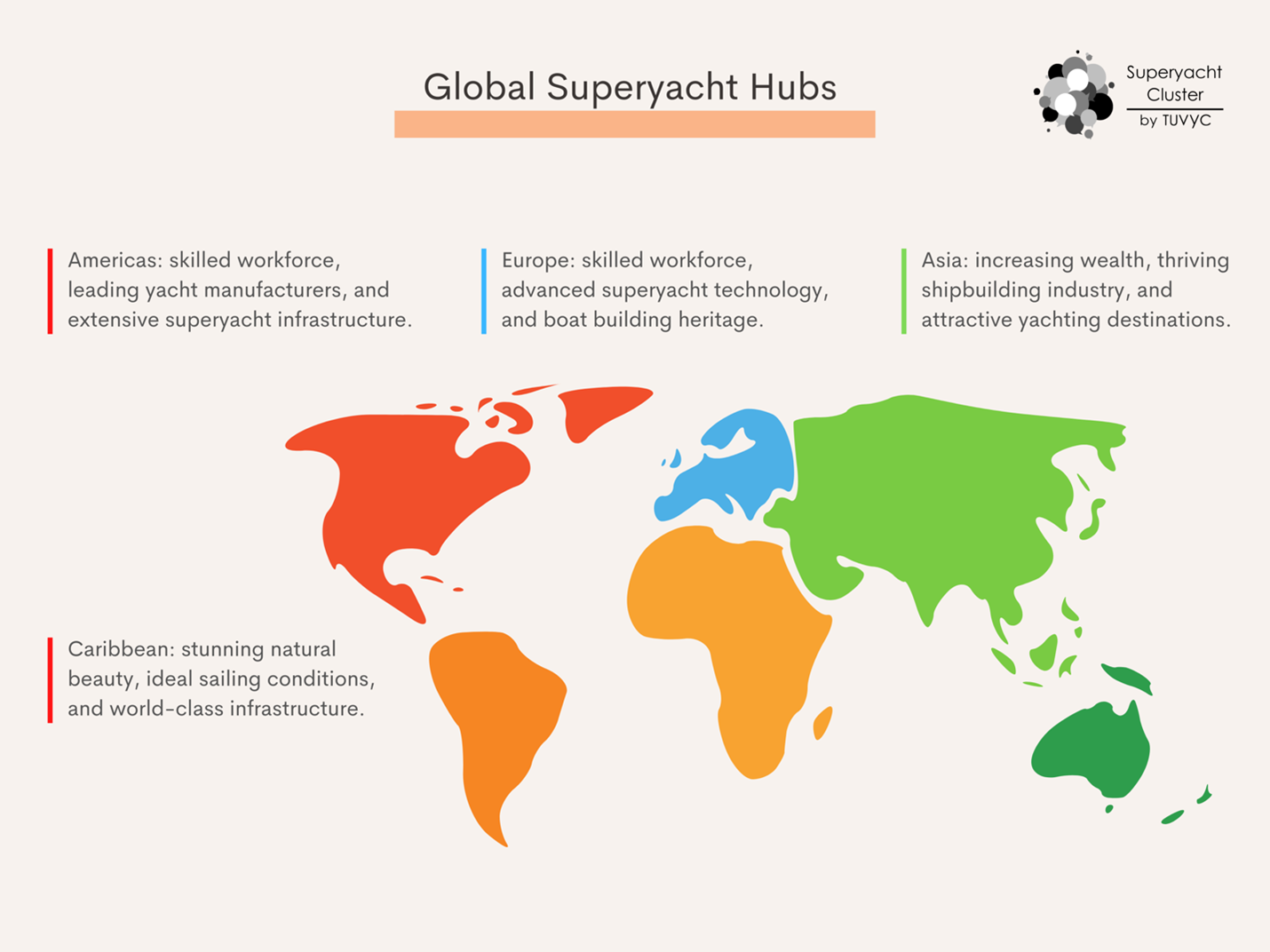
Europe
Europe is a significant hub for the superyacht industry due to its skilled workforce, advanced technology, historical tradition of boat building, and ideal geography and climate.
The region’s rich tradition of boat building and design has resulted in the creation of many iconic and innovative yachts, with European yacht designers known for their creativity, elegance, and attention to detail.
MONACO
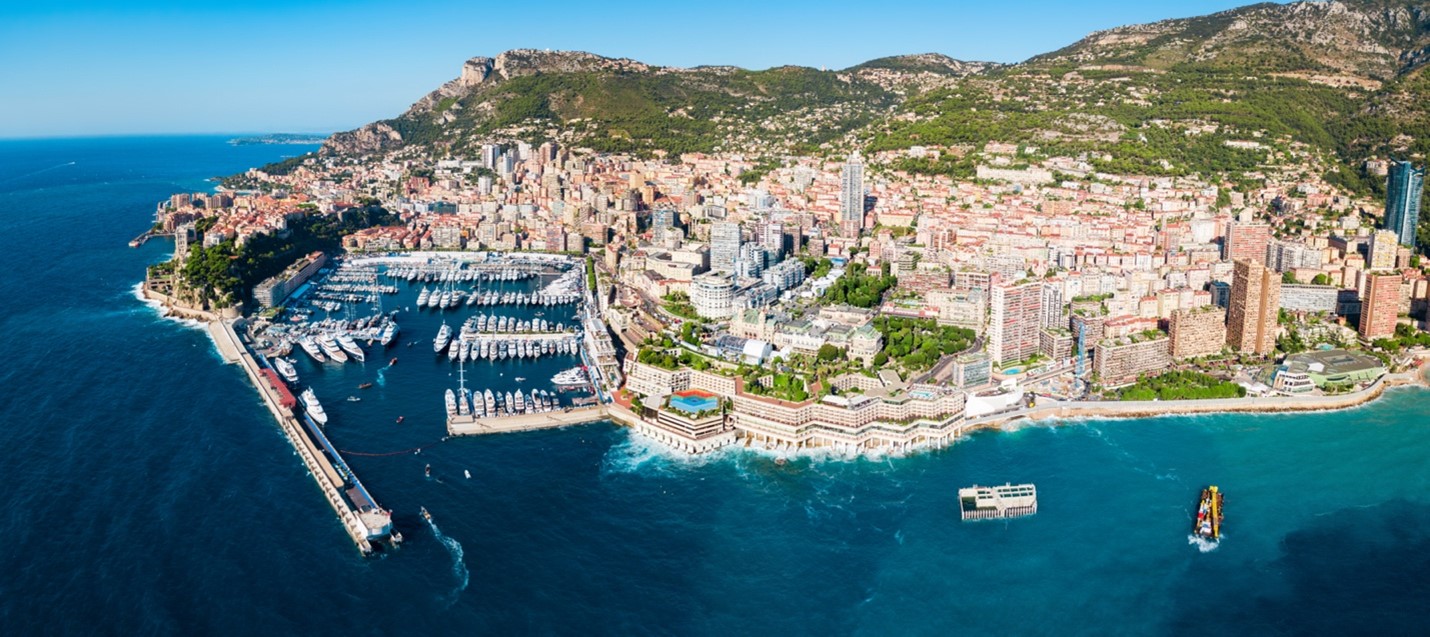
Monaco is a highly sought-after location for superyachts, known for its luxurious lifestyle and stunning Mediterranean coastline.
Popular marinas include Port Hercule, which can accommodate vessels up to 130 meters in length, and the nearby Fontvieille Marina.
The principality is also home to the prestigious Monaco Yacht Show, one of the most important events in the superyacht industry calendar, and the iconic Yacht Club de Monaco.
Recent investments in superyacht infrastructure include the expansion of Port Hercule and the creation of a new marina in the Portier Cove area.
Overall, Monaco’s prime location, rich history, and investment in superyacht infrastructure make it a highly desirable destination for superyacht investment.
NICE AND ANTIBES, FRANCE
The French Riviera remains a highly desirable location for superyachts, with its stunning coastline, vibrant culture, and top-tier amenities.
Nice has two main marinas, Port de Nice and Port Lympia, which offer easy access to the city’s luxury shopping and dining options.
Antibes has several marinas, including Port Vauban, which is the largest marina in the region and can accommodate vessels up to 170 meters in length.
The Cannes Yachting Festival and the Monaco Yacht Show are both prestigious boat shows that take place in the area, while the Yacht Club de Antibes is a famous yacht club that has been in operation since 1933.
Recent investments in superyacht infrastructure include the renovation of the Port Vauban marina in Antibes, which now features new berths and facilities for superyachts.
There are also plans to develop a new marina in nearby Villeneuve-Loubet.
LA CIOTAT, FRANCE
La Ciotat, located in the south of France, is a popular location for superyachts due to its modern infrastructure and facilities.
The area is home to several marinas, including the large and well-equipped La Ciotat Shipyards, which can accommodate vessels up to 230 meters in length.
The town has a rich history in the shipbuilding industry, having been a major centre for ship repairs and refits since the 19th century.
Today, La Ciotat is home to several well-known superyacht shipyards and related businesses, including MB92 La Ciotat.
Recent investments in superyacht infrastructure include the expansion of the La Ciotat Shipyards, with plans for new facilities and berths for superyachts.
SAN REMO, ITALY
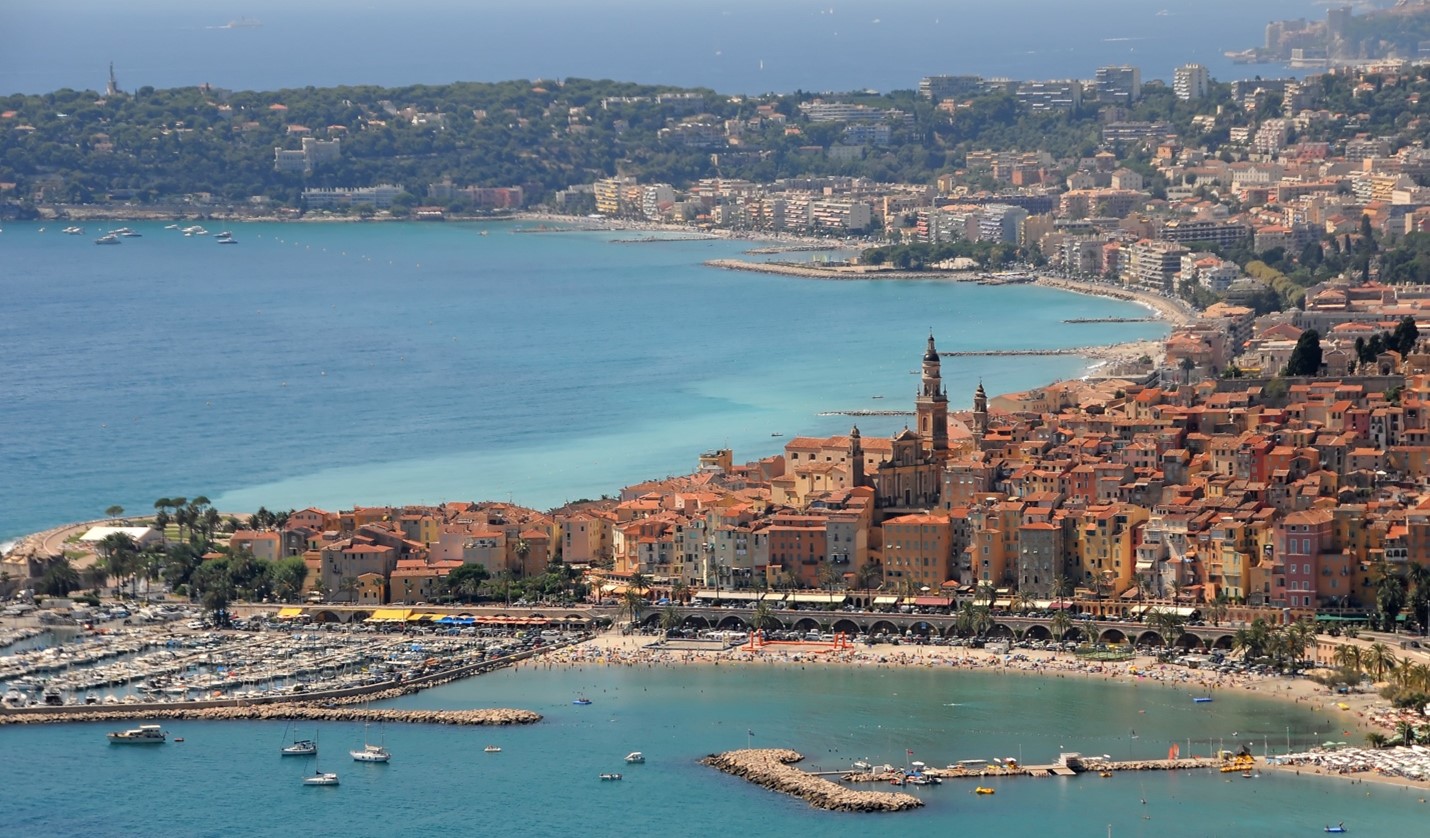
San Remo, located in the Liguria region of Italy, is a popular destination for superyachts due to its picturesque coastline and proximity to other popular Mediterranean destinations.
The port of San Remo is a popular marina for superyachts, offering 800 berths and a range of services for yacht owners and guests.
Other popular anchorages in the area include the nearby town of Imperia and the protected bay of Santo Stefano al Mare.
San Remo hosts several prestigious boat shows throughout the year, including the annual Genoa Boat Show, one of the largest and most important boat shows in Europe.
The area is also home to several famous yacht clubs, including the Yacht Club Sanremo and the Yacht Club Imperia.
There are several well-known businesses in the area, including the ISA Yachts shipyard in Ancona, which has built several high-profile superyachts.
GENOA, ITALY
Genoa is a popular location for superyachts on the Italian Riviera. It has a long maritime history and a strong tradition of shipbuilding, which is reflected in the numerous shipyards located here.
Some of the most prestigious yacht clubs in the world, such as Yacht Club Italiano and Circolo Nautico, are based in Genoa.
The city also hosts the annual Genoa International Boat Show, which attracts superyachts and other luxury vessels from around the world.
Genoa has several marinas that cater to superyachts, including Marina Genova, Marina Porto Antico, and Marina Molo Vecchio. There are also several places to anchor in the surrounding waters, including the nearby Portofino and Santa Margherita Ligure.
Genoa is home to some of the most well-known and respected names in the industry, including Fincantieri, Benetti, and Sanlorenzo. These shipyards have a long history of building some of the world’s most impressive superyachts.
In recent years, there have been several investments made in superyacht infrastructure in Genoa, including the expansion of Marina Molo Vecchio and the construction of a new superyacht marina in the nearby town of Sestri Levante.
SARDINIA
Sardinia is the second-largest island in the Mediterranean Sea. The island has several marinas that are popular with superyachts, including Porto Cervo and Porto Rotondo on the north-eastern coast, and Cala di Volpe on the Costa Smeralda.
The Maddalena archipelago, off the northern coast of Sardinia, is also a popular destination for superyachts.
Sardinia hosts several prestigious boat shows and regattas, including the Loro Piana Superyacht Regatta and the Maxi Yacht Rolex Cup. The island is also home to several famous yacht clubs, including the Yacht Club Costa Smeralda.
BARCELONA, SPAIN
Barcelona is a popular location for superyachts in the Mediterranean, with a range of marinas and anchorages available.
Some of the most popular marinas include Port Vell, located in the city centre and able to accommodate superyachts up to 190m in length, and Marina Port Forum, located near the city’s beaches and with a capacity for yachts up to 130m.
Barcelona also hosts the annual Barcelona International Boat Show, which is a popular event. Barcelona is also home to the annual MYBA Charter Show.
There are several famous yacht clubs in the area, including the Real Club Nautico de Barcelona.
There are several well-known superyacht shipyards in Barcelona, including MB92 Barcelona, which is one of the largest yacht refit and repair yards in the world.
Barcelona has been an important port for centuries and was once home to a large fishing fleet. In recent years, there has been significant investment in superyacht infrastructure in the city, with plans to expand and modernize Port Vell and other marinas.
The future potential for the superyacht industry in Barcelona is strong, with the city’s location and amenities making it a desirable destination.
NETHERLANDS
Amsterdam has several marinas that cater to superyachts, including the Amsterdam Marina and the Sixhaven Marina.
The country is also home to several shipyards that specialize in building and refitting superyachts, such as Feadship, Heesen Yachts, and Amels.
The Netherlands is known for its long history in shipbuilding, and this expertise has been applied to the superyacht industry as well.
The Netherlands hosts the annual HISWA Amsterdam Boat Show, which features a dedicated area for superyachts. The country is also home to several prestigious yacht clubs, such as the Royal Dutch Yacht Club and the Royal Maas Yacht Club.
The future potential for the superyacht industry in the Netherlands is strong, with ongoing investments in infrastructure and facilities. The Port of Amsterdam is undergoing a major expansion project, with plans to accommodate larger vessels, including superyachts.
SOUTHAMPTON, UK
Southampton is a popular location for superyachts in the UK. It has several marinas that cater to superyachts, including Ocean Village Marina and Shamrock Quay.
Southampton is home to several well-known shipyards, including Sunseeker International.
The city has a long history in the maritime industry, with shipbuilding and repair being a key part of its economy.
The city hosts the Southampton International Boat Show, which is one of the largest boat shows in the UK and attracts superyacht enthusiasts from around the world.
Southampton also has several yacht clubs, including the Royal Southampton Yacht Club and the Ocean Village Yacht Club.
In recent years, there has been significant investment in superyacht infrastructure in Southampton, including the expansion of Ocean Village Marina and the development of new facilities at the nearby Hythe Marina Village.
TURKEY
Turkey has emerged as an increasingly popular destination for superyachts, with its stunning natural scenery, rich cultural heritage, and rapidly growing superyacht industry.
The Yalikavak Marina in Bodrum, recognized as the “World’s Best Marina”, and the Marmaris Yacht Marina are popular.
The country hosts several boat shows and well-known yacht clubs such as the Istanbul Offshore Club and the Bodrum Sailing Club.
Turkey is home to several renowned superyacht shipyards such as Turquoise Yachts.
The country has invested heavily in superyacht infrastructure, with new marinas and upgrades to existing facilities.
The Turkish government has made efforts to streamline the process for foreign-flagged yachts, and international investors are showing interest in developing new superyacht-related facilities in the country.
PALMA, MALLORCA
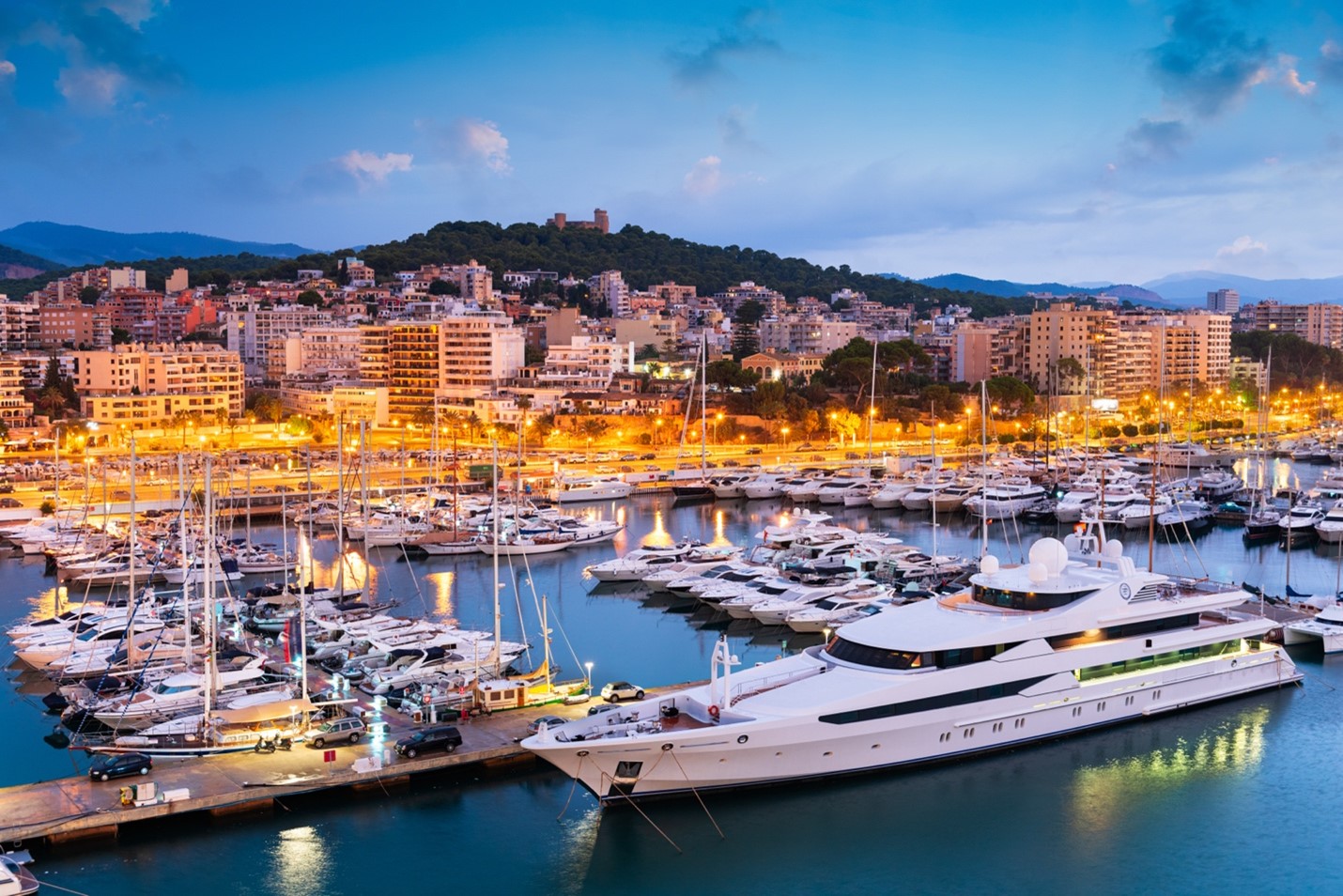
Palma, Mallorca is a popular destination for superyachts due to its stunning natural scenery, excellent facilities, and location in the Mediterranean.
The marinas in Palma can accommodate some of the world’s largest yachts in addition to limitless anchoring options in the surrounding waters.
The city hosts prestigious boat shows such as the Palma International Boat Show.
Well-known superyacht shipyards in the area include Astilleros de Mallorca and STP Shipyard Palma, while other related businesses include yacht management companies, brokers, and marine suppliers.
Palma has a rich maritime history and has been a hub for the superyacht industry for a long time.
Recent investment has included expanding marina facilities and developing new yacht maintenance and repair facilities.
The future potential for the superyacht industry in Palma looks promising, with continued investment in infrastructure and growing demand for superyacht services in the Mediterranean.
ATHENS, GREECE
Athens, Greece is a popular location for superyachts due to its beautiful coastline and historical significance.
Popular marinas and anchorages in the area include Flisvos Marina and Marina Alimos.
The city is also home to the Athens Boat Show, which showcases the latest in the yachting industry.
Well-known superyacht shipyards and other businesses in the area include Golden Yachts and Halkitis Shipyards.
There have been recent investments in superyacht infrastructure in Athens, including the expansion of Flisvos Marina.
Caribbean
The Caribbean is a popular destination for the superyacht industry due to its stunning natural beauty, ideal sailing conditions, and world-class infrastructure.
The region’s crystal-clear waters, pristine beaches, and lush tropical landscapes provide a wide range of cruising grounds, from the calm and sheltered waters of the Bahamas to the more challenging conditions of the Windward Islands.
The Caribbean’s consistent trade winds, calm seas, and warm temperatures throughout the year create ideal conditions for sailing and watersports, with many protected anchorages and marinas offering safe and convenient places to moor.
High-quality marinas, shipyards, repair facilities, luxury hotels, restaurants, and specialist service providers make it a highly attractive destination for superyacht owners and crew.
Overall, the Caribbean’s natural beauty, sailing conditions, and infrastructure make it a significant centre for the superyacht industry.
ST BARTHS
St. Barths offers several marinas and anchorages for superyachts, including Gustavia Harbour.
St. Barths hosts an annual yacht show, the St. Barths Bucket Regatta, which attracts many high-end yacht owners and enthusiasts.
The island also has several exclusive yacht clubs, including the St. Barths Yacht Club, which organizes sailing events and races.
The island is also exploring the potential for developing new superyacht-related businesses and services. St. Barths has recently invested in improving its superyacht infrastructure, with upgrades to its marinas and ports.
ST MAARTEN
St Maarten is a popular location for superyachts in the Caribbean. Its location at the northern end of the Lesser Antilles makes it a natural stopping point for yachts traveling between the Virgin Islands and other destinations in the Caribbean.
Popular marinas and places to anchor include Simpson Bay Lagoon, which is the largest lagoon in the Caribbean, and Marigot Bay on the French side of the island. There are also several other marinas and anchorages around the island.
The island has hosted the annual St Maarten Heineken Regatta, a famous sailing event that attracts sailors from around the world.
Recent investment in superyacht infrastructure includes the expansion of the Simpson Bay Lagoon Marina, which has increased its capacity to accommodate larger yachts. There are also plans to develop a new marina in the Oyster Pond area.
St Maarten has great potential for further development in the superyacht industry, with its strategic location and established infrastructure.
ANTIGUA
Antigua is a popular destination for superyachts in the Caribbean, with several marinas and anchorages to choose from.
The Antigua Charter Yacht Show is a prestigious event in the superyacht industry calendar, attracting some of the world’s most luxurious and high-profile vessels.
The island also boasts several yacht clubs, including the Antigua Yacht Club, which hosts an annual sailing week regatta.
The island has a rich maritime history, with Nelson’s Dockyard serving as a UNESCO World Heritage site and popular attraction for tourists.
The government has made recent investments in improving infrastructure for the superyacht industry, including dredging harbours to accommodate larger vessels.
The future potential for superyacht industry development in Antigua is promising, with the government actively seeking to expand and improve the island’s yachting infrastructure.
BERMUDA
Bermuda has a few marinas for superyachts, including the Royal Naval Dockyard, and hosts boat shows such as the Bermuda Charter Yacht Show.
The island has a rich yachting history, having hosted the America’s Cup and with the first Royal Bermuda Yacht Race taking place in 1906.
Bermuda is also home to prestigious yacht clubs, such as the Royal Bermuda Yacht Club.
The government has invested in upgrading infrastructure, including new facilities and improvements to existing ones.
The island’s position as a hub for the reinsurance industry attracts wealthy individuals interested in yachting, offering significant potential for future superyacht industry development.
THE EXUMAS
The Exumas, located in the Bahamas, is a popular destination for superyachts due to its crystal-clear waters, beautiful beaches, and secluded coves.
While there are no major boat shows or yacht clubs, there are several superyacht-related businesses that cater to the needs of visiting yachts.
The Bahamas government has made efforts to streamline the process for obtaining permits and approvals for superyacht owners and operators, and there are plans for new marinas and facilities in the area.
Asia
The superyacht industry in Asia is growing, driven by the region’s increasing number of high-net-worth individuals, a thriving shipbuilding industry, and attractive yachting destinations.
Countries like China, Japan, and South Korea have seen a rise in millionaires and billionaires with a taste for luxury experiences, while Taiwan, China, and Vietnam have skilled craftsmen and engineers to build and repair yachts to high standards.
Additionally, the region’s stunning coastlines, clear waters, and beautiful islands make it a popular destination for superyacht owners and their guests.
Governments and private organizations have also supported the industry’s growth through initiatives like the Singapore Yacht Show and infrastructure investments.
SINGAPORE
Singapore is a popular location for superyachts in Asia, with its advanced infrastructure and central location.
The popular marinas for superyachts in Singapore are the One°15 Marina and the Marina at Keppel Bay.
The Singapore Yacht Show is a prestigious boat show that showcases superyachts.
The most famous yacht club in Singapore is the Republic of Singapore Yacht Club, which is the oldest yacht club in Asia.
Well-known superyacht shipyards in Singapore include the Sembcorp Marine Tuas Boulevard Yard.
While the superyacht industry is relatively new in Singapore, there is great potential for growth due to the country’s strong economy and position as a gateway to Asia.
Americas
The Americas have become an important hub for the superyacht industry due to its skilled workforce, leading yacht manufacturers, favorable regulatory framework, and extensive infrastructure.
The region’s stunning cruising grounds attract yacht owners and charters from around the world, making it an ideal location for yacht sales, chartering, and management.
The highly skilled workforce in the region enables it to build and maintain some of the world’s most advanced and luxurious yachts.
The Americas are also home to many of the world’s top superyacht manufacturers and have a robust legal and regulatory framework that supports the industry.
MIAMI, USA
Miami is a popular destination for superyachts due to its year-round good weather, clear waters, and excellent amenities.
Miami has several popular marinas, including Miami Beach Marina and Island Gardens Deep Harbour, and famous yacht clubs such as the Miami Yacht Club.
Prestigious boat shows, including the Miami International Boat Show, take place annually.
The area is home to several superyacht-related businesses such as Derecktor Shipyard and the International Yacht Restoration School.
Miami has also seen significant investment in superyacht infrastructure, with projects like the $500 million Island Gardens and planned projects such as the Miami Riverwalk and the Miami Beach Convention Center, expected to further develop the industry.
FORT LAUDERDALE, USA
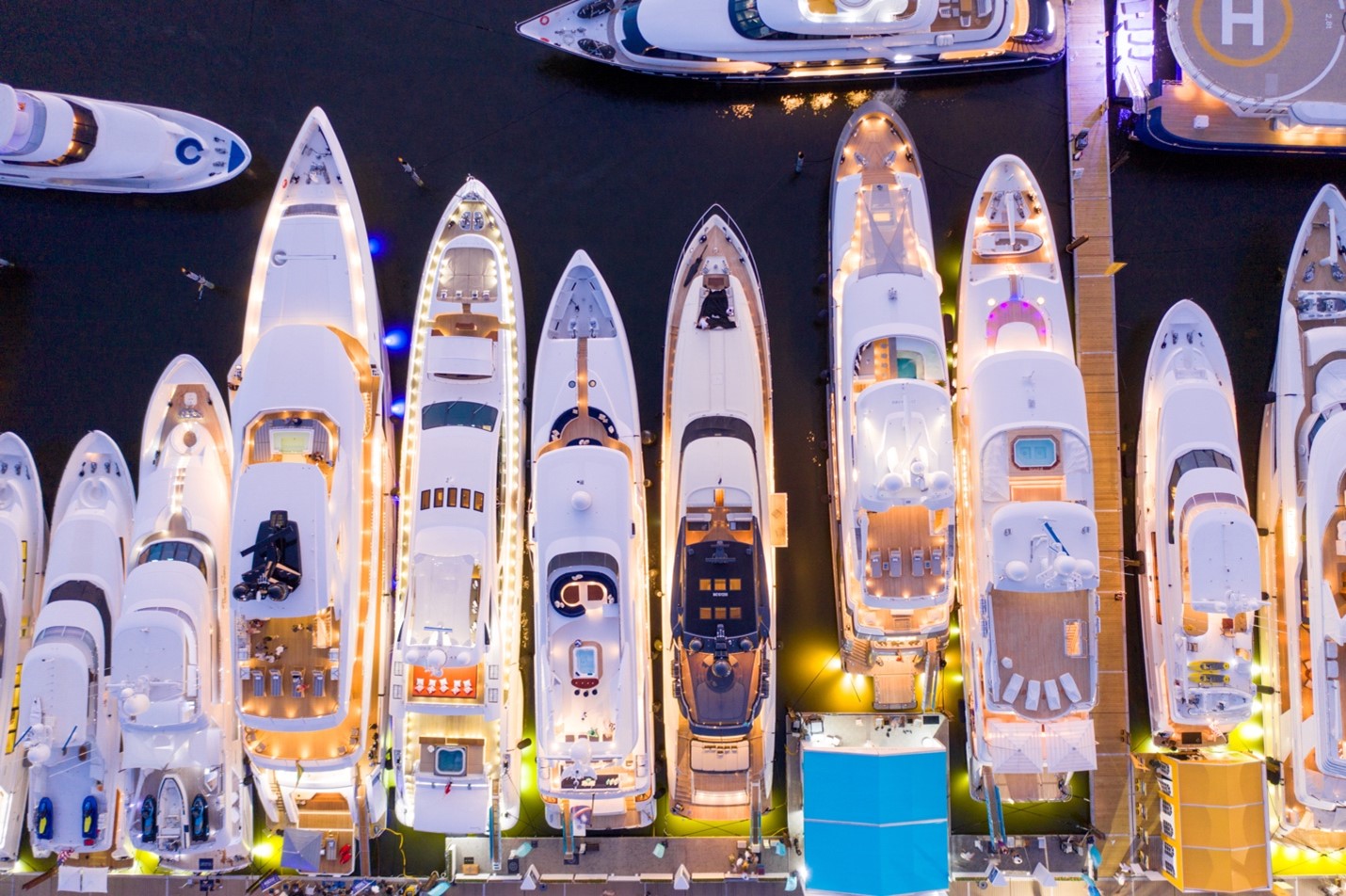
Fort Lauderdale is a top location for superyachts due to its numerous waterways and registered yachts.
Popular marinas include the Bahia Mar Yachting Center, Pier 66 Marina, and Las Olas Marina.
Fort Lauderdale hosts famous boat shows such as the Fort Lauderdale International Boat Show and prestigious yacht clubs like the Lauderdale Yacht Club.
Recent investments include the Lauderdale Marine Center, and planned projects such as the Riverwalk Residences of Las Olas and the Flagship Fort Lauderdale, indicate the high potential for superyacht industry development in the area.
RHODE ISLAND AND NEW ENGLAND, USA
Rhode Island and New England are attractive destinations for superyachts due to their beautiful coastlines, strong boating culture, and world-class amenities.
Popular marinas include Newport Shipyard and Boston Yacht Haven, while prestigious yacht clubs such as the New York Yacht Club and Corinthian Yacht Club host events such as the Newport Bermuda Race and America’s Cup.
There has been significant investment in superyacht infrastructure in the area, and Rhode Island offers tax incentives to attract more superyacht owners.
Future development includes plans for new marinas, yacht clubs, and increased investment in yacht-related businesses and services.
Rest of the world
BRISBANE AND THE GOLD COAST, AUSTRALIA
Brisbane and the Gold Coast in Australia have become a popular destination for superyachts due to its marinas and anchorages, such as Sanctuary Cove Marina and Gold Coast City Marina, which offer excellent facilities and services.
The region also hosts prestigious boat shows, including the Sanctuary Cove International Boat Show and the Gold Coast International Marine Expo.
Several well-known superyacht shipyards, including Echo Yachts and Rivergate Marina and Shipyard, offer maintenance and refit services.
The region has undergone significant investment in superyacht infrastructure, with the Gold Coast City Marina expanding, and plans to develop a new superyacht hub in Brisbane’s Rivergate Marina.
NEW ZEALAND
New Zealand is a popular destination for superyachts due to its pristine waters and picturesque scenery.
Popular marinas include Viaduct Harbour in Auckland and Bay of Islands Marina, with other destinations including Marlborough Sounds, Bay of Plenty, and Fiordland National Park.
New Zealand has a small but growing superyacht industry with several well-known shipyards such as Alloy Yachts and Fitzroy Yachts.
The government has invested in infrastructure to support the industry’s growth, including the development of a superyacht refit and repair facility in Whangarei, which is one of the largest in the Southern Hemisphere.
DUBAI
Dubai is a popular destination for superyachts due to its prime location and luxury reputation.
Popular marinas include the Dubai Marina Yacht Club and the Dubai Creek Marina, with several places to anchor such as the Palm Jumeirah and the World Islands.
Dubai has several prestigious boat shows, famous yacht clubs, and well-known superyacht shipyards, such as Gulf Craft and Platinum Yachts.
Plans have been announced to build a new marina and cruise ship terminal in the Mina Rashid area, with a capacity for over 500 yachts.
The superyacht industry in Dubai is expected to continue to grow with more investment in infrastructure and services guaranteed.

Exercise

Course Manual 10: SYC Driving Forces of the Superyacht Industry
LEARNING OUTCOME
Understand the problems, so you can help provide the solutions.
SYNOPSIS
It’s not all dollar signs and sunshine, the superyacht industry can and does come up against some very public criticism including its effect on the climate and lack of sustainability.
Understand what the sector can fall foul of, and how others have sailed through sticky situations and come out smelling of roses.
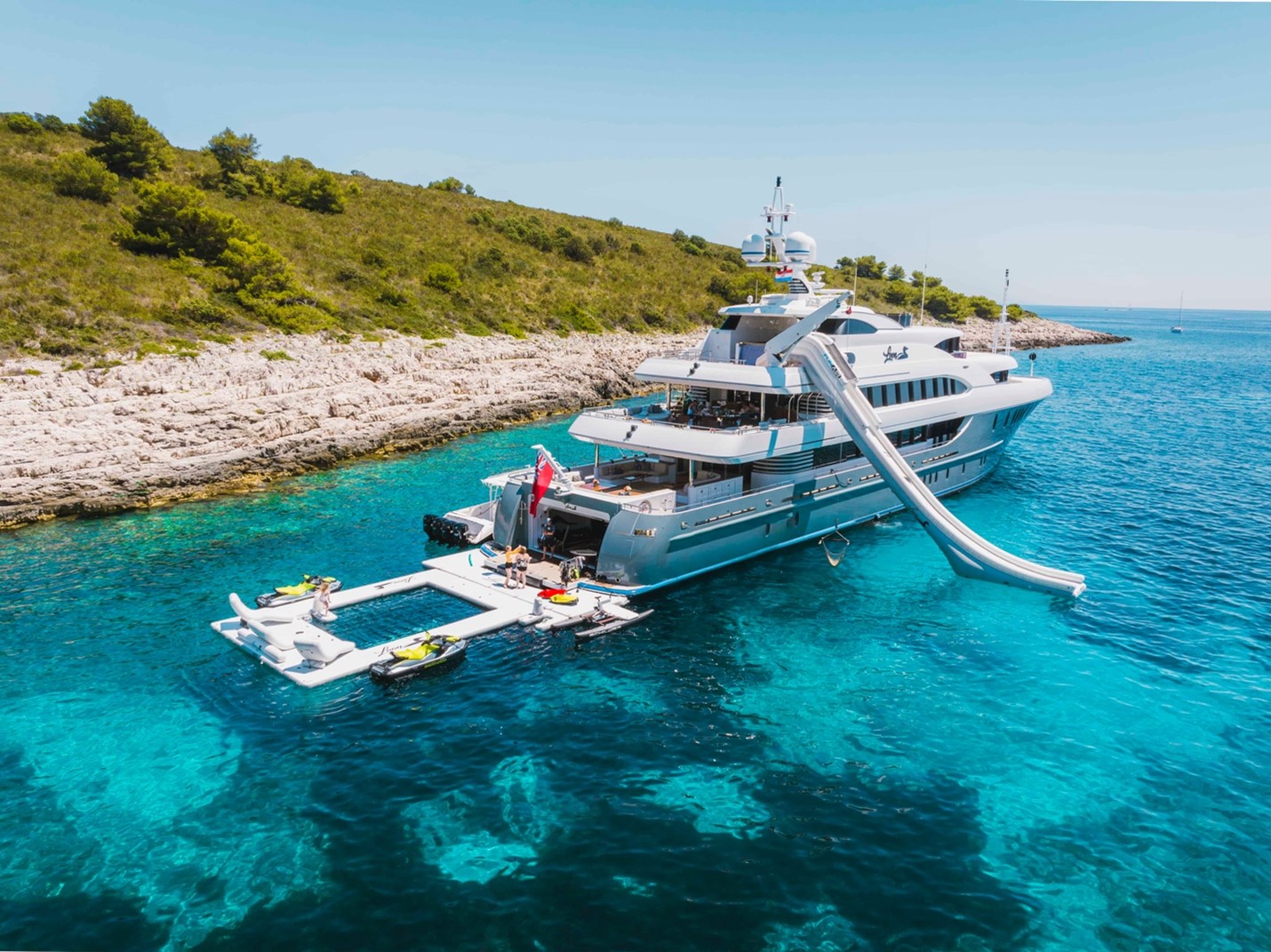
A controversial industry
The superyacht industry has long been a subject of criticism and debate, with many people questioning the validity and morality of such extravagant vessels.
While there are certainly valid criticisms to be made about the superyacht industry, it is important to consider all sides of the argument.
By expanding its focus to encompass a broader range of values and priorities, the industry can highlight its contributions to job creation, wealth distribution, philanthropy, scientific research, technological innovation, and adventure.
In this manual we explore a range of issues. For each we will consider the charges against the industry, the case for the defense and develop ideas for what needs to happen to deliver long term improvements.
To shift the public perception of the superyacht industry, it is important for industry leaders to engage in transparent and ethical practices, prioritizing sustainability, and social responsibility in their operations.
This includes the adoption of eco-friendly technologies and practices to minimize the environmental impact of superyacht construction and operation, as well as the establishment of corporate social responsibility programs to support local communities and charitable causes.
The issues we address are split into three broad areas:
FINANCIAL
Specifically, the cost of these vessels and their perceived wastefulness. We balance these concerns against other factors, such as wealth creation, charitable endeavors, and other activities which help give something back to wider society.
PEOPLE
There is a delicate balance between managing negative factors such as perceived poor employee relations, and inappropriate behaviors of some owners, whilst promoting positive outcomes such as job creation and career advancement.
SCIENTIFIC
We need to understand the real harm caused by the industry, whilst also acknowledging and promoting the positive progress made, and the future opportunities for superyachts to lead positive change.
Financial Issues
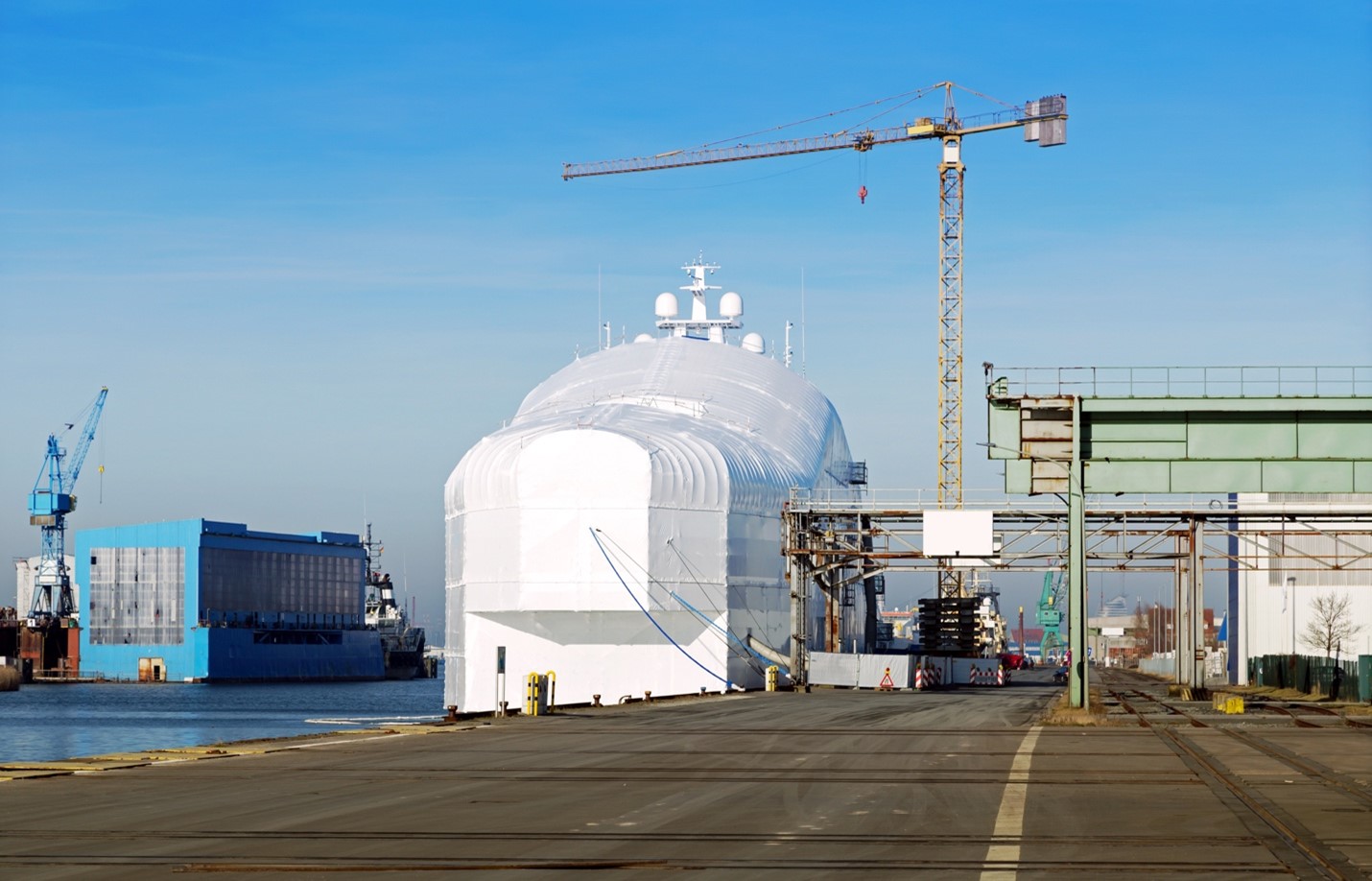
One of the primary criticisms of superyachts is their cost.
These vessels can cost hundreds of millions of dollars to build and maintain, and many people feel that this money could be better spent on more worthy causes, such as charity or environmental conservation efforts.
Many view the opulence of superyachts, with their swimming pools, hot tubs, and helicopter pads, as unnecessary and even immoral in a world where many people struggle to meet their basic needs.
Superyachts often require the use of public resources, such as ports and marinas, which can create conflicts with local communities and disrupt public access to these resources.
These are real and valid considerations but must be offset against the contribution that yachting activity makes to the initial building and ongoing operation of such facilities, and the positive impact such resources can have for communities.
While the perception the superyacht industry is often focused on extravagant luxury is valid, it is important to recognize that this sector contributes significantly to local economies, generating employment opportunities and stimulating economic growth.
Many superyacht owners contribute to charity and conservation efforts, often through their own foundations and initiatives.

Case Study: DAVID GEFFEN
David Geffen, the media mogul and philanthropist, made headlines during the COVID-19 pandemic due to his activities on his superyacht.
Geffen was one of the many wealthy individuals who chose to spend the pandemic on their luxury yachts, away from the stresses of the pandemic.
Geffen’s Lurrsen built superyacht, “Rising Sun,” is one of the largest privately owned yachts in the world, with a length of 138 metres.
While the pandemic raged on, Geffen shared several images on social media of himself and his guests on the yacht, which drew criticism from some who felt it was insensitive to flaunt his luxury lifestyle during a time of widespread suffering and economic hardship.
Despite the controversy, Geffen has also used his wealth and resources to contribute to the medical profession.
He donated $100 million to UCLA to establish the David Geffen Medical Scholarship Fund, which aims to cover the full cost of attendance for medical students, and he also donated $25 million to the Los Angeles County Museum of Art to support its operations during the pandemic.
Geffen’s activities during the pandemic highlight the stark contrast between the lifestyles of the ultra-wealthy and the struggles of the average person during a time of crisis.
Media relations faux pas of this nature are unhelpful to the reputation of industry. Greater awareness of the need for effective stakeholder relations would benefit us all.
HOW CAN WE CHANGE?
By highlighting the industry’s job creation and charitable activities, the superyacht industry can be repositioned as a valuable contributor to society, rather than solely as a symbol of excess and opulence.
It can demonstrate its commitment to social responsibility by supporting charitable causes and philanthropic initiatives.
Many superyacht owners and companies engage in philanthropic efforts, such as donating money to marine conservation organizations or supporting disaster relief efforts. Publicizing these activities more widely can help win hearts and minds.

Case Study: YACHTAID GLOBAL
YachtAid Global is a non-profit organization that was founded in 2006 with the aim of providing disaster relief, humanitarian aid, and conservation management efforts across global coastal communities.
The organization has become a recognized leader in facilitating yachting industry-wide engagement and collaboration in these efforts.
Its mission is to provide industry-wide disaster response leadership through logistics management and consultation, coordinate the acquisition and delivery of humanitarian aid to coastal communities in need or impacted by natural disasters, and facilitate and promote visiting yachts and yacht crews to volunteer and engage in the communities they visit.
“It is incumbent upon the yachting community to care for the people and the environments of the coastal communities around the globe who share with us their land, sea, and spirit.” – Captain Mark Drewelow, Founder, YachtAid Global
YachtAid Global has engaged over 300 yachts across 250 projects in more than 25 countries.
The organization has a global network of partners and superyachts that enable it to provide high impact, immediate relief, and long-term recovery support when natural disasters strike.
YachtAid Global’s humanitarian aid programs include access to clean water, building back better for storm resilient buildings, replacement of educational structures and supplies, medical effort support, or creation of youth at-risk programs.
The organization also has conservation programs that involve environmental and marine life conservation, blue carbon offset efforts conserving mangroves and wetlands, and involving communities in mural creation and environmentally aligned disaster relief methods.
YachtAid Global teamed up with Sir Richard Branson, to provide humanitarian support to the British Virgin Islands (BVI) after it was devastated by Hurricane Irma.
Branson offered his resources, including the 32-metre luxury sailing catamaran, Necker Belle, to aid the relief efforts.
Although his Necker Island Resort was also devastated by the hurricane, Necker Belle managed to leave with her captain to Barbados, escaping any major damages.
The sailing yacht returned to the BVIs with humanitarian supplies offered by Branson to help the locals.
YachtAid Global worked with the British government in the efforts to help rebuild the BVIs.
People Issues
Superyachts are often seen as exclusive and elitist, catering only to the wealthiest members of society.
This exclusivity can be viewed as a negative aspect of the yacht culture and can contribute to feelings of inequality and exclusion.
While this is certainly a valid concern, it is also important to note that the luxury amenities on superyachts are often what make them so attractive to buyers. And it is the desirability of the product which drives an industry which employs many skilled workers, including designers, builders, and crew members, who rely on the industry for their livelihoods.
EMPLOYEE RELATIONS
The superyacht industry has faced questions about behavior and attitudes related to employment practices.
Some are legitimate and require attention. However, certain issues are caused by the actions of a small minority, which are highly visible and newsworthy, leading to negative perceptions of the overall community, despite the respectful behavior of the majority.
Media coverage has highlighted reports of crew injuries, deaths, and assaults, with some sources claiming that working on superyachts is more dangerous than working on oil rigs.
Negative reports of crew injuries, deaths, and assaults, as reported by The Guardian in 2018, highlight the need for legal protections for crew members who may not be afforded the same rights as those on land due to the superyachts’ constant mobility.
Some owners and those in charge of the vessel have also been criticized for their lack of support towards the crew, as exemplified by the absence of owners at the funerals of three young Brits who died while serving their billionaire bosses.
It is imperative that the superyacht industry takes real action to address these concerns and create a safe and supportive environment for all crew members.
ANTI-UHNWI SENTIMENT
The media and public sentiment against ultra-high net worth individuals (UHNWIs) contributes to negative perceptions of the industry.
The superyacht industry also faces scrutiny over legal loopholes that allow for tax evasion, exemplified by Philip Green’s “living it up” on his yacht while his business affairs unraveled.
Green, who owned Topshop, Topman, Dorothy Perkins, Miss Selfridge, and other British retailers through the Arcadia Group, was vilified in Britain for his role in letting BHS collapse, which put pensions for 19,000 workers at risk.
In 2016, Parliament voted to strip Green of his knighthood over a pension deficit scandal. However, he is still a knight, as the vote was symbolic.
In 2018, Green prevented a newspaper from publishing its report on its investigation into allegations of his sexual harassment and bullying.
JOB CREATION AND ECONOMIC BENEFITS
Positive aspects of the industry, such as job creation and economic growth, are often overlooked.
The superyacht industry is a major employer, providing valuable job opportunities for a wide range of skilled workers, such as carpenters, electricians, chefs, and engineers.
Superyacht development creates valuable job opportunities in STEM roles. Many of these jobs are well-paying and offer opportunities for career advancement.
The industry also provides economic benefits to many communities and employs thousands of skilled workers.
In addition to its economic contributions, the superyacht industry also provides an opportunity for owners, guests, and crew to enjoy luxury and adventure on the high seas.
Moreover, owners often contribute in other ways, such as providing disaster relief or supporting scientific research.
HOW CAN WE CHANGE?
One of the key challenges facing the superyacht industry is the need to shift public perceptions away from the narrow stereotype of luxury and ostentation.
This requires a concerted effort to showcase the industry’s wider social and economic impact, and to promote a more nuanced understanding of the diverse ways in which superyachts can serve as a force for good.
There are opportunities for the industry to shift its focus and be viewed as a sector that creates jobs and contributes to society.
The superyacht industry can inspire adventure and exploration, as well as foster a greater appreciation for the natural world and its wonders.
By embracing a more holistic and inclusive vision of its mission and purpose, the industry can position itself as a dynamic and forward-looking force for positive change.
Industry players can leverage the power of communication and marketing to showcase the industry’s positive contributions and dispel negative stereotypes.
To change this reputation, it is necessary for all stakeholders to call out and discourage bad practices, while promoting positive change.
Positive storytelling and public relations can also help showcase the industry’s progress and increase support for continued improvement.
The industry can leverage its resources to create rewarding and sustainable employment opportunities, especially in the areas of design, construction, and maintenance.

Case Study: Motoryacht Gene Machine
Dr Jonathan Rothberg is a renowned American chemical engineer, biologist, inventor, and entrepreneur who developed a high-speed “Next-Gen” DNA sequencing process.
His motivation was the opportunity to impact the lives of the people he loves, leading him to immerse himself in genetics and computers. He invented an entirely new way to rapidly sequence genomes, founded 454 Life Sciences, and brought to market the first new method for gene sequencing since the 1980s.
In 2010, with a new company called Ion Torrent, he continued to advance DNA sequencing by allowing an entire human genome to be decoded on a semiconductor chip for $1,000.
After Ion Torrent was acquired for $725 million, Rothberg decided to develop his own yacht experience. His family, who are fascinated by yacht design, have put in more than 1,000 hours of research and study, and visited many of Europe’s top yards discussing custom builds.
Rothberg aimed to create a superyacht that not only reflected his love for his family but also incorporated his passion for science and technology. Gene Machine is named after his work in genetics and the sequencing of genomes.
The yacht is a family project and incorporates a unique design that includes scientific elements.
In summer 2018, Gene Machine mixed pleasure with business, as Rothberg’s daughter, Elana, is studying earth’s smallest self-replicating organism, bacteriophage, which is densely concentrated in seawater.
Phages are viruses that live in bacteria, and identifying and manipulating their genome could have a monumental medical impact and serve as a canary in the coal mine for global warming.
Gene Machine represents the perfect blend of Rothberg’s passion for science and his love for his family.
The yacht is a stunning masterpiece of design and technology, incorporating elements such as DNA helix-shaped railings and a laboratory on board for Elana to conduct her research.
Rothberg’s achievements in the field of genetics were recognized when he received the National Medal of Technology and Innovation from President Barack Obama at a special White House ceremony in 2016.
Gene Machine brings together science and luxury in a unique and awe-inspiring way.
Scientific Issues
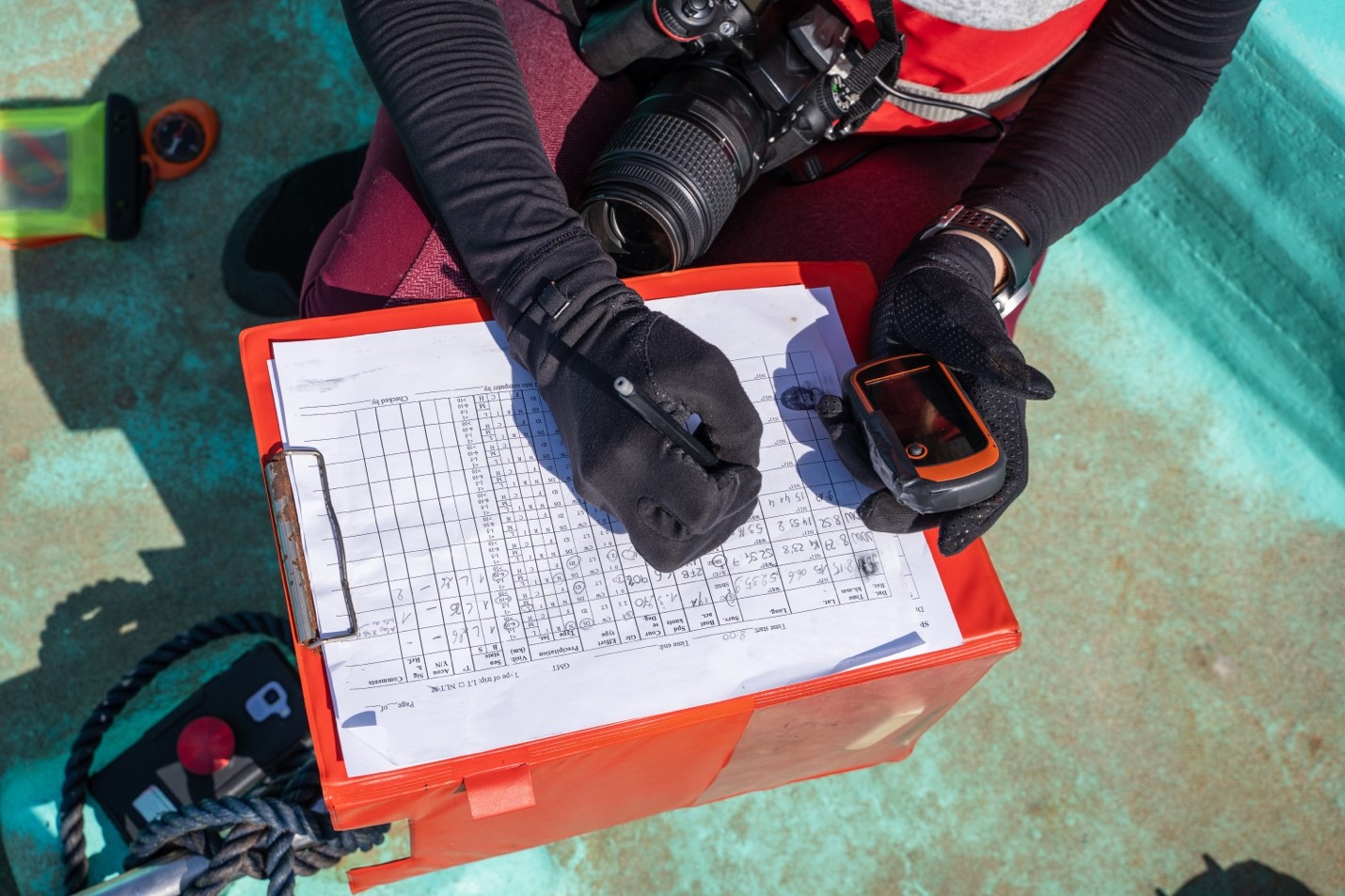
Superyachts have gained a reputation for being environmentally unfriendly.
Superyachts are notorious for their high levels of fuel consumption and emissions, which can have a significant impact on the environment through greenhouse gas emissions and other pollutants.
This is partly due to the resources and materials used by designers and builders, some of which are from unethical or unsustainable sources.
Teak wood from Myanmar is still used in some yachts despite being associated with deforestation and human rights abuses. And, single-use plastics are often used in yachting, contributing to ocean pollution.
News stories have highlighted the negative impact of superyachts on the environment, from damaging reefs to waste dumping.
Although there is a drive for eco-friendly designs, progress has been slow. It is widely recognized that inaction in this area will result in loss of business, if not rectified soon.
In 2022, climate activists from the pressure group Attac staged a protest at Port Vauban Antibes, a French Riviera port with 1,500 berths, including 18 for superyachts.
The group blocked the gate leading to a quay at the port for an hour, unfurling banners with slogans such as “Disarm climate criminals” and “Don’t let the ultra-rich destroy the planet”.
They also launched a petition against private jet and superyacht owners which gained 10,000 signatures.
Attac spokesperson Raphael Pradeau criticised the wealthy for not doing enough to combat climate change while putting pressure on the less well-off.
Many of the accusations levelled are valid concerns. It is important for the industry to continue to make strides in reducing its carbon footprint and minimizing its impact on the natural world.
However, it is also important to note that the superyacht industry has made significant progress in recent years in developing more environmentally friendly technologies and practices.
Many superyacht owners are investing in green technologies such as hybrid engines, solar panels, and energy-efficient lighting.
Some superyacht owners are actively involved in marine conservation efforts, using their vessels to support scientific research and environmental awareness campaigns.
For all the challenges, there are positives to consider. For instance, superyachts have played a role in mapping the ocean floor. And innovations developed in the superyacht industry result in trickle-down effects in other sectors, like how Formula One influences the automotive industry.

Case Study: PAUL ALLEN
The late Microsoft co-founder, Paul Allen, owned a Superyacht called the Octopus. Allen was known for his philanthropic efforts, and he used his yacht as a platform to support scientific research and conservation efforts.
He also donated the yacht to the search for the wreckage of the USS Indianapolis, which was sunk during World War II. Allen’s team used remotely operated vehicles (ROVs) to explore the deep waters and found the wreckage about 18,000 feet below the surface.
The 126-meter Superyacht Octopus was also used to help with a coral reef restoration project in the Cayman Islands. The yacht’s crew worked alongside scientists and conservationists to transplant coral fragments onto damaged reefs, helping to revitalize the ecosystem.
HOW CAN WE CHANGE?
While superyachts may not currently be eco-friendly, there is growing awareness and pressure to improve sustainability.
There is concern that very real sustainability efforts may be perceived as mere “greenwashing” without actual results.
The superyacht industry can play an important role in promoting scientific research and technological innovation.
This includes investing in new technologies that improve sustainability, energy efficiency, and environmental protection, as well as partnering with academic institutions to advance scientific knowledge and expertise.
Achieving this goal will require a concerted effort by all stakeholders in the industry to find and implement practical solutions.
It is crucial to see tangible examples. We need zero-carbon yachts in the water, to prove that eco-friendly superyachting is possible.
The industry can also promote the technological advancements that have been made in superyacht design and engineering. These advancements have made superyachts more environmentally friendly and energy-efficient, thereby reducing their carbon footprint.
Ultimately, by promoting these aspects of the industry, the superyacht sector can reposition itself as a responsible and beneficial contributor to society.
Such a shift in perspective would benefit the industry by attracting a broader range of customers and would also improve its image in the eyes of the public.
The opportunities for the businesses who can make this happen are vast.

Case Study: TRITON SUBMERSIBLES
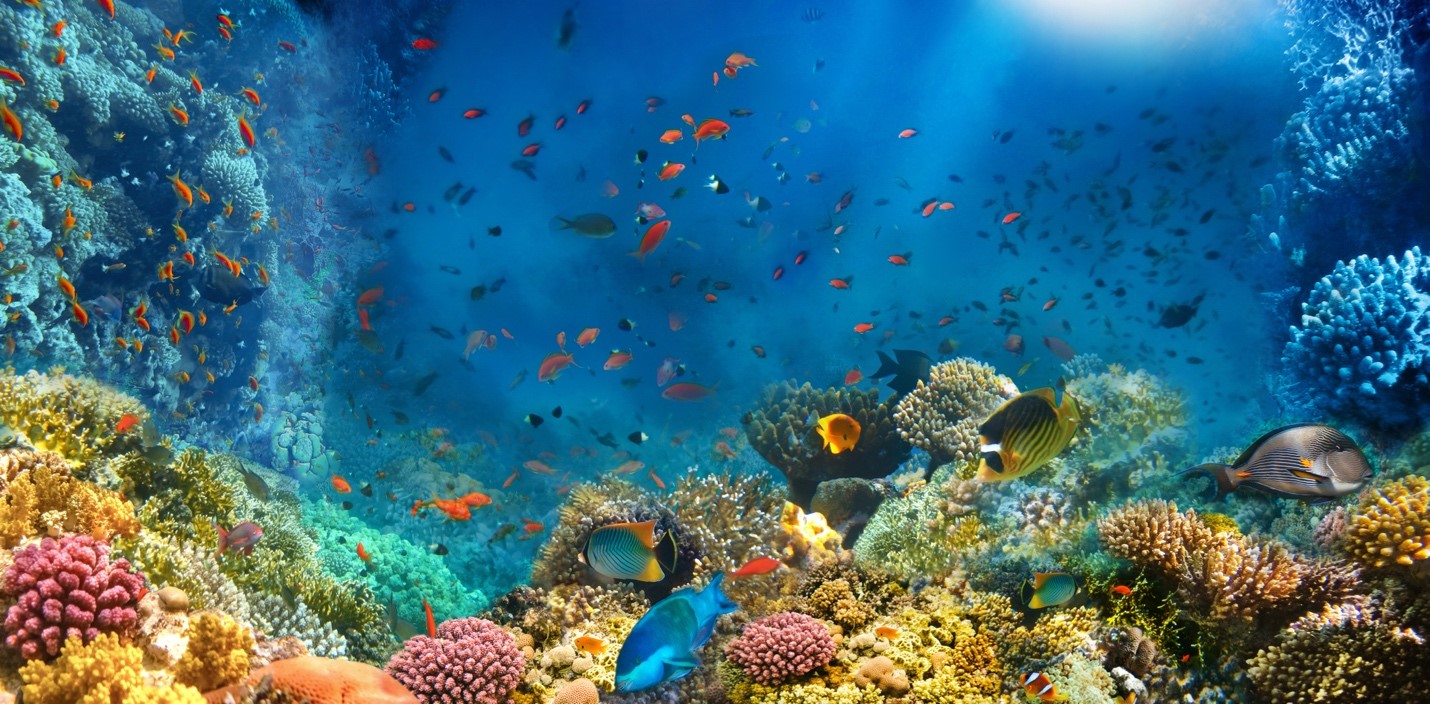
Florida based Triton Submersibles is a manufacturer of luxury submersibles and underwater exploration vehicles. They sold about 30 submersibles last year, with price tags of up to £30m.
In recent years, Triton has gained significant traction among the world’s ultra-rich, who have been inspired by the BBC’s Blue Planet series to explore the ocean’s depths. Triton craft were used to film some of the footage included in that series.
Triton’s success is based on meeting the needs of this niche market and the strategies it employed to gain a competitive advantage.
The global super-rich are increasingly investing in private submersibles for deep ocean exploration and, as a bonus, security purposes. Including as a means of escape if their superyacht comes under attack.
Triton’s challenge was to develop and market a range of luxury submersibles that met the ultra-rich’s needs for deep ocean exploration and security. All balanced with the desire for luxury and comfort and the demands of deep-sea exploration, including durability, reliability, and safety.
Triton’s strategy was to focus on the superyacht owner market, emphasizing the comfort and amenities of its submersibles. Triton designed its submersibles to be spacious and comfortable, with large viewing domes, air conditioning, and comfortable seating.
Triton also incorporated advanced technology, such as robotic arms and sonar systems, to enhance the submersibles’ exploration capabilities.
Triton leveraged partnerships with high-profile clients, such as Sir Richard Branson, Paul Allen, and Ray Dalio, to generate publicity and build brand awareness.
Triton provided these clients with customized submersibles that met their unique needs, such as integrating the submersibles into their superyachts.
Triton also collaborated with these clients on ocean exploration projects, which generated positive media coverage and highlighted the submersibles’ capabilities, not least the BBC’s flagship show, Blue Planet.
Ray Dalio said: “I am wild about ocean exploration. I explore the ocean personally while tagging along with great ocean scientists and explorers, and I financially support ocean exploration that goes on way beyond me – including sharing these thrills with the public through various media outlets and museum exhibits.”
Dalio has two submersibles, named Nadir and Deep Rover. They are transported on Alucia, his expedition-focused superyacht which is valued at $50 million.

Exercise
• Financial
• People
• Scientific
Project Studies
Project Study (Part 1) – Customer Service
The Head of this Department is to provide a detailed report relating to the Introduction to the Superyacht Industry process that has been implemented within their department, together with all key stakeholders, as a result of conducting this workshop, incorporating process: planning; development; implementation; management; and review. Your process should feature the following 10 parts:
01. Find Your Superyacht Opportunity
02. SYC History of the Superyacht Industry
03. SYC Present Superyacht Market Situation
04. SYC Superyacht Market Outlook
05. SYC Superyacht Industry Stakeholders
06. SYC UHNWI Clientele
07. SYC Driving Forces of the Superyacht Industry
08. SYC Superyacht Etiquette
09. SYC Superyacht Industry Hubs
10. SYC Driving Forces of the Superyacht Industry
Please include the results of the initial evaluation and assessment.
Project Study (Part 2) – E-Business
The Head of this Department is to provide a detailed report relating to the Introduction to the Superyacht Industry process that has been implemented within their department, together with all key stakeholders, as a result of conducting this workshop, incorporating process: planning; development; implementation; management; and review. Your process should feature the following 10 parts:
01. Find Your Superyacht Opportunity
02. SYC History of the Superyacht Industry
03. SYC Present Superyacht Market Situation
04. SYC Superyacht Market Outlook
05. SYC Superyacht Industry Stakeholders
06. SYC UHNWI Clientele
07. SYC Driving Forces of the Superyacht Industry
08. SYC Superyacht Etiquette
09. SYC Superyacht Industry Hubs
10. SYC Driving Forces of the Superyacht Industry
Please include the results of the initial evaluation and assessment.
Project Study (Part 3) – Finance
The Head of this Department is to provide a detailed report relating to the Introduction to the Superyacht Industry process that has been implemented within their department, together with all key stakeholders, as a result of conducting this workshop, incorporating process: planning; development; implementation; management; and review. Your process should feature the following 10 parts:
01. Find Your Superyacht Opportunity
02. SYC History of the Superyacht Industry
03. SYC Present Superyacht Market Situation
04. SYC Superyacht Market Outlook
05. SYC Superyacht Industry Stakeholders
06. SYC UHNWI Clientele
07. SYC Driving Forces of the Superyacht Industry
08. SYC Superyacht Etiquette
09. SYC Superyacht Industry Hubs
10. SYC Driving Forces of the Superyacht Industry
Please include the results of the initial evaluation and assessment.
Project Study (Part 4) – Globalization
The Head of this Department is to provide a detailed report relating to the Introduction to the Superyacht Industry process that has been implemented within their department, together with all key stakeholders, as a result of conducting this workshop, incorporating process: planning; development; implementation; management; and review. Your process should feature the following 10 parts:
01. Find Your Superyacht Opportunity
02. SYC History of the Superyacht Industry
03. SYC Present Superyacht Market Situation
04. SYC Superyacht Market Outlook
05. SYC Superyacht Industry Stakeholders
06. SYC UHNWI Clientele
07. SYC Driving Forces of the Superyacht Industry
08. SYC Superyacht Etiquette
09. SYC Superyacht Industry Hubs
10. SYC Driving Forces of the Superyacht Industry
Please include the results of the initial evaluation and assessment.
Project Study (Part 5) – Human Resources
The Head of this Department is to provide a detailed report relating to the Introduction to the Superyacht Industry process that has been implemented within their department, together with all key stakeholders, as a result of conducting this workshop, incorporating process: planning; development; implementation; management; and review. Your process should feature the following 10 parts:
01. Find Your Superyacht Opportunity
02. SYC History of the Superyacht Industry
03. SYC Present Superyacht Market Situation
04. SYC Superyacht Market Outlook
05. SYC Superyacht Industry Stakeholders
06. SYC UHNWI Clientele
07. SYC Driving Forces of the Superyacht Industry
08. SYC Superyacht Etiquette
09. SYC Superyacht Industry Hubs
10. SYC Driving Forces of the Superyacht Industry
Please include the results of the initial evaluation and assessment.
Project Study (Part 6) – Information Technology
The Head of this Department is to provide a detailed report relating to the Introduction to the Superyacht Industry process that has been implemented within their department, together with all key stakeholders, as a result of conducting this workshop, incorporating process: planning; development; implementation; management; and review. Your process should feature the following 10 parts:
01. Find Your Superyacht Opportunity
02. SYC History of the Superyacht Industry
03. SYC Present Superyacht Market Situation
04. SYC Superyacht Market Outlook
05. SYC Superyacht Industry Stakeholders
06. SYC UHNWI Clientele
07. SYC Driving Forces of the Superyacht Industry
08. SYC Superyacht Etiquette
09. SYC Superyacht Industry Hubs
10. SYC Driving Forces of the Superyacht Industry
Please include the results of the initial evaluation and assessment.
Project Study (Part 7) – Legal
The Head of this Department is to provide a detailed report relating to the Introduction to the Superyacht Industry process that has been implemented within their department, together with all key stakeholders, as a result of conducting this workshop, incorporating process: planning; development; implementation; management; and review. Your process should feature the following 10 parts:
01. Find Your Superyacht Opportunity
02. SYC History of the Superyacht Industry
03. SYC Present Superyacht Market Situation
04. SYC Superyacht Market Outlook
05. SYC Superyacht Industry Stakeholders
06. SYC UHNWI Clientele
07. SYC Driving Forces of the Superyacht Industry
08. SYC Superyacht Etiquette
09. SYC Superyacht Industry Hubs
10. SYC Driving Forces of the Superyacht Industry
Please include the results of the initial evaluation and assessment.
Project Study (Part 8) – Management
The Head of this Department is to provide a detailed report relating to the Introduction to the Superyacht Industry process that has been implemented within their department, together with all key stakeholders, as a result of conducting this workshop, incorporating process: planning; development; implementation; management; and review. Your process should feature the following 10 parts:
01. Find Your Superyacht Opportunity
02. SYC History of the Superyacht Industry
03. SYC Present Superyacht Market Situation
04. SYC Superyacht Market Outlook
05. SYC Superyacht Industry Stakeholders
06. SYC UHNWI Clientele
07. SYC Driving Forces of the Superyacht Industry
08. SYC Superyacht Etiquette
09. SYC Superyacht Industry Hubs
10. SYC Driving Forces of the Superyacht Industry
Please include the results of the initial evaluation and assessment.

Project Study (Part 9) – Marketing
The Head of this Department is to provide a detailed report relating to the Introduction to the Superyacht Industry process that has been implemented within their department, together with all key stakeholders, as a result of conducting this workshop, incorporating process: planning; development; implementation; management; and review. Your process should feature the following 10 parts:
01. Find Your Superyacht Opportunity
02. SYC History of the Superyacht Industry
03. SYC Present Superyacht Market Situation
04. SYC Superyacht Market Outlook
05. SYC Superyacht Industry Stakeholders
06. SYC UHNWI Clientele
07. SYC Driving Forces of the Superyacht Industry
08. SYC Superyacht Etiquette
09. SYC Superyacht Industry Hubs
10. SYC Driving Forces of the Superyacht Industry
Please include the results of the initial evaluation and assessment.

Project Study (Part 10) – Production
The Head of this Department is to provide a detailed report relating to the Introduction to the Superyacht Industry process that has been implemented within their department, together with all key stakeholders, as a result of conducting this workshop, incorporating process: planning; development; implementation; management; and review. Your process should feature the following 10 parts:
01. Find Your Superyacht Opportunity
02. SYC History of the Superyacht Industry
03. SYC Present Superyacht Market Situation
04. SYC Superyacht Market Outlook
05. SYC Superyacht Industry Stakeholders
06. SYC UHNWI Clientele
07. SYC Driving Forces of the Superyacht Industry
08. SYC Superyacht Etiquette
09. SYC Superyacht Industry Hubs
10. SYC Driving Forces of the Superyacht Industry
Please include the results of the initial evaluation and assessment.

Project Study (Part 11) – Logistics
The Head of this Department is to provide a detailed report relating to the Introduction to the Superyacht Industry process that has been implemented within their department, together with all key stakeholders, as a result of conducting this workshop, incorporating process: planning; development; implementation; management; and review. Your process should feature the following 10 parts:
01. Find Your Superyacht Opportunity
02. SYC History of the Superyacht Industry
03. SYC Present Superyacht Market Situation
04. SYC Superyacht Market Outlook
05. SYC Superyacht Industry Stakeholders
06. SYC UHNWI Clientele
07. SYC Driving Forces of the Superyacht Industry
08. SYC Superyacht Etiquette
09. SYC Superyacht Industry Hubs
10. SYC Driving Forces of the Superyacht Industry
Please include the results of the initial evaluation and assessment.

Project Study (Part 12) – Education
The Head of this Department is to provide a detailed report relating to the Introduction to the Superyacht Industry process that has been implemented within their department, together with all key stakeholders, as a result of conducting this workshop, incorporating process: planning; development; implementation; management; and review. Your process should feature the following 10 parts:
01. Find Your Superyacht Opportunity
02. SYC History of the Superyacht Industry
03. SYC Present Superyacht Market Situation
04. SYC Superyacht Market Outlook
05. SYC Superyacht Industry Stakeholders
06. SYC UHNWI Clientele
07. SYC Driving Forces of the Superyacht Industry
08. SYC Superyacht Etiquette
09. SYC Superyacht Industry Hubs
10. SYC Driving Forces of the Superyacht Industry
Please include the results of the initial evaluation and assessment.
Program Benefits
Marketing
- Improved research
- Product innovation
- Competitive advantage
- Product launch
- Customer experience
- Business development
- Improved globalization
- Strategic engagement
- Future readiness
- Market growth
Senior Leadership
- Competitive advantage
- Revenue generation
- Profitability gains
- Value creation
- Strategic direction
- Reduced costs
- Innovation
- Improved relationships
- Process Improvements
- Team effectiveness
Management
- Business flexibility
- Company resilience
- Decreased costs
- Effective alliances
- Global localization
- Improved teamwork
- Innovation
- Resource leverage
- Success planning
- Engaged Workforce
Client Telephone Conference (CTC)
If you have any questions or if you would like to arrange a Client Telephone Conference (CTC) to discuss this particular Unique Consulting Service Proposition (UCSP) in more detail, please CLICK HERE.

























